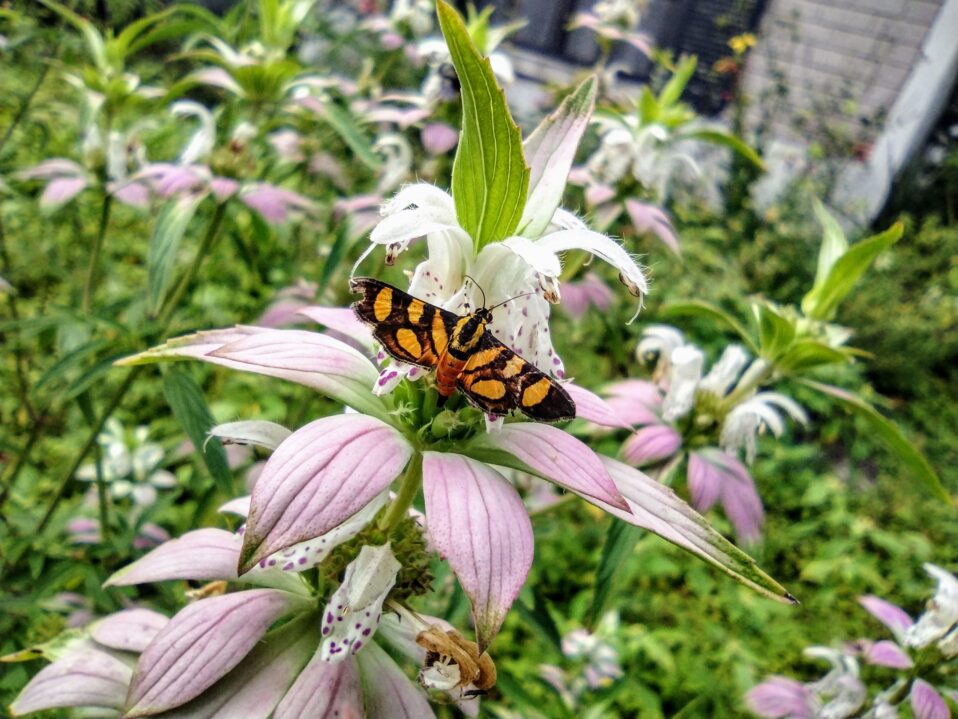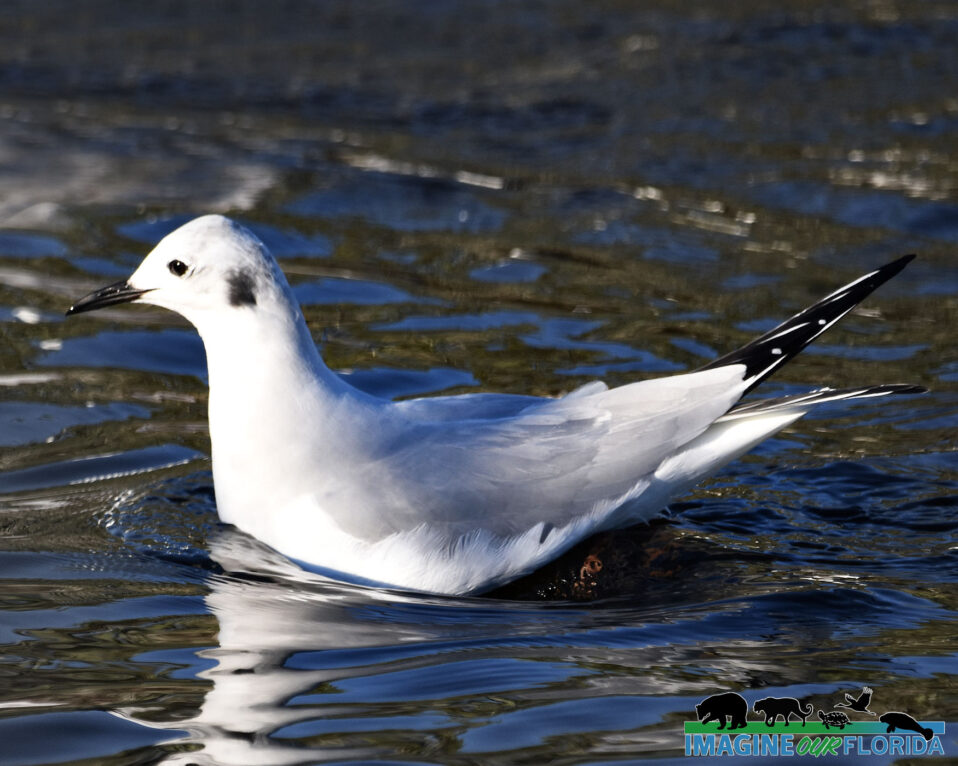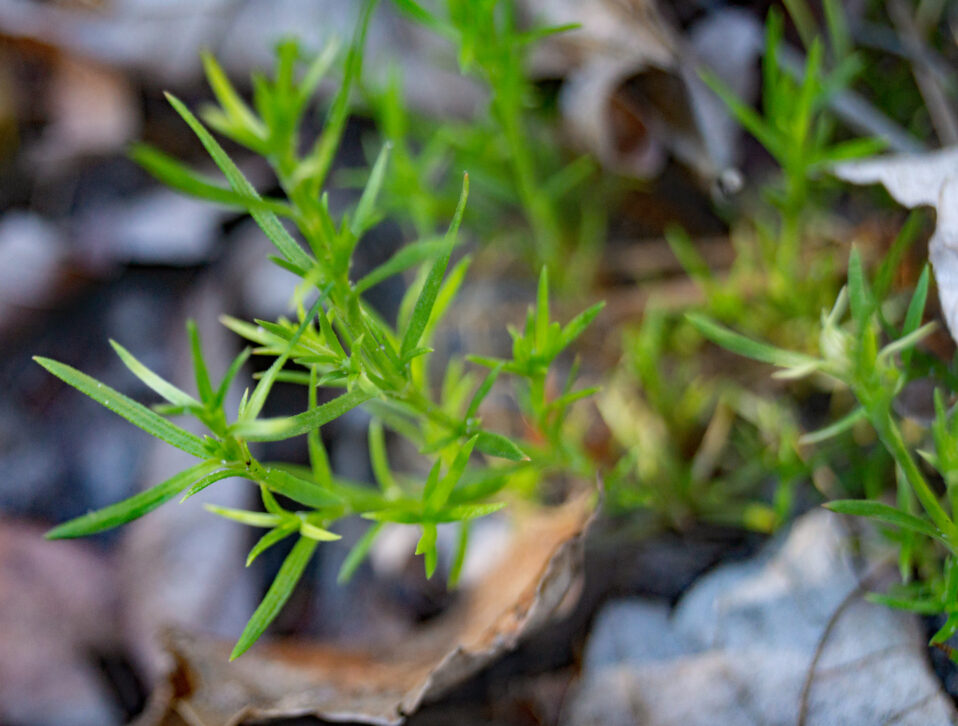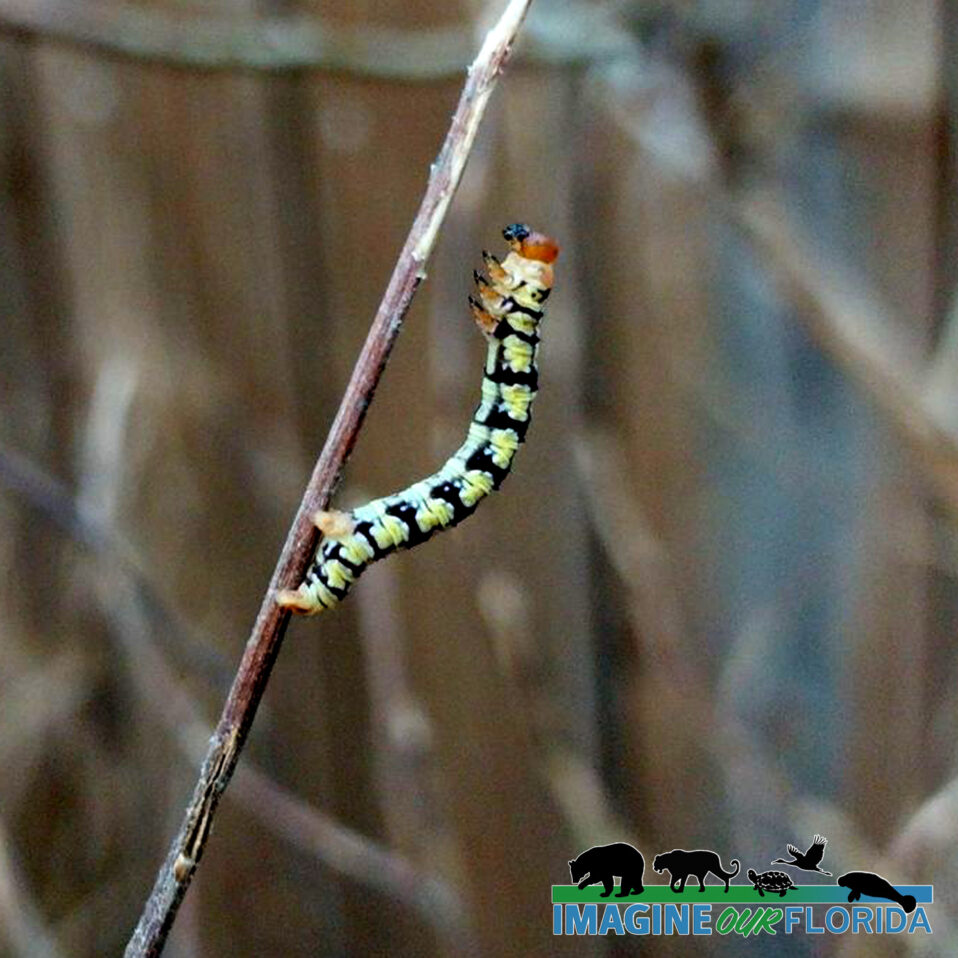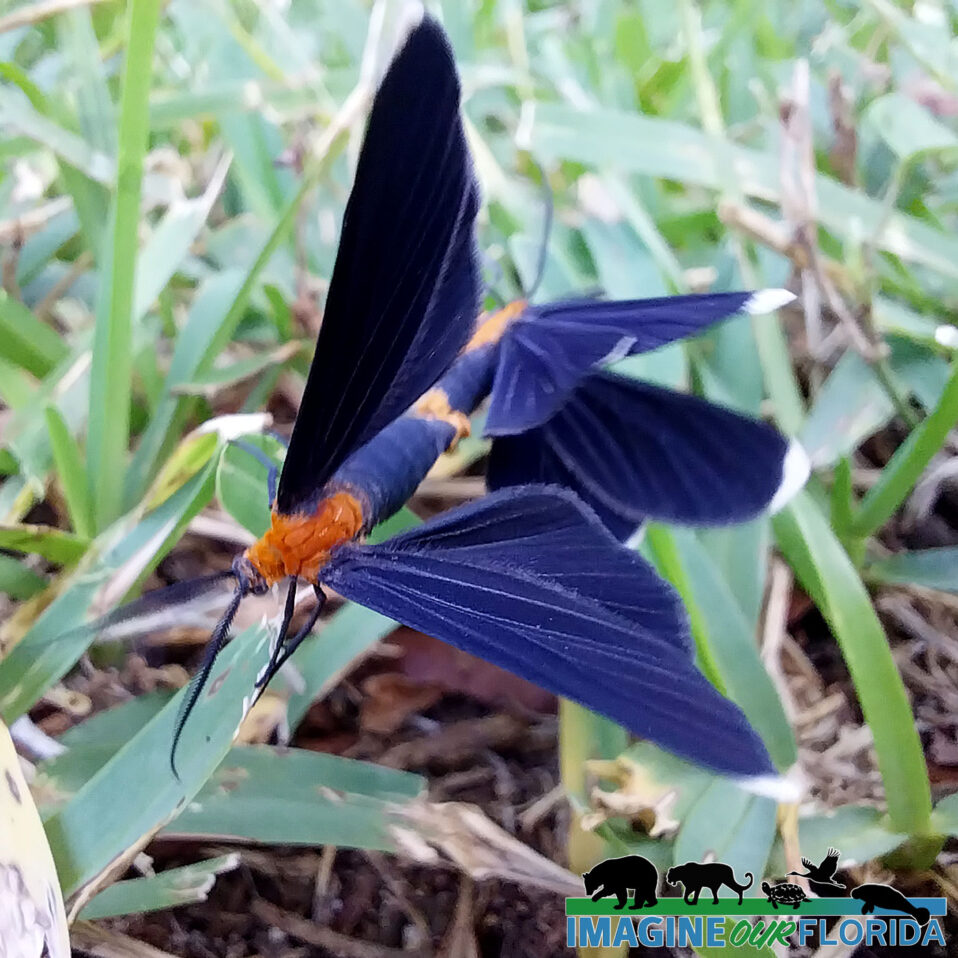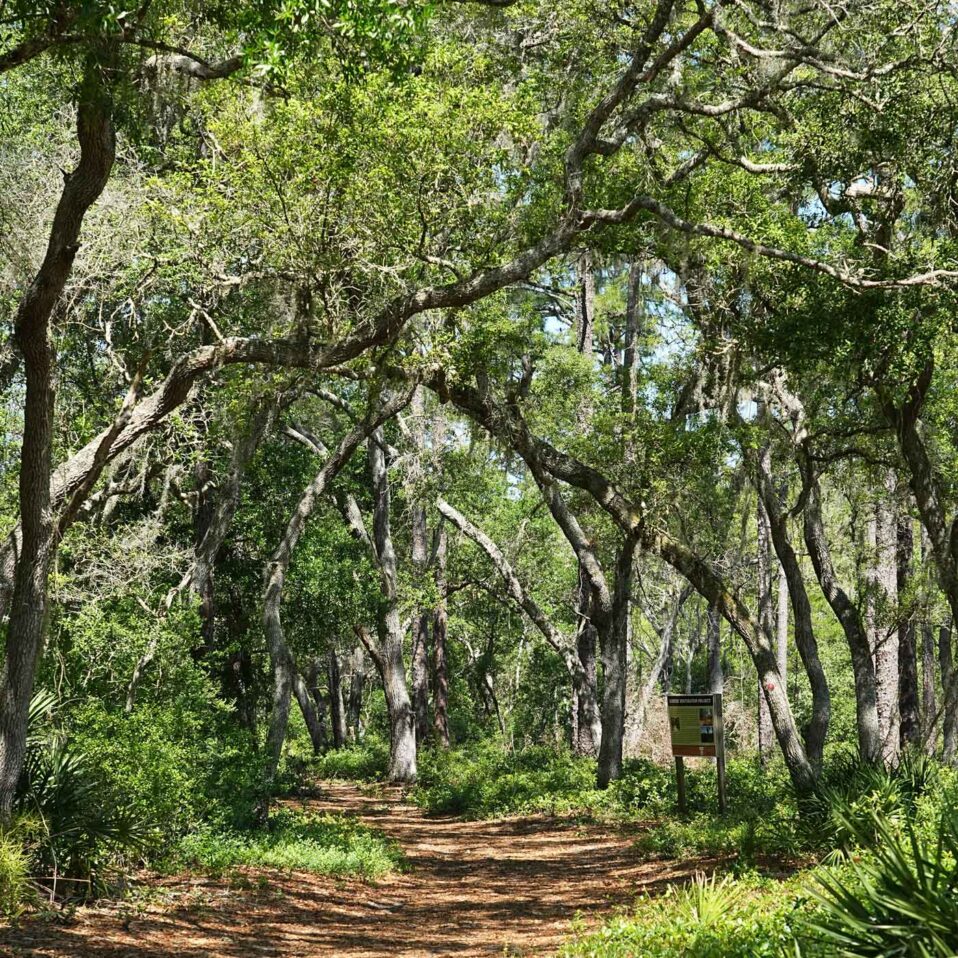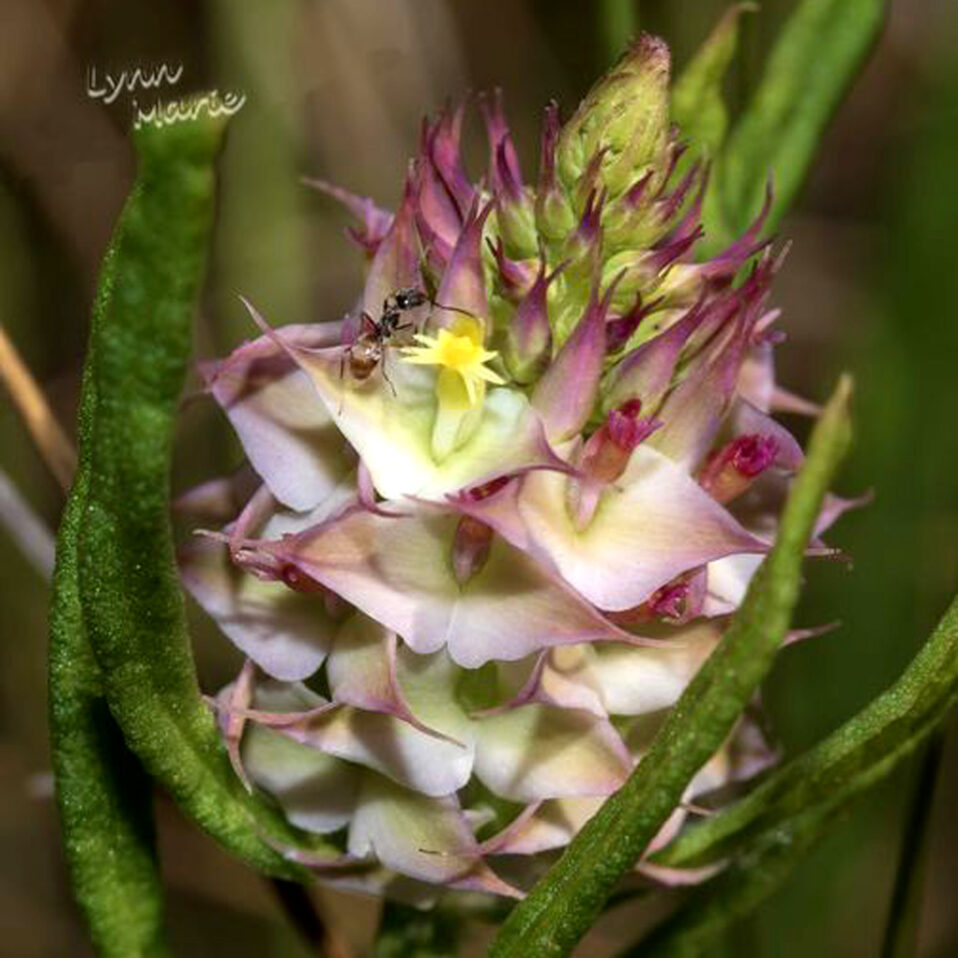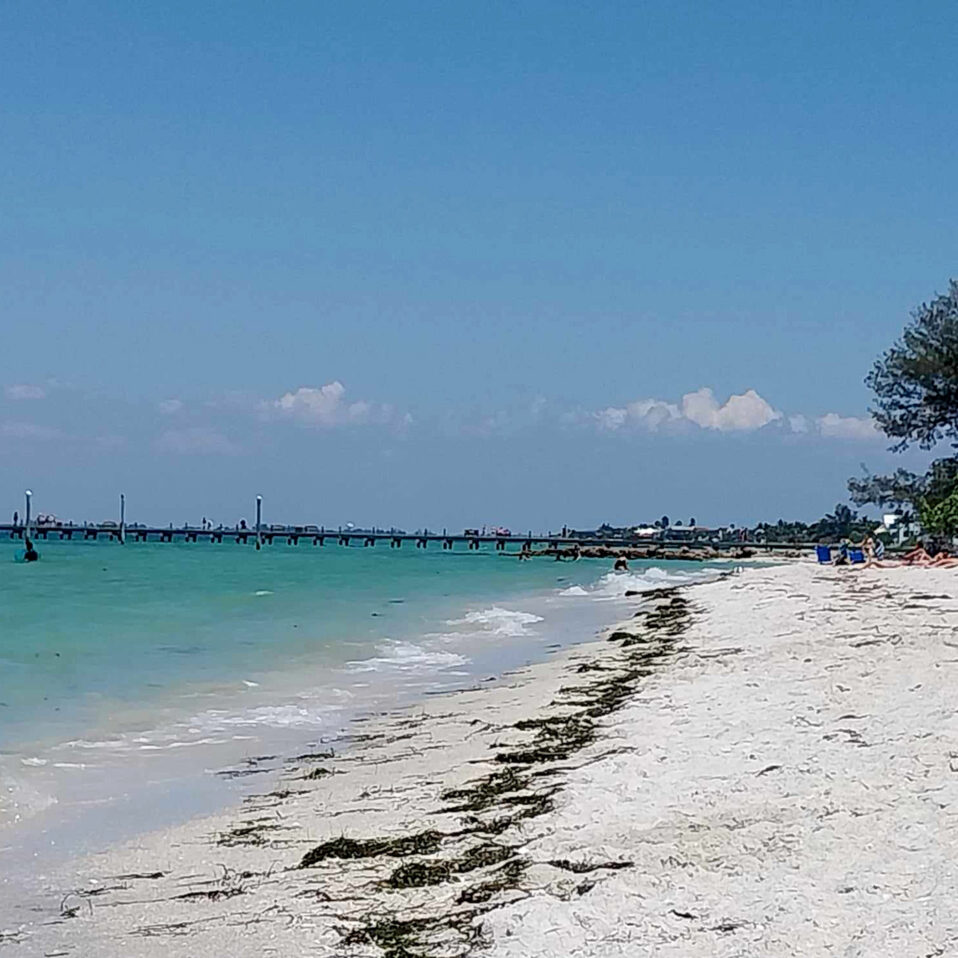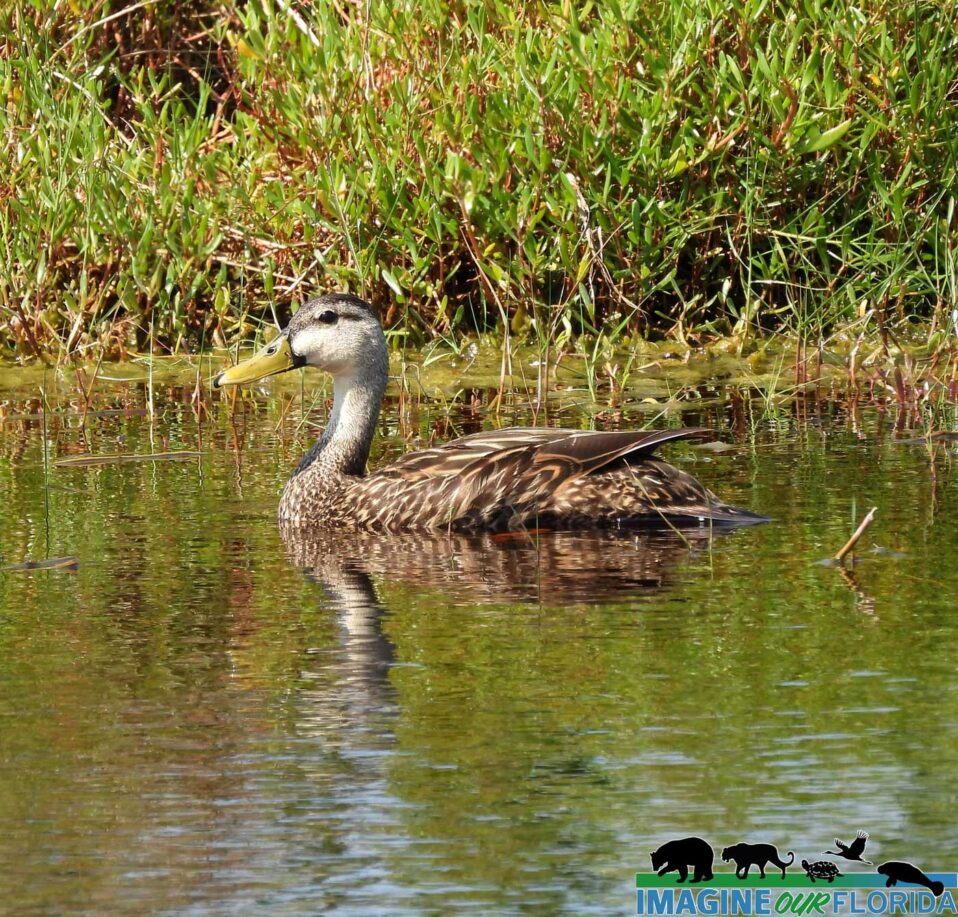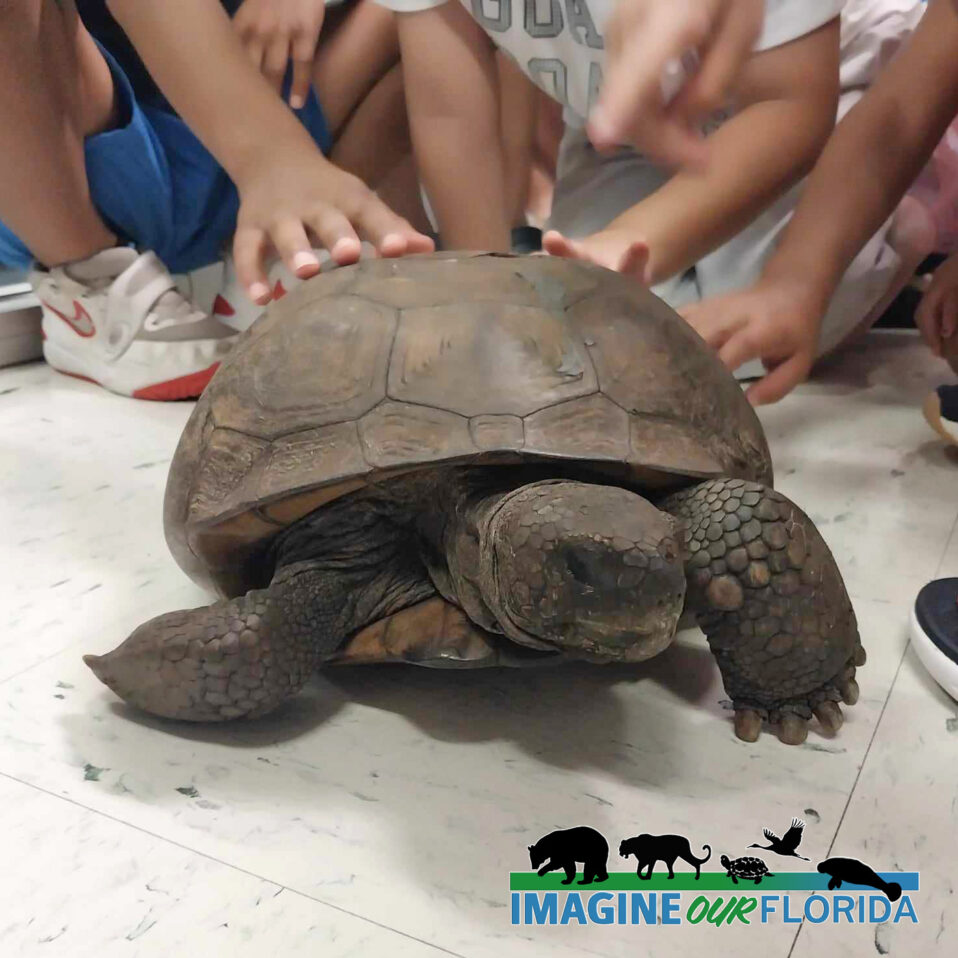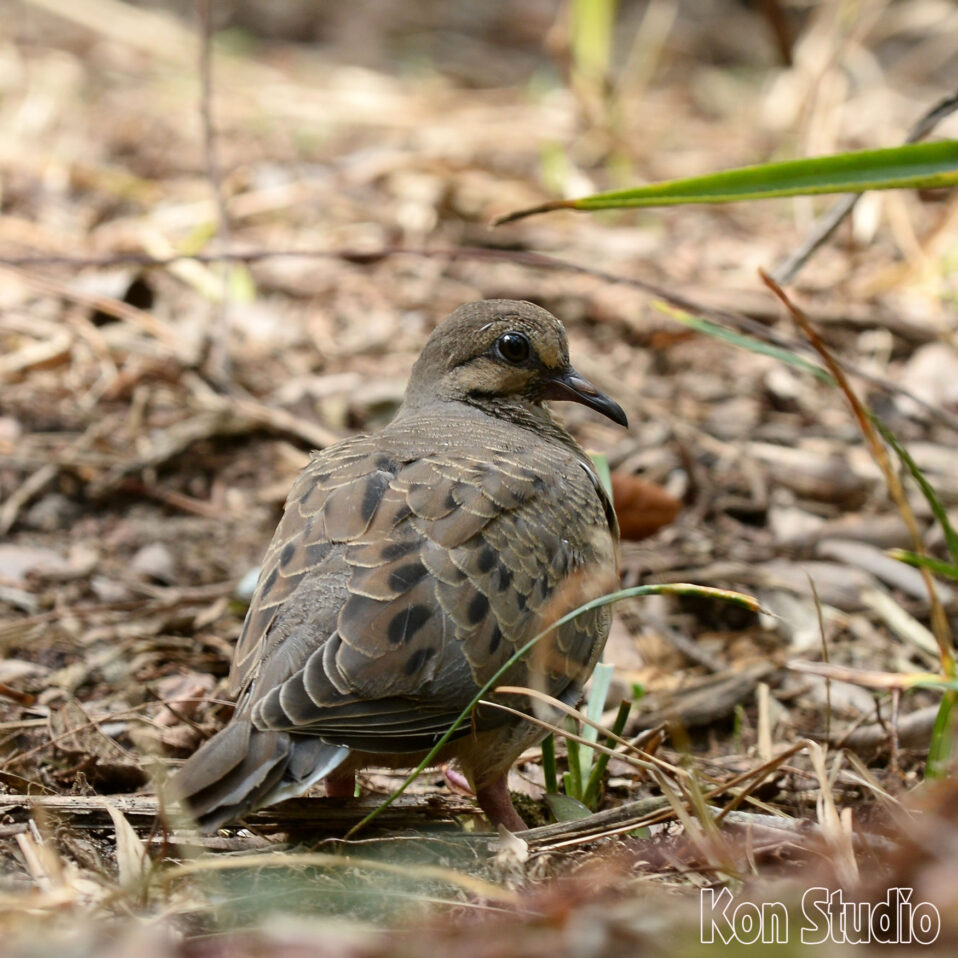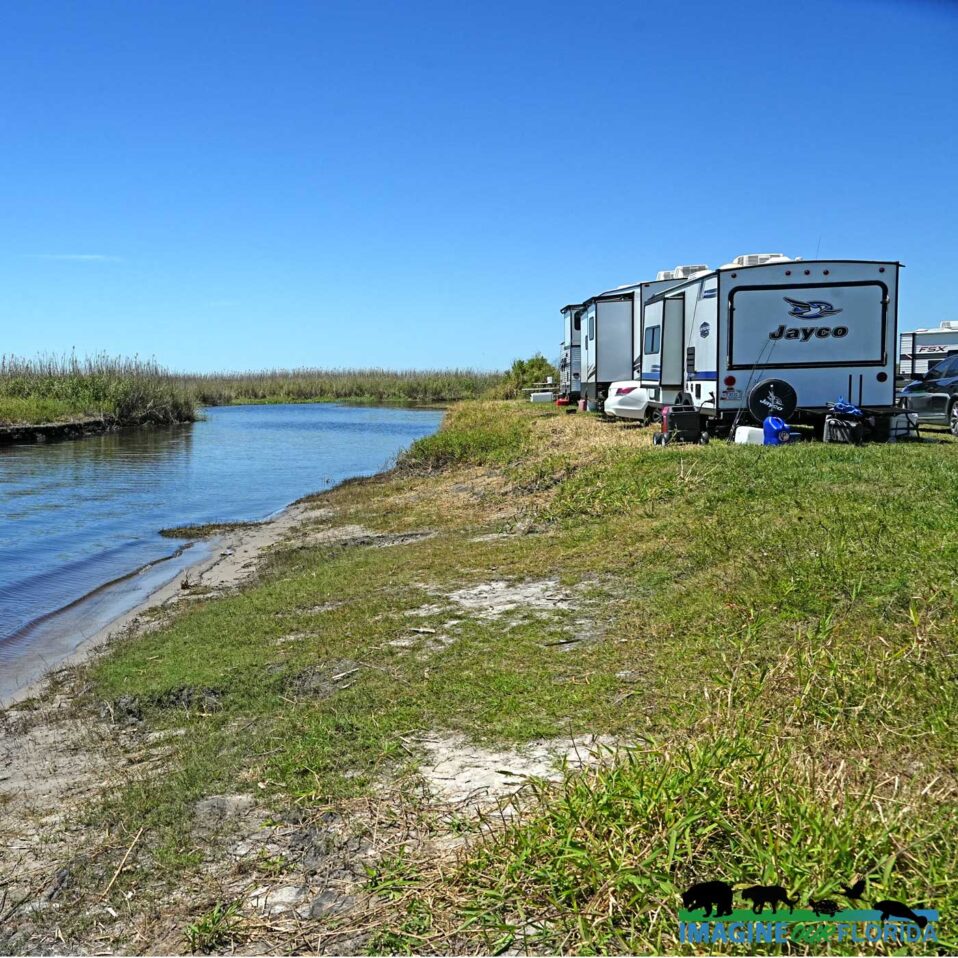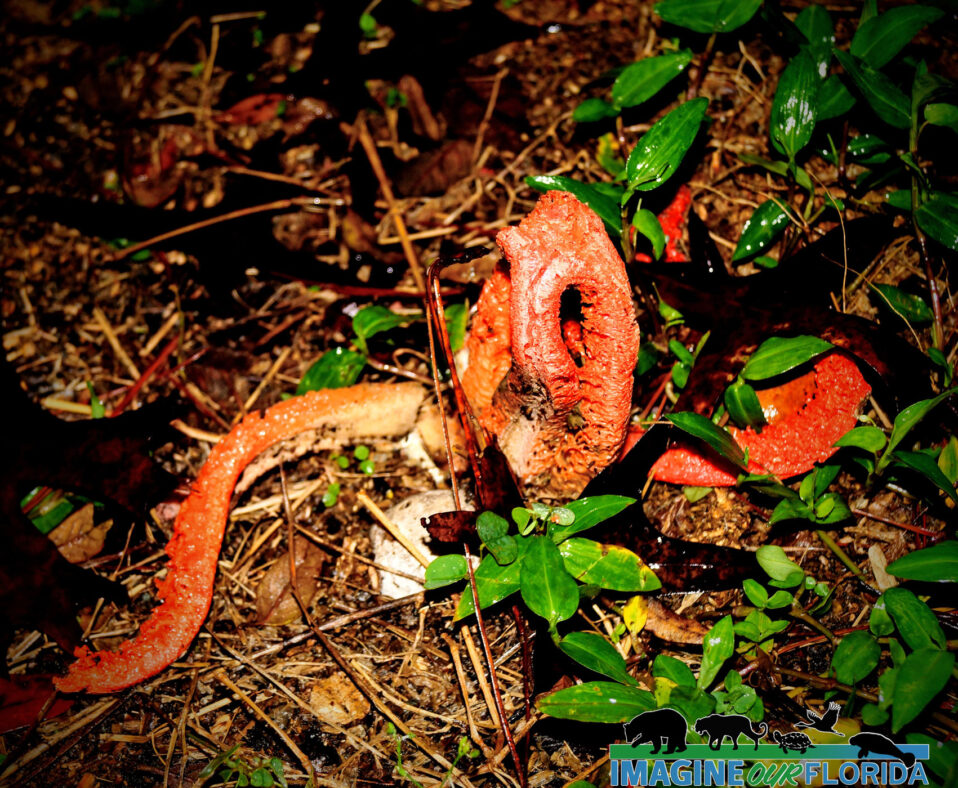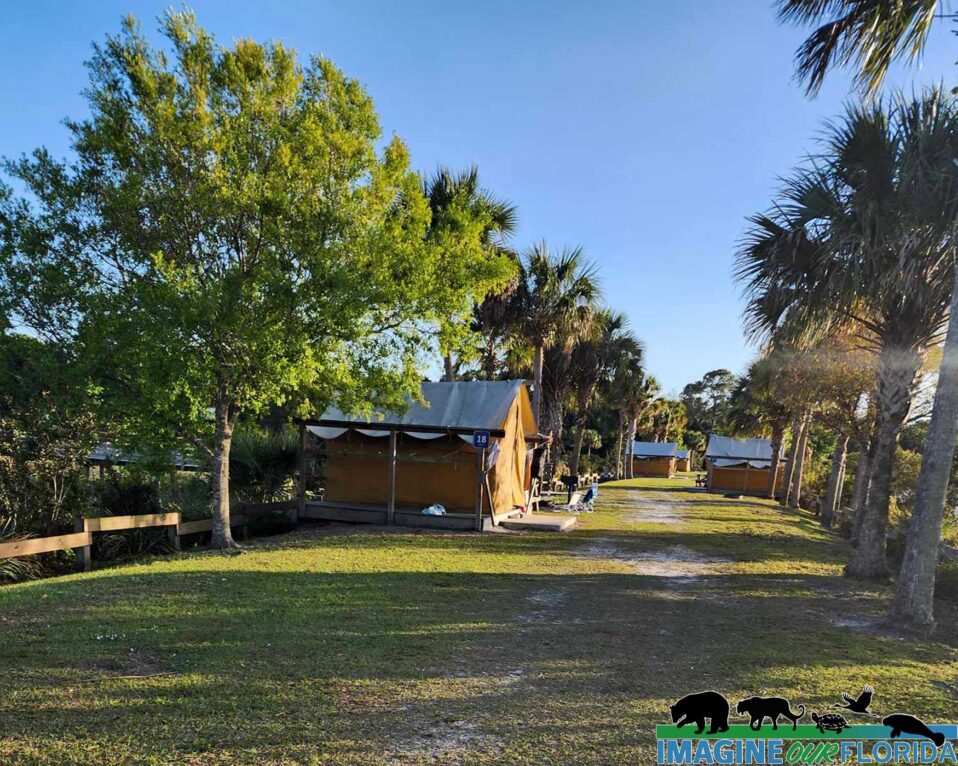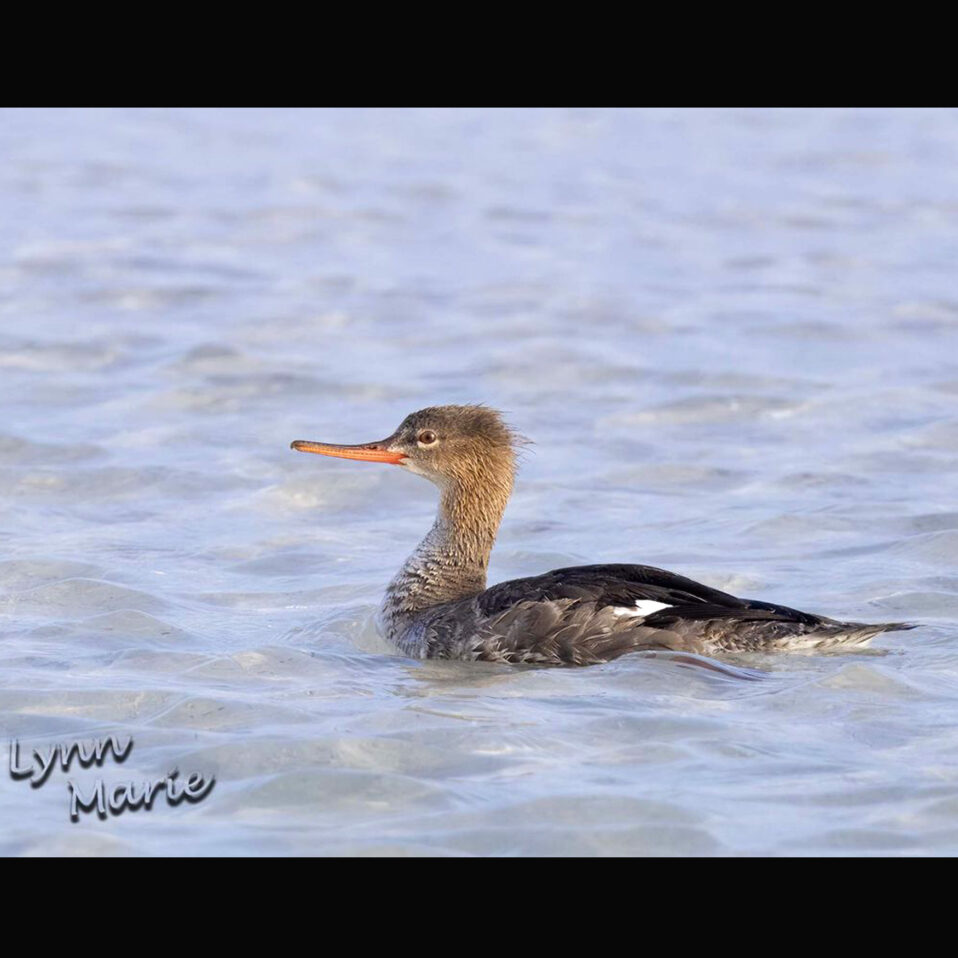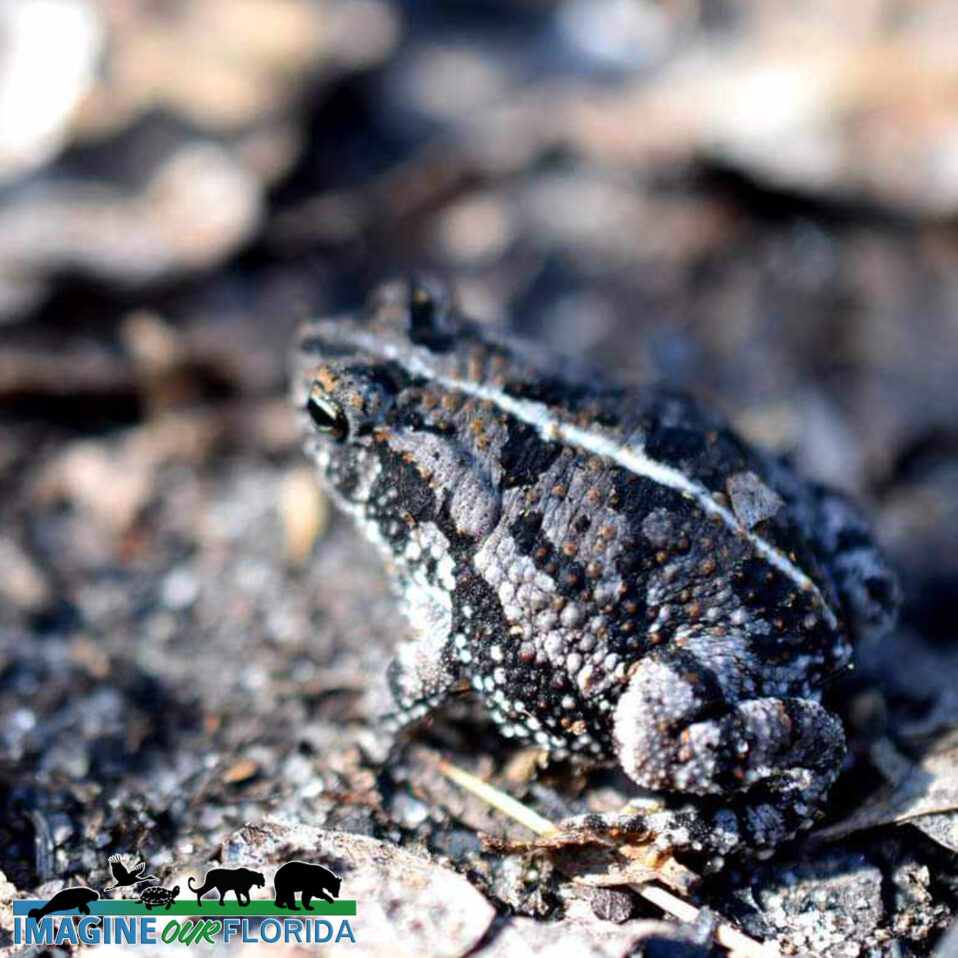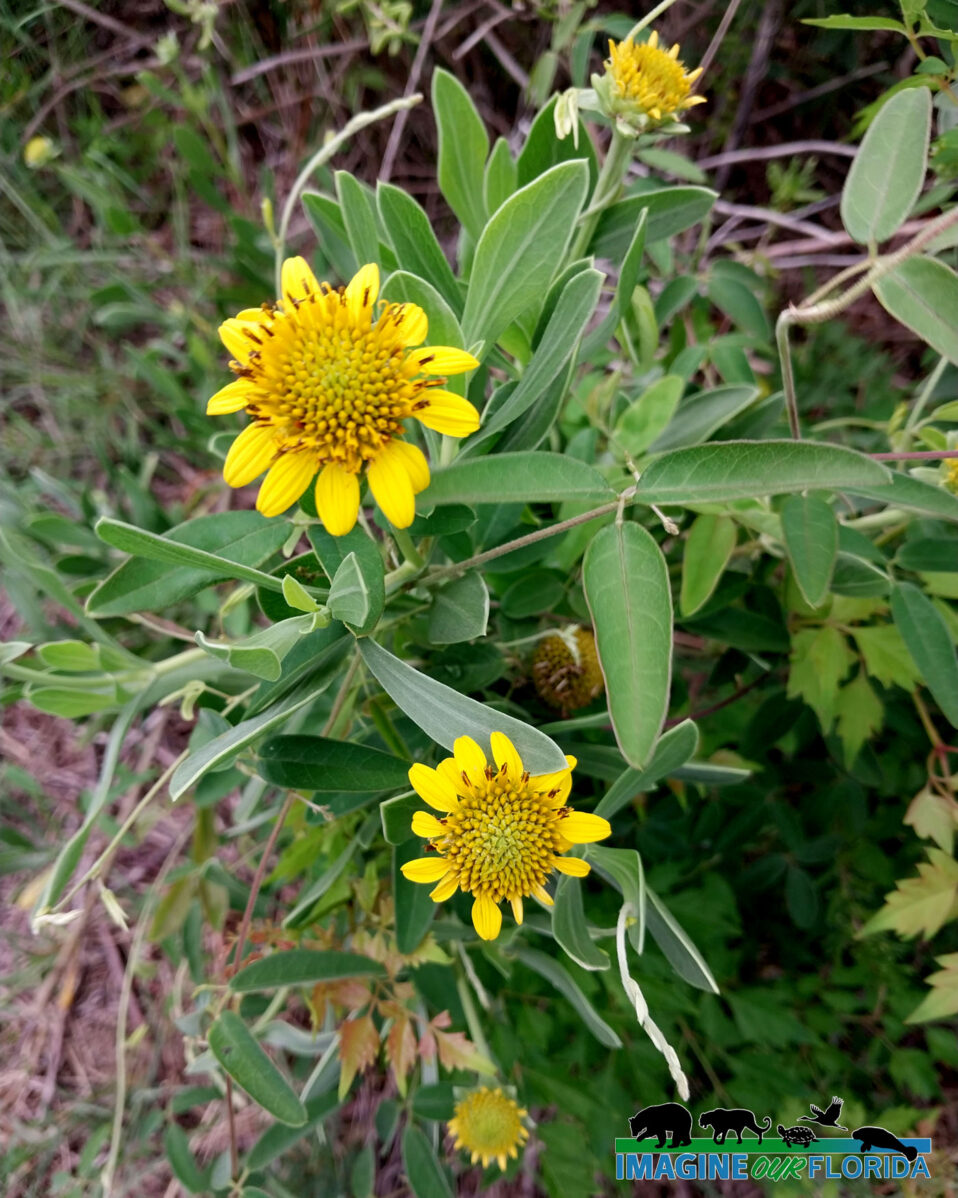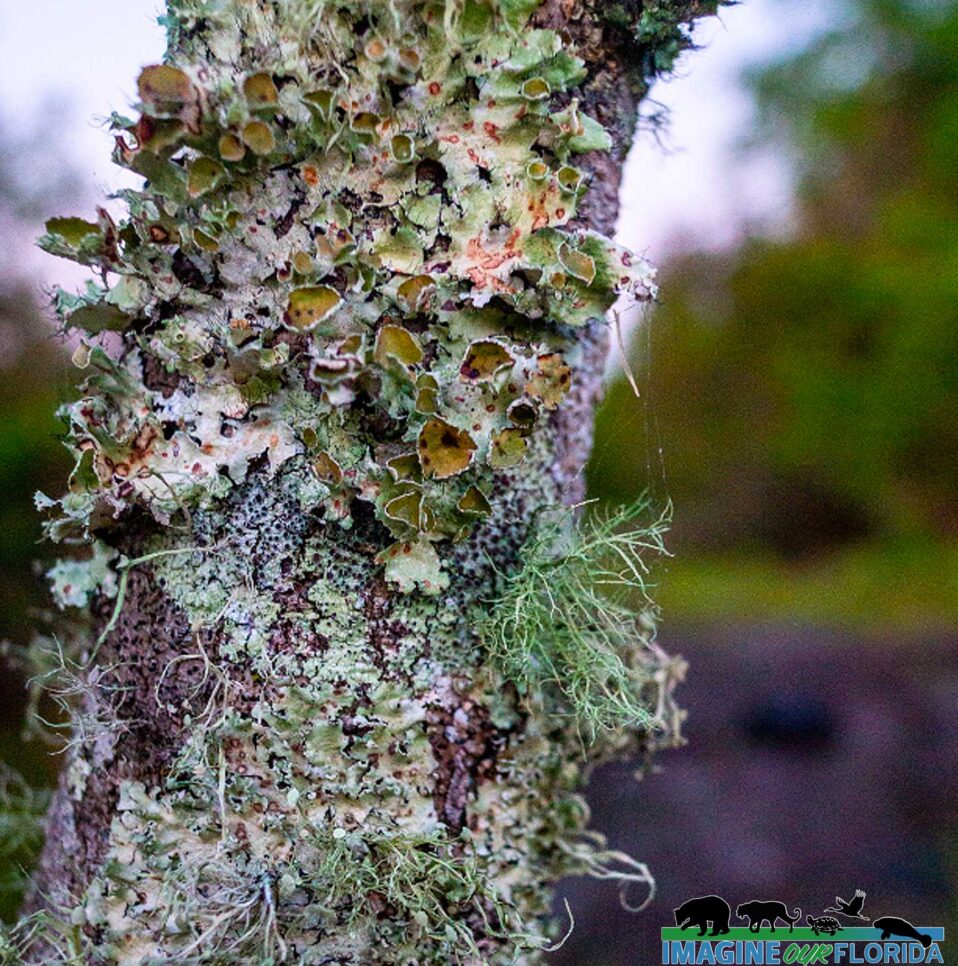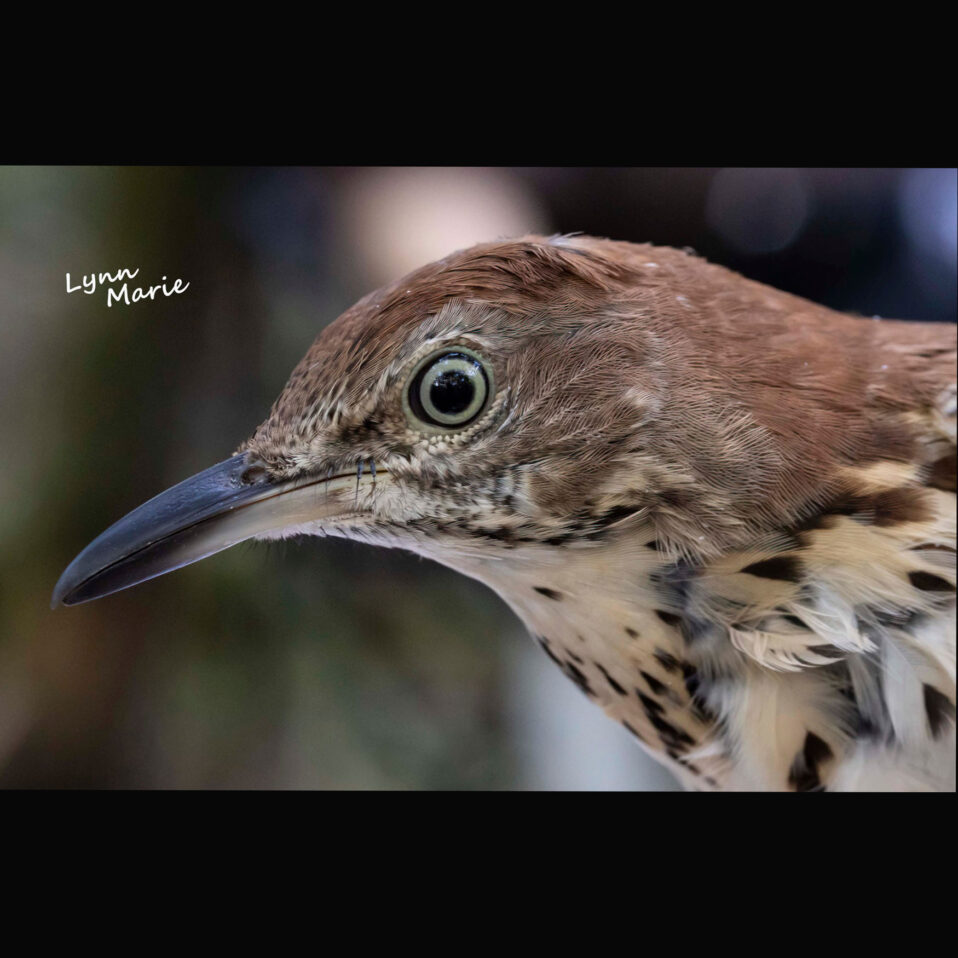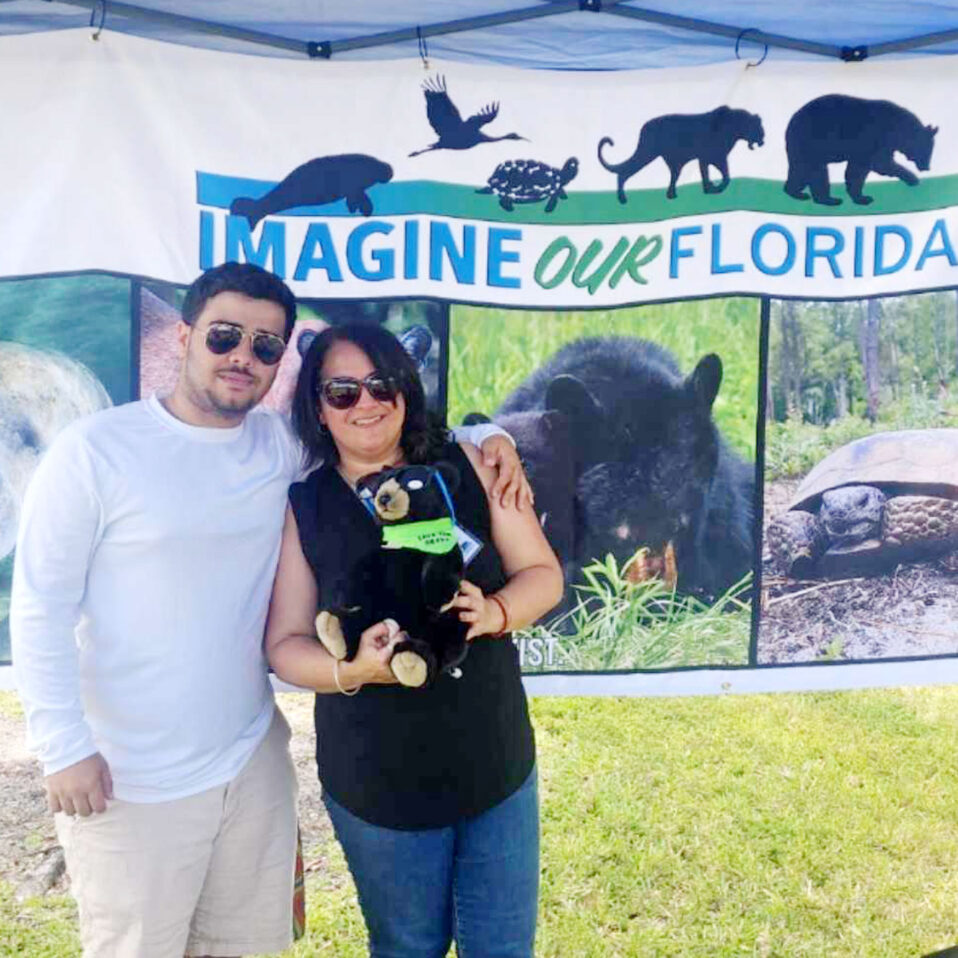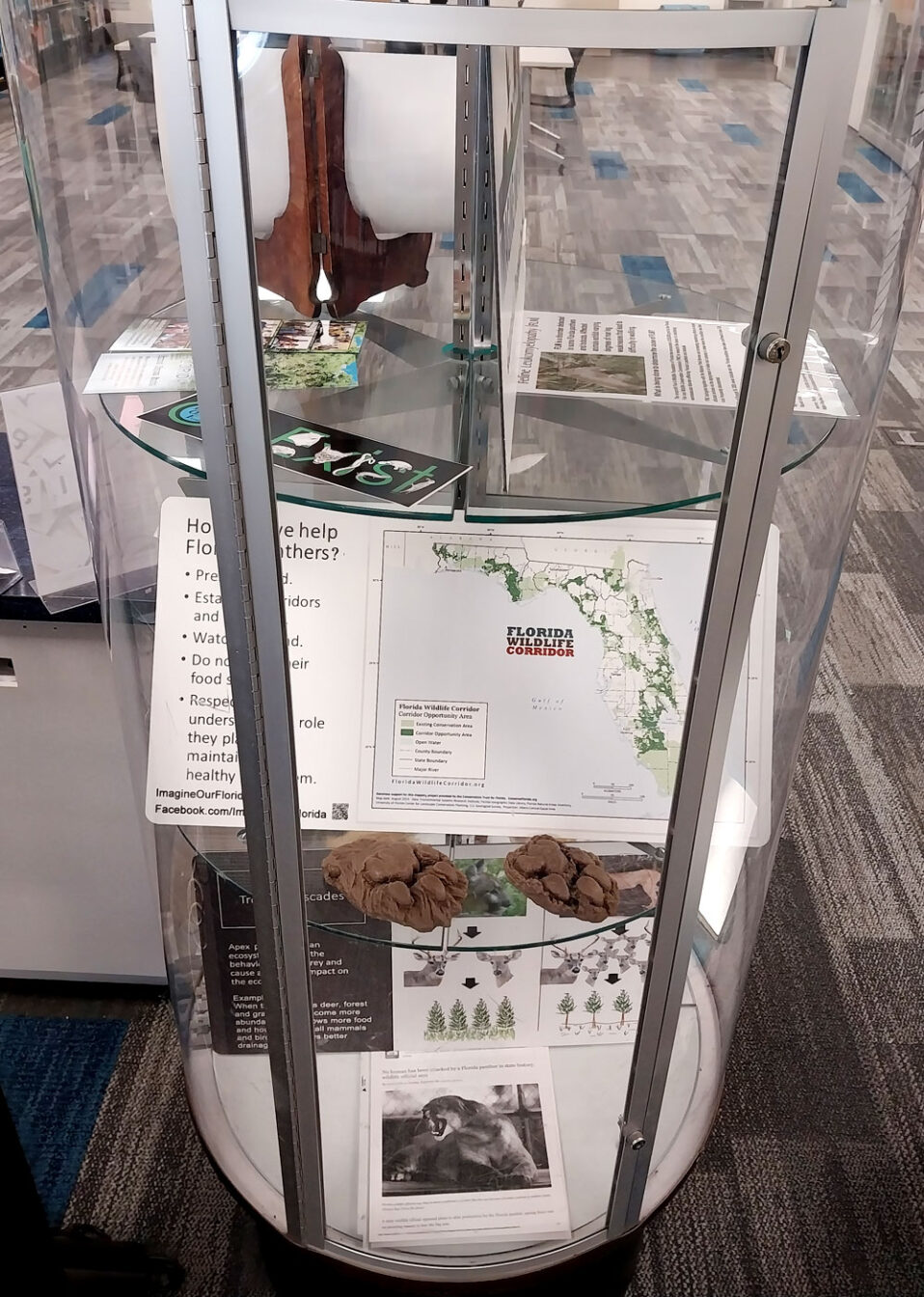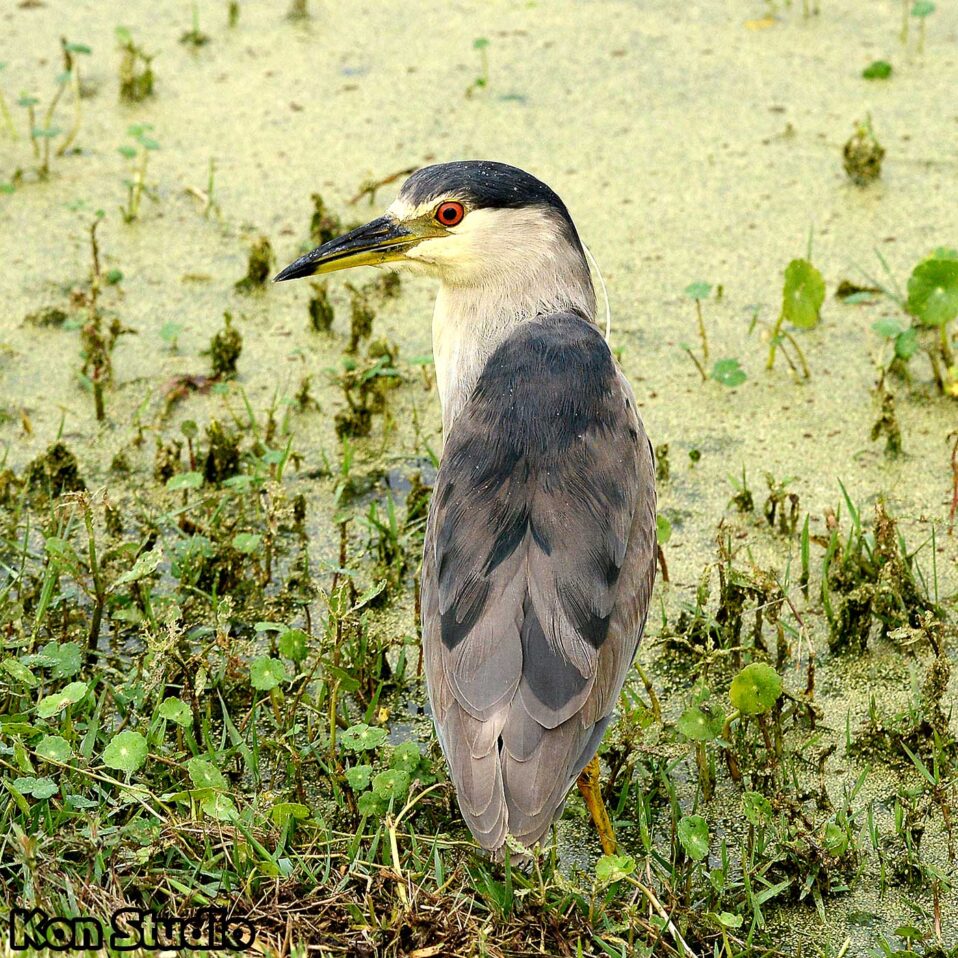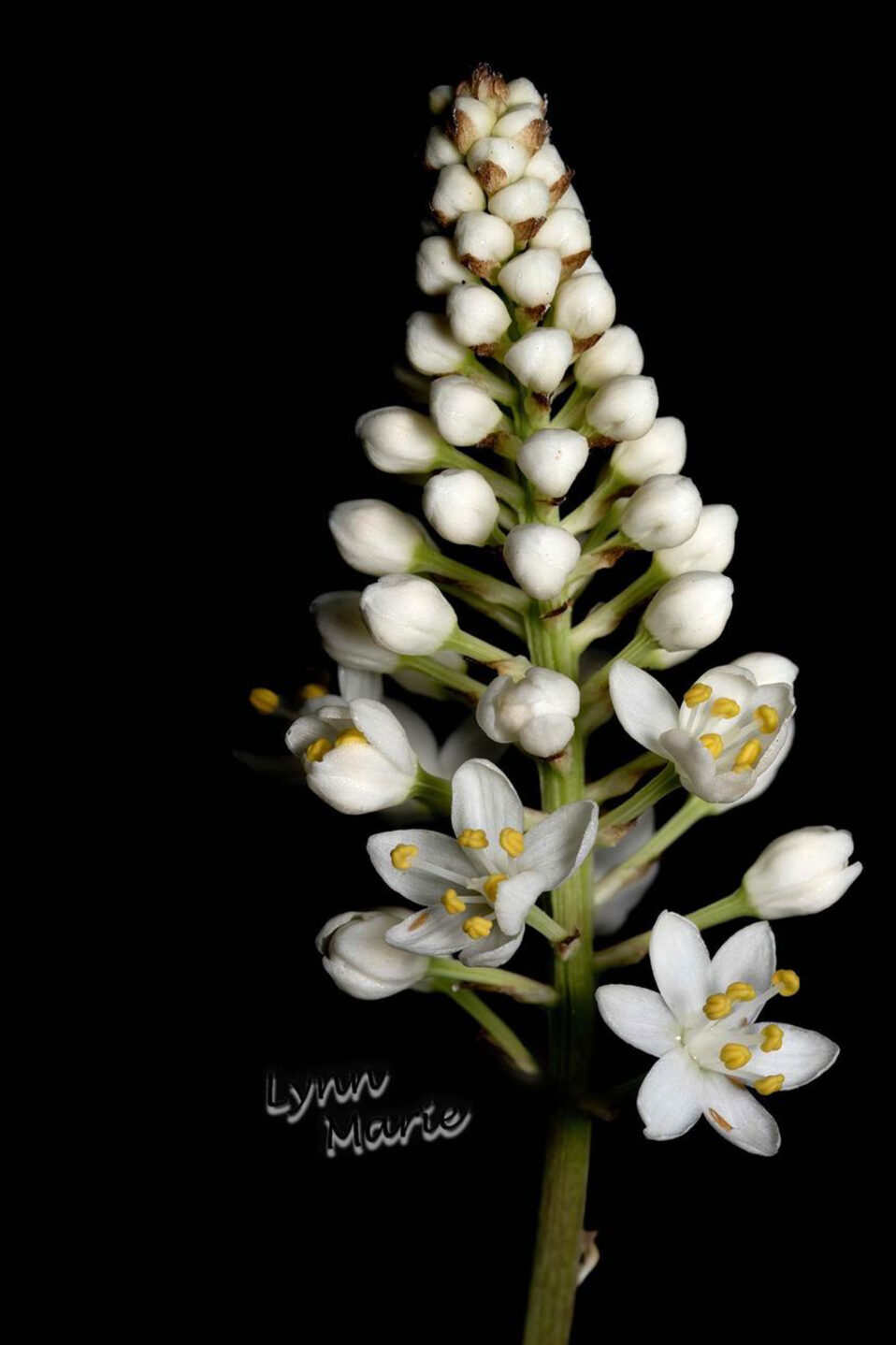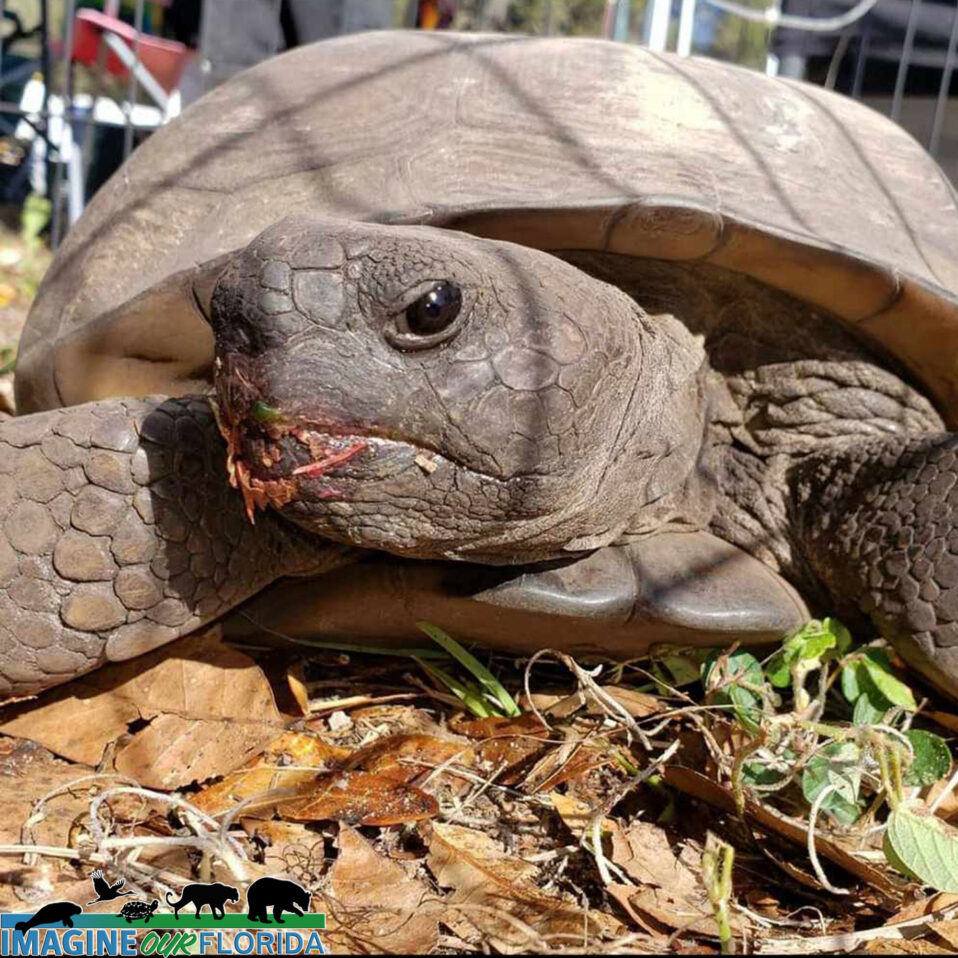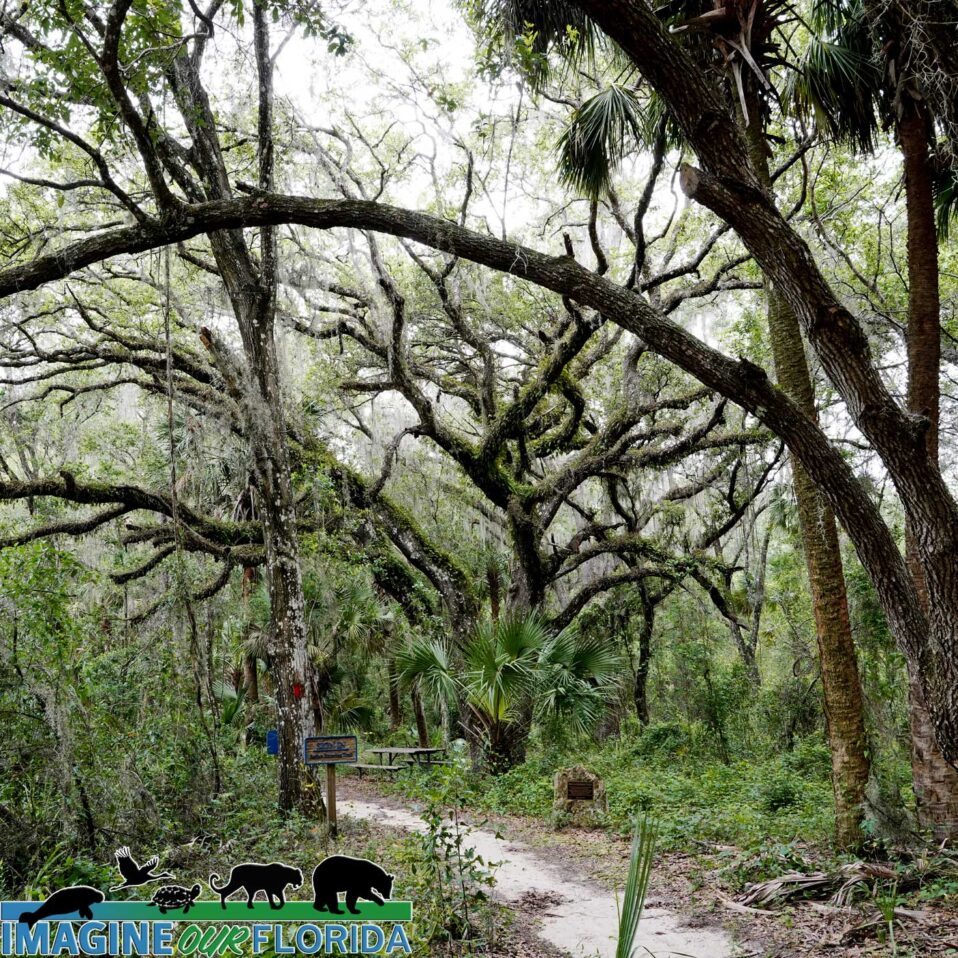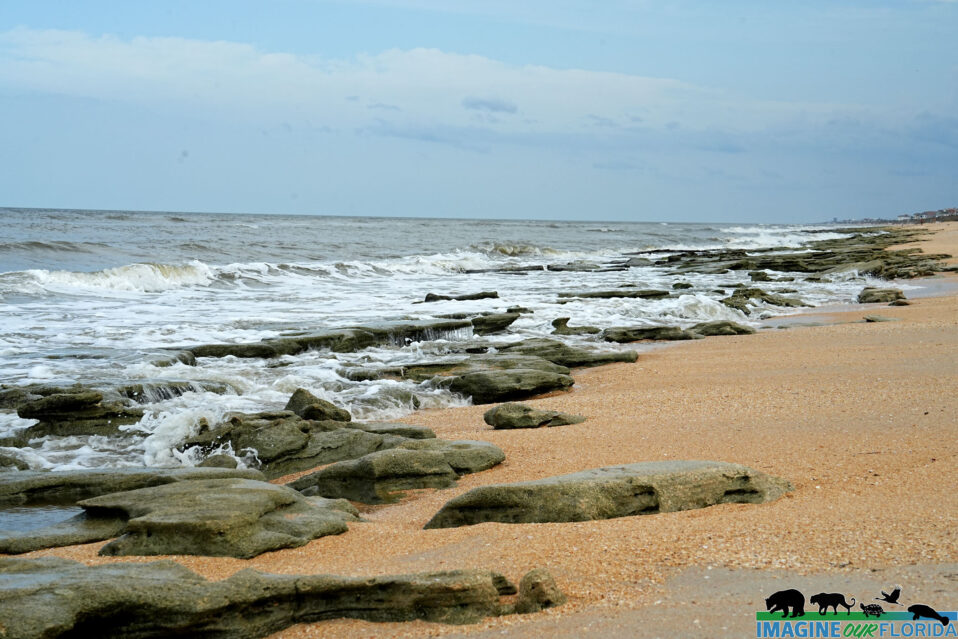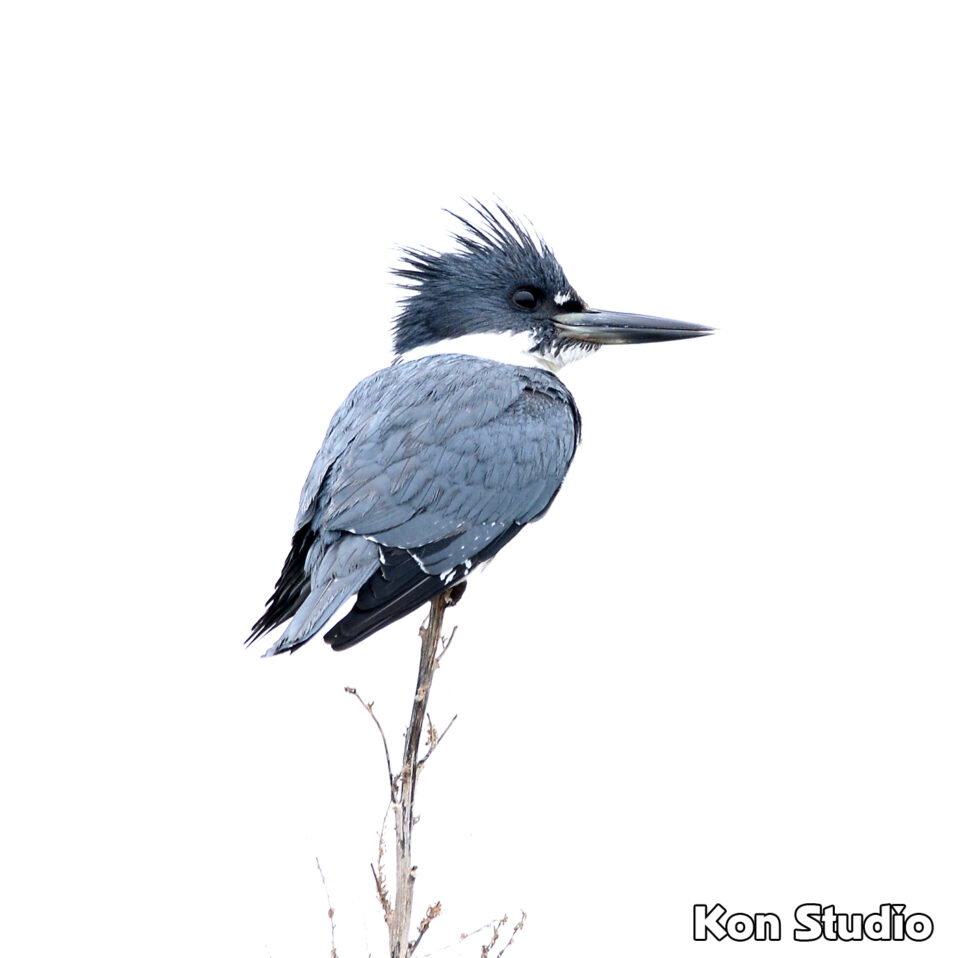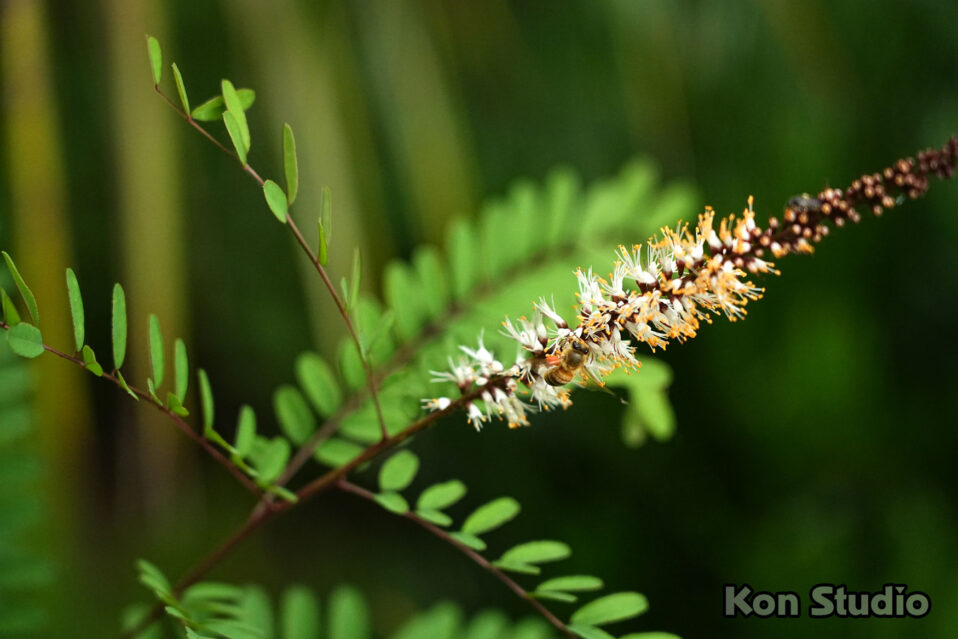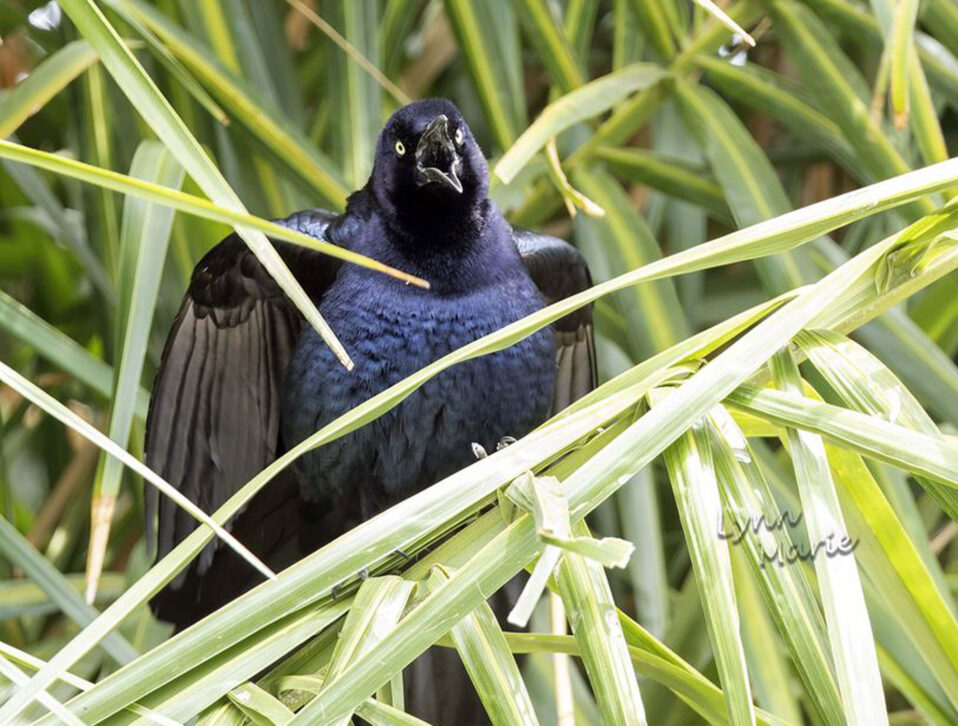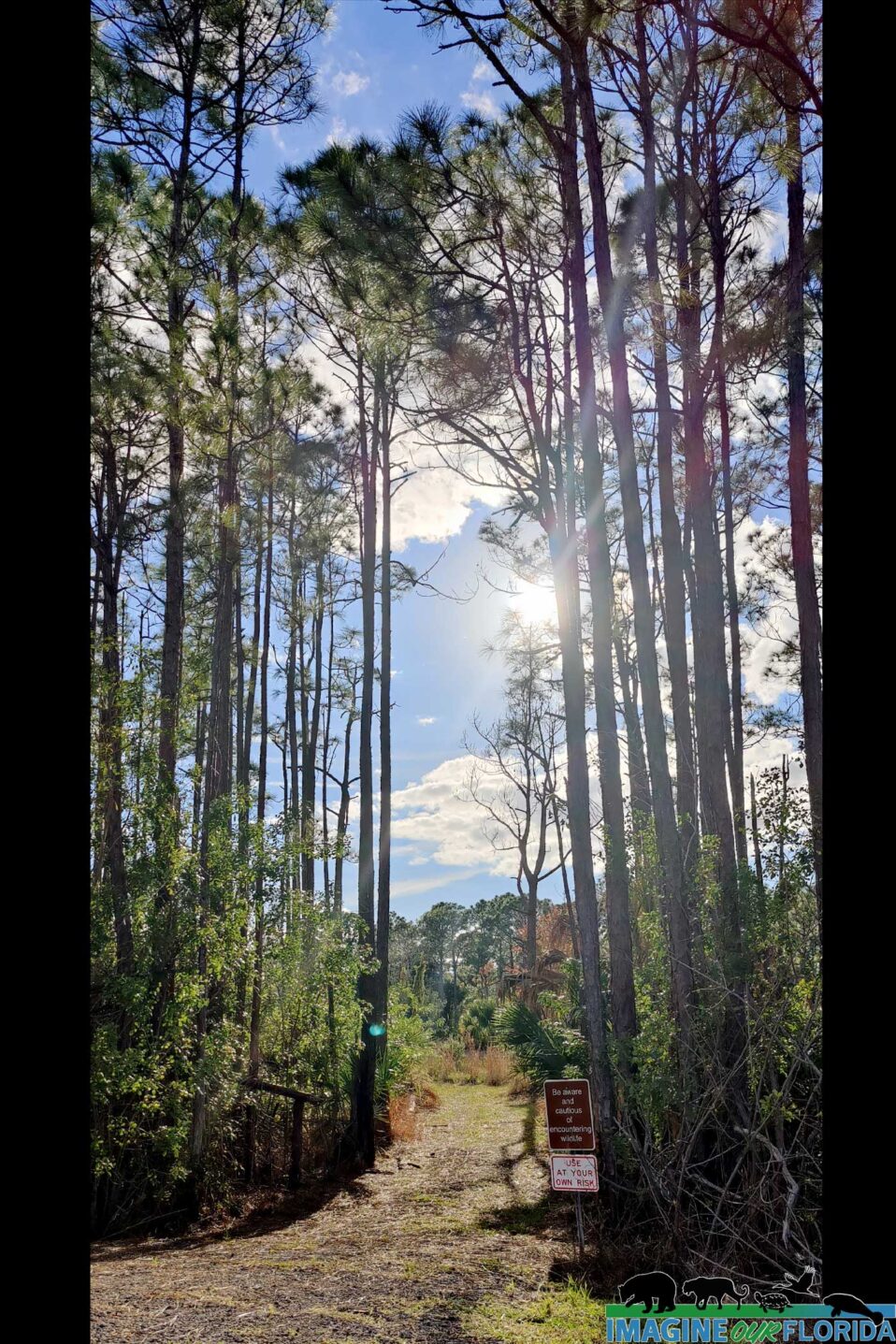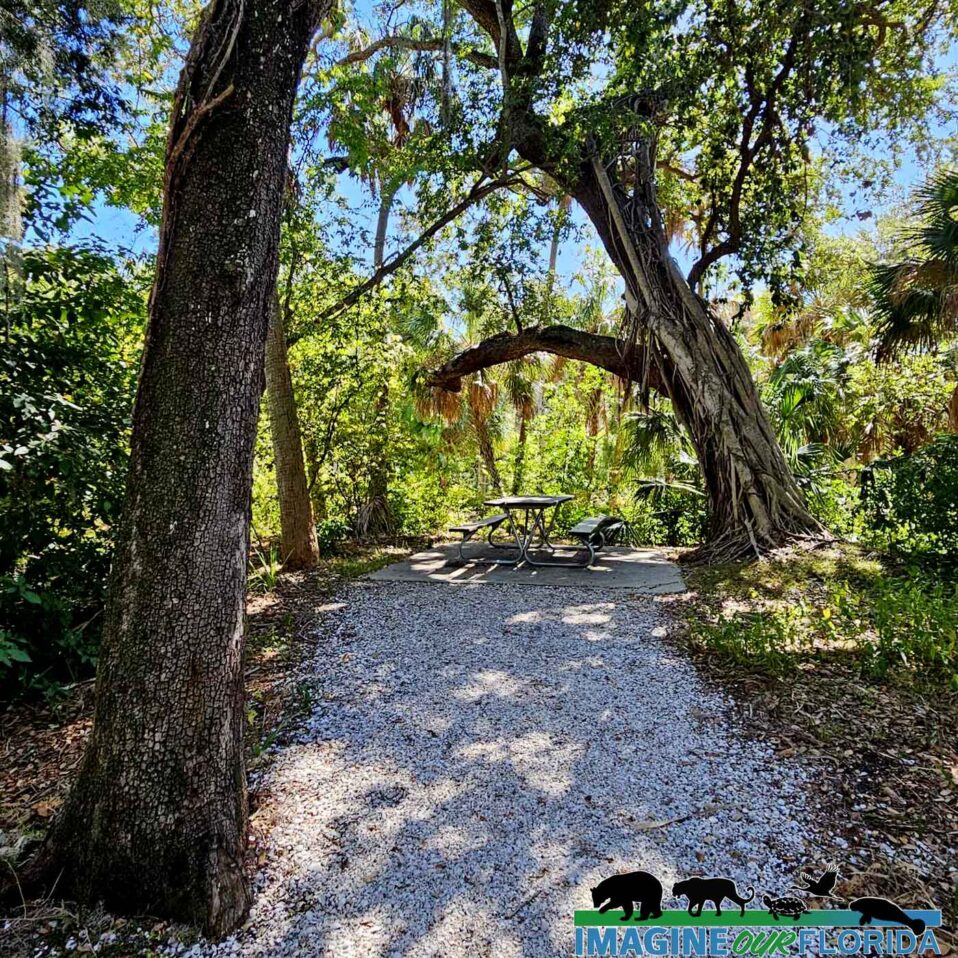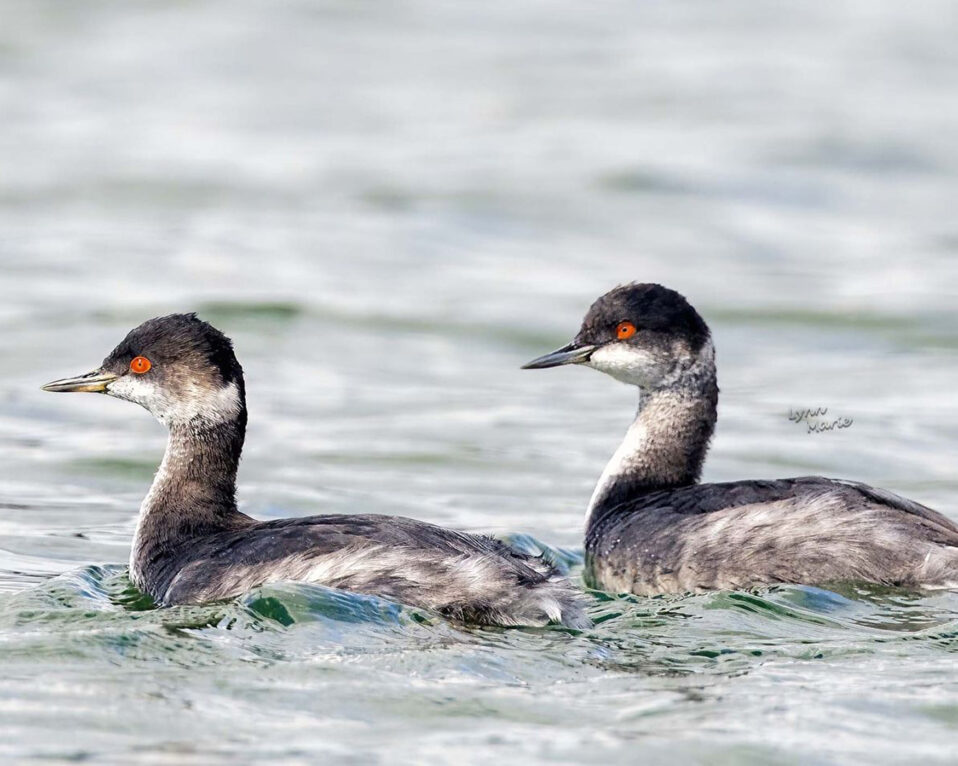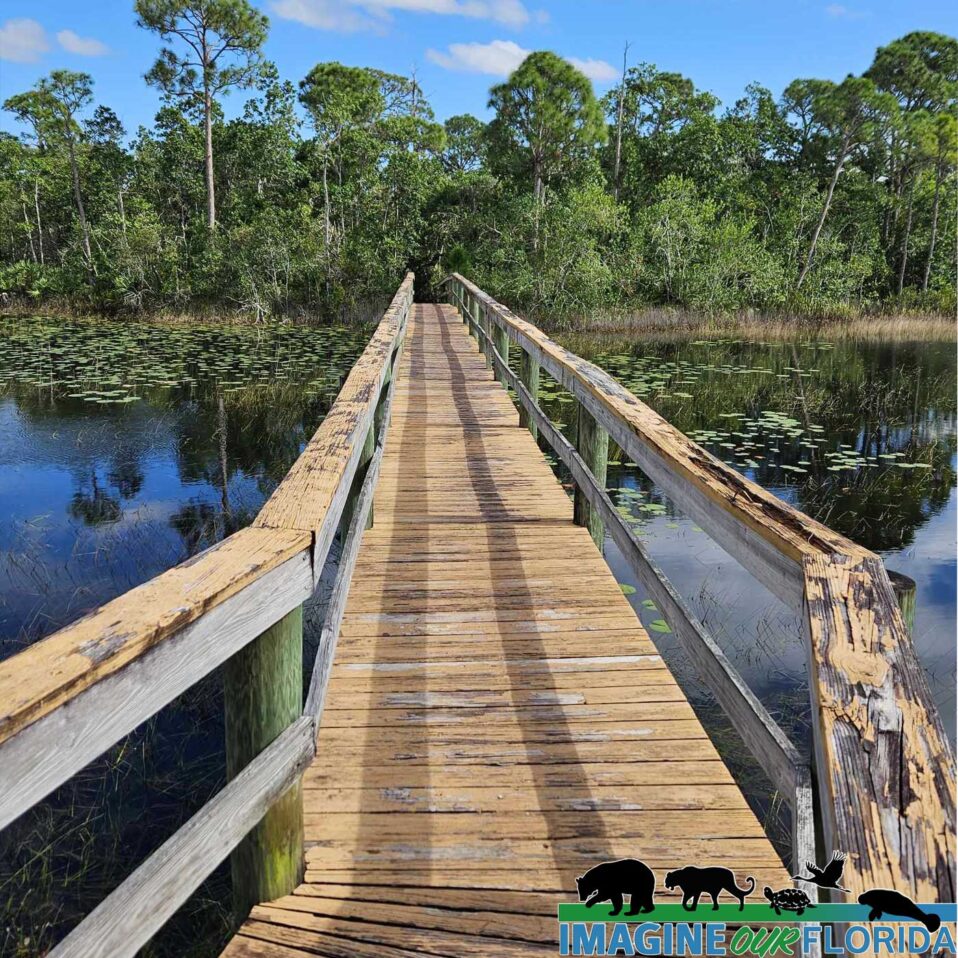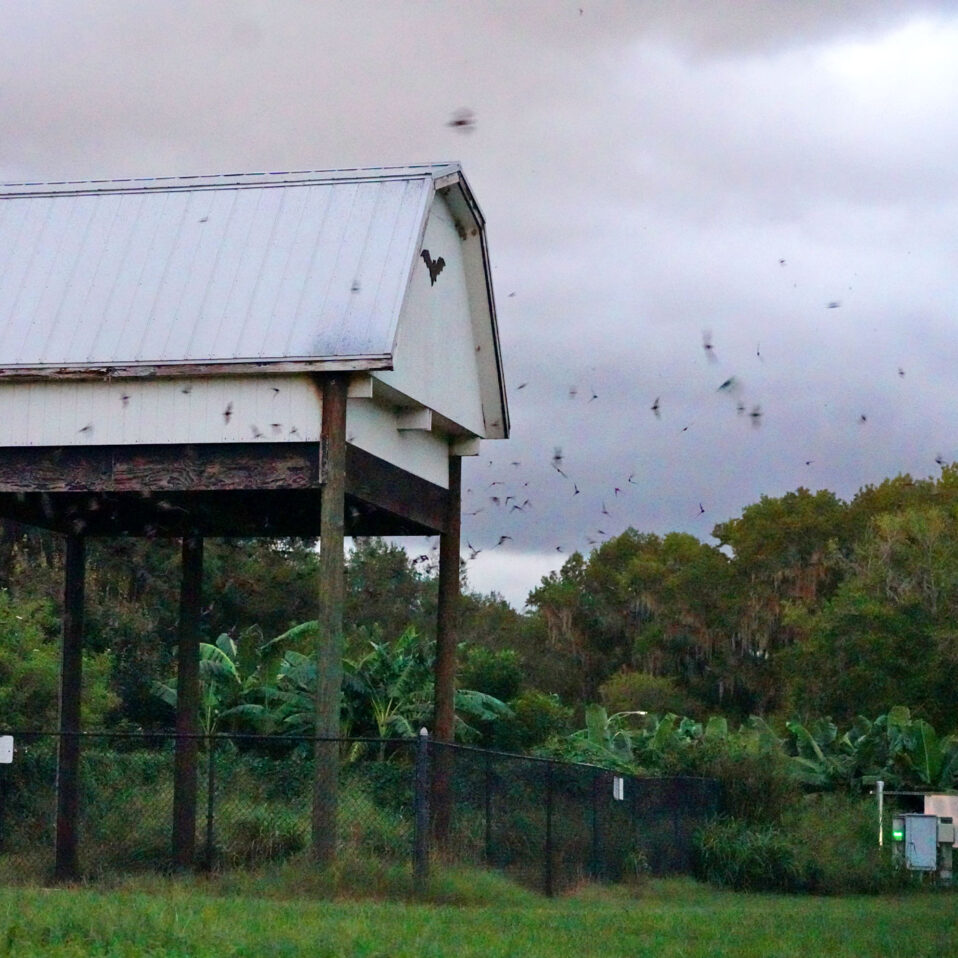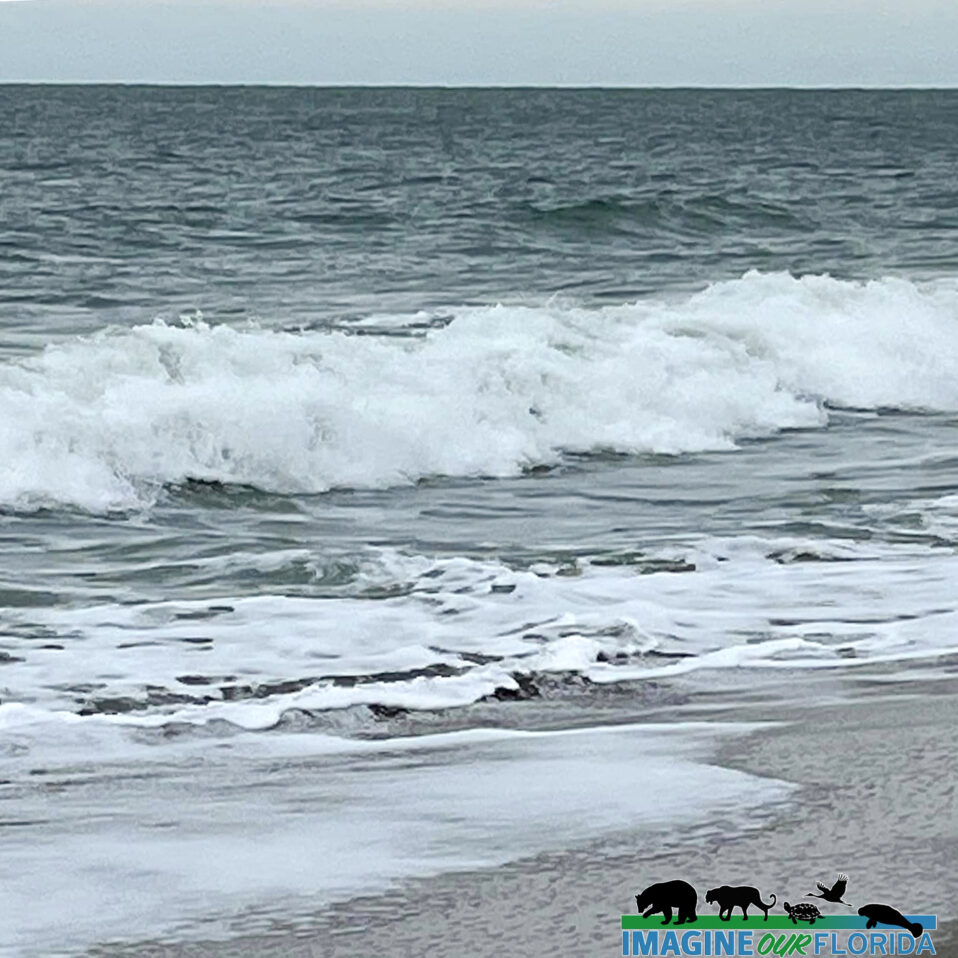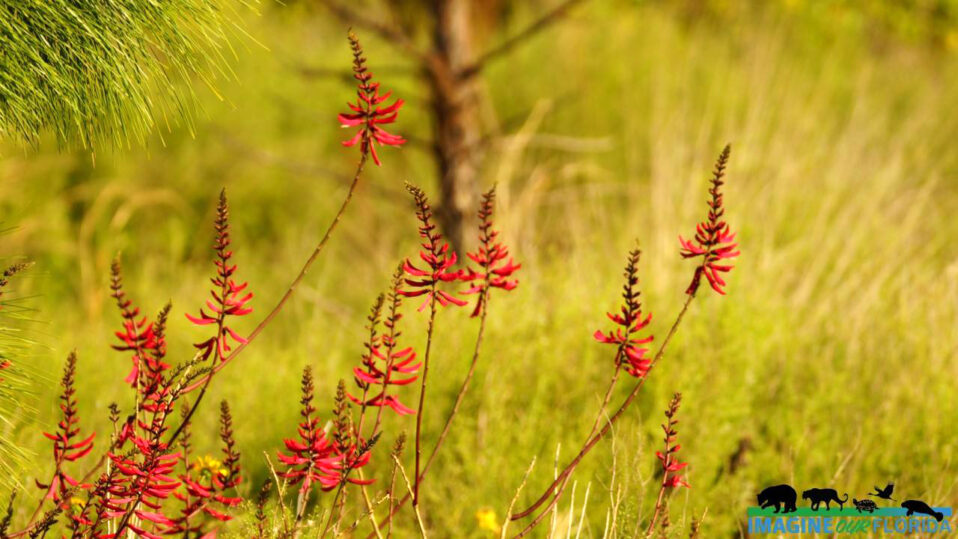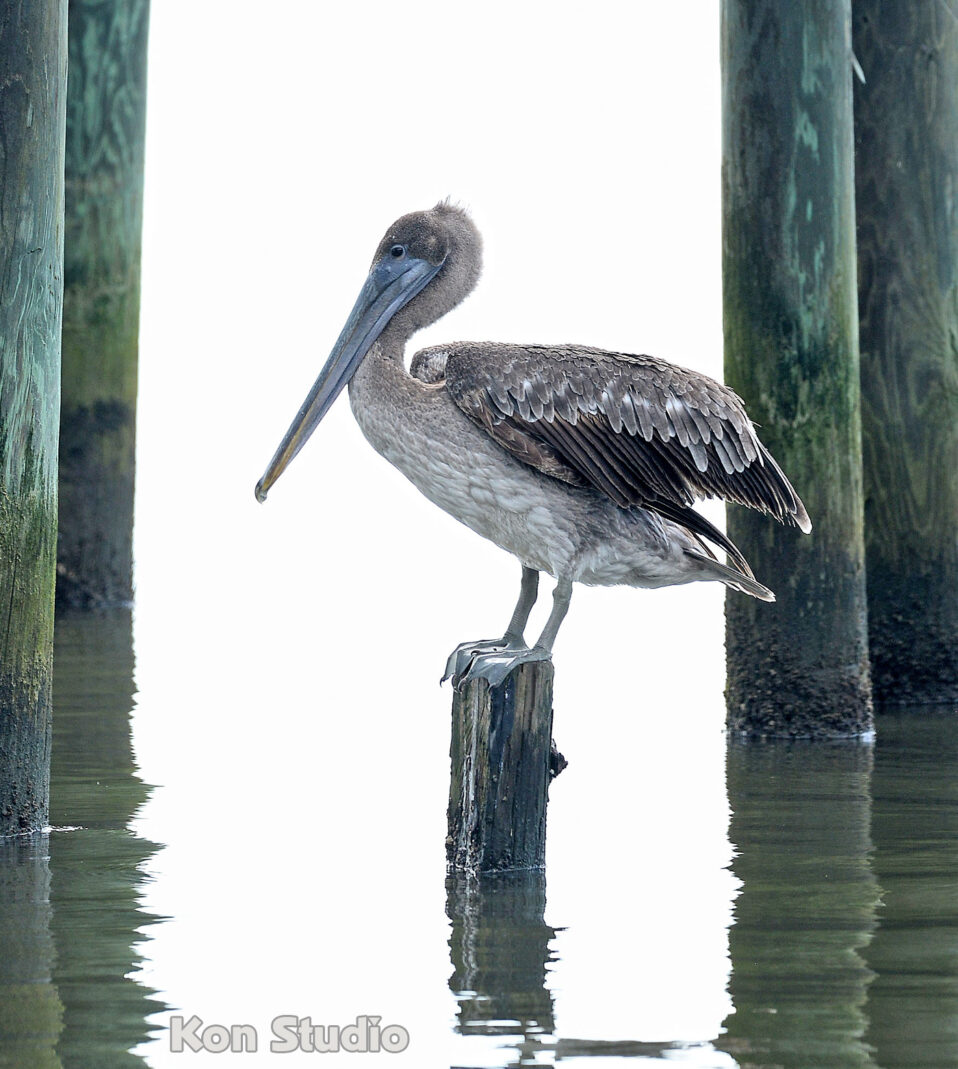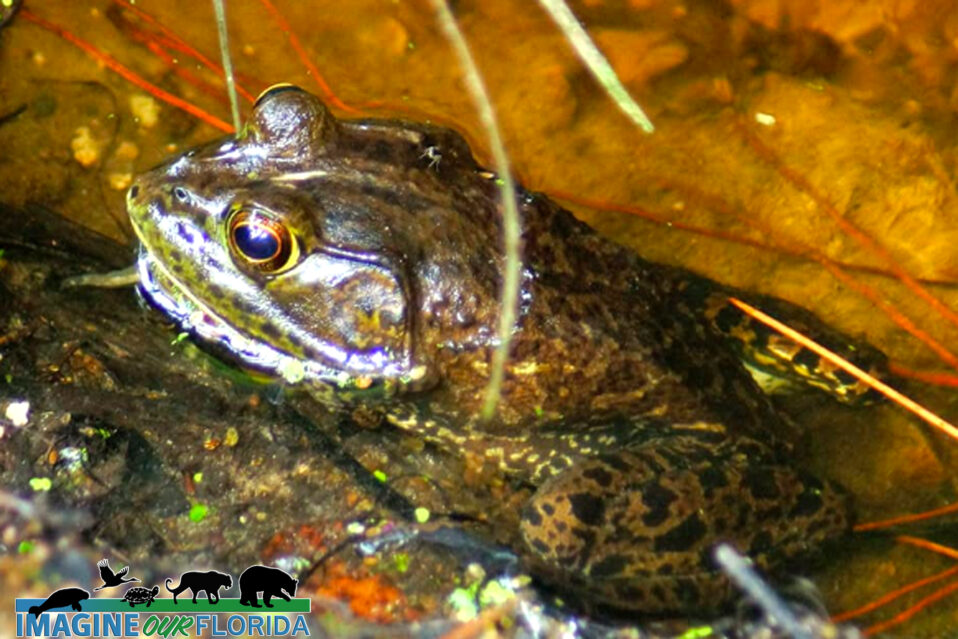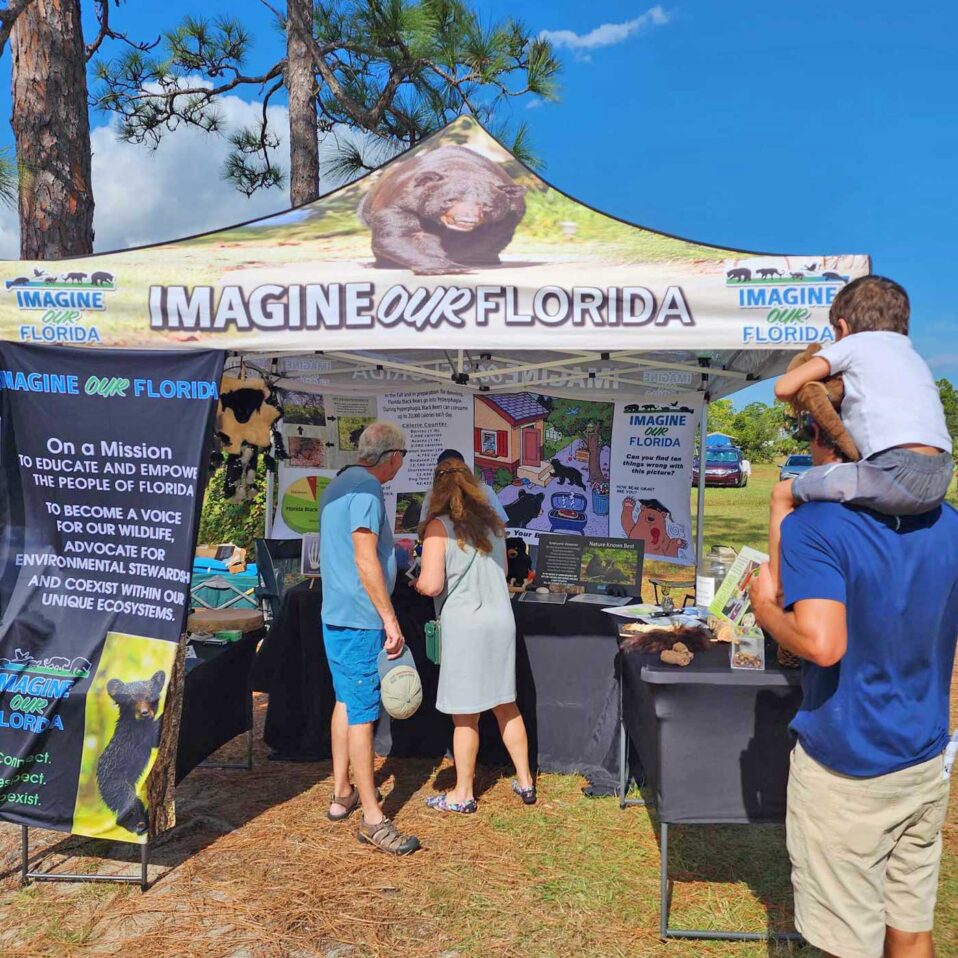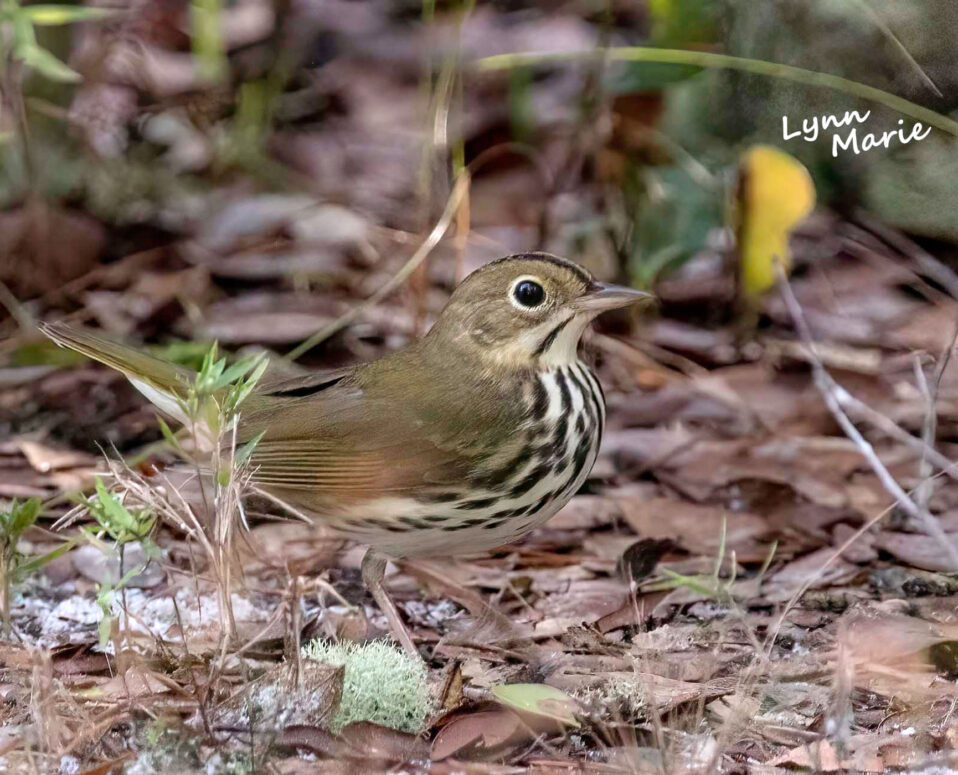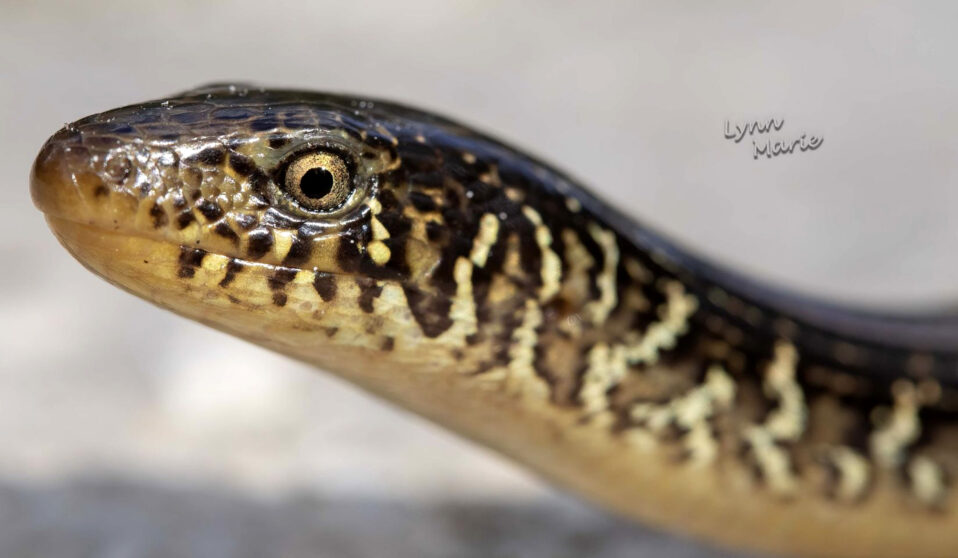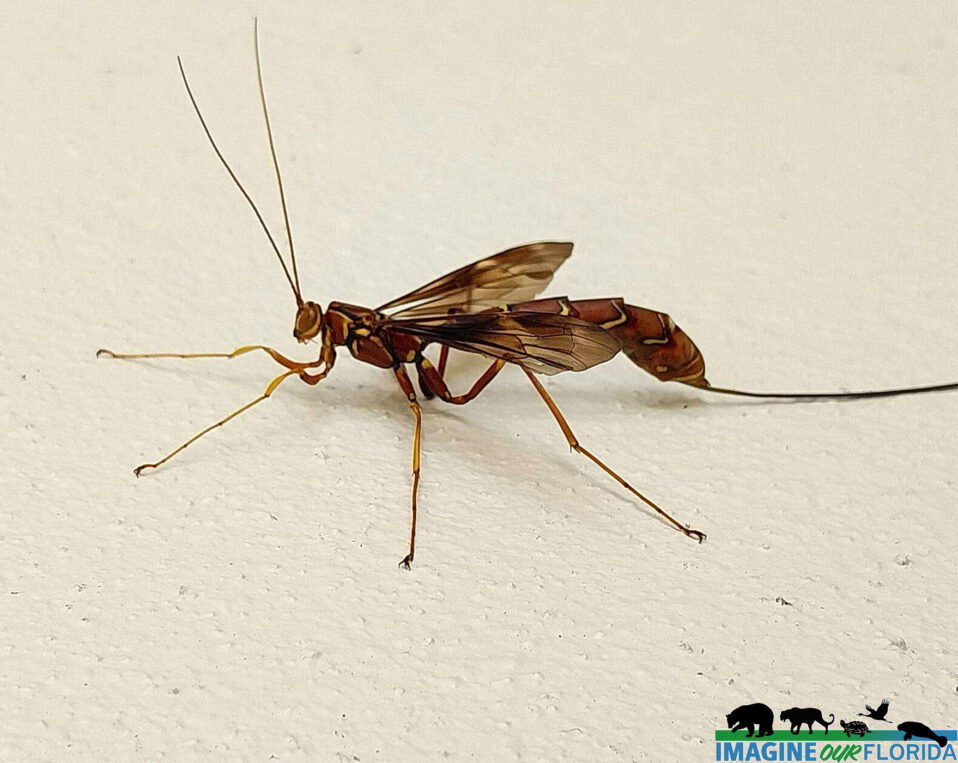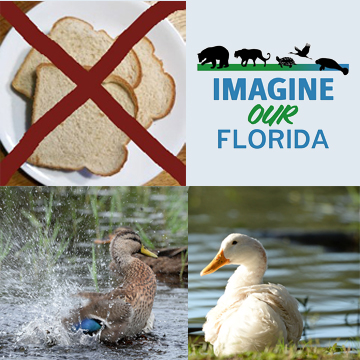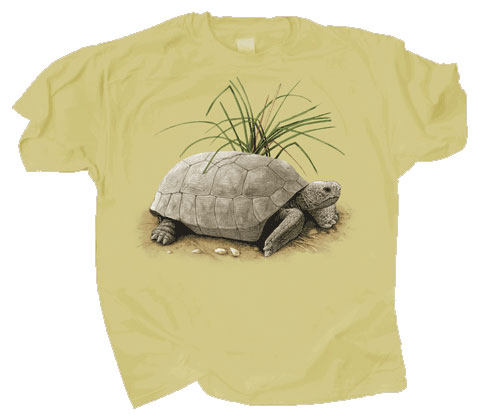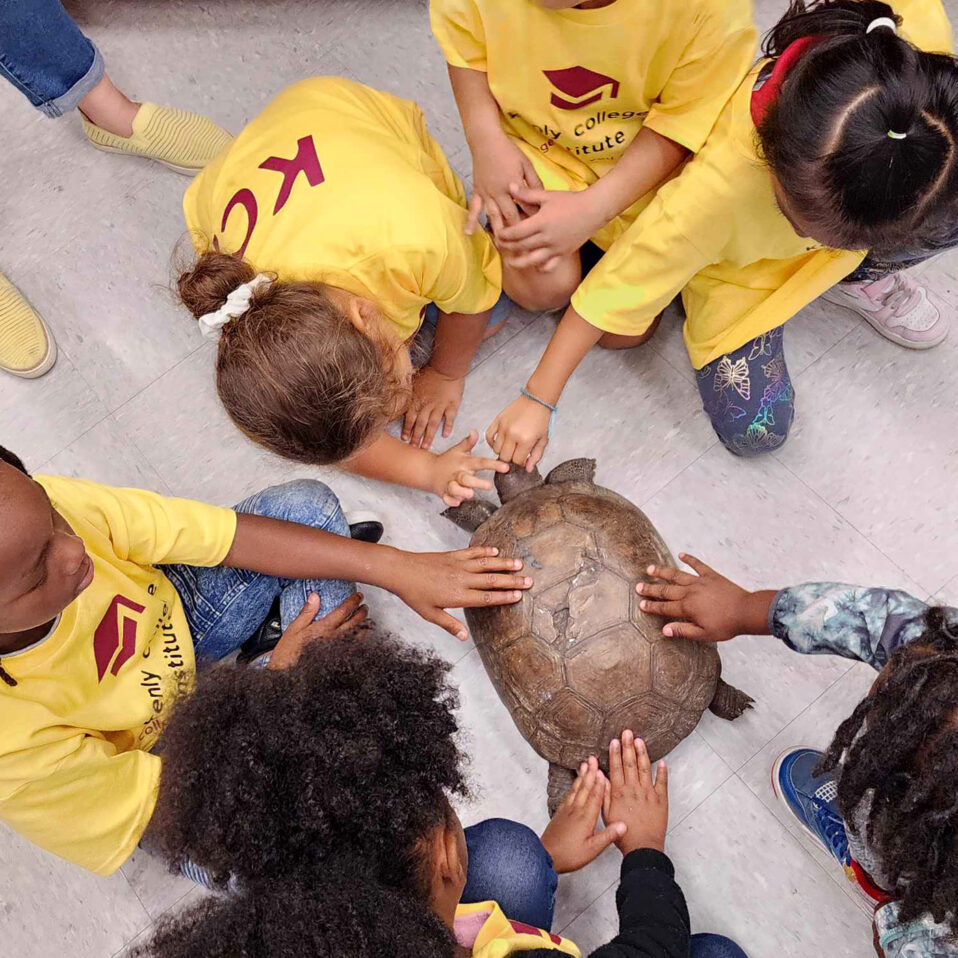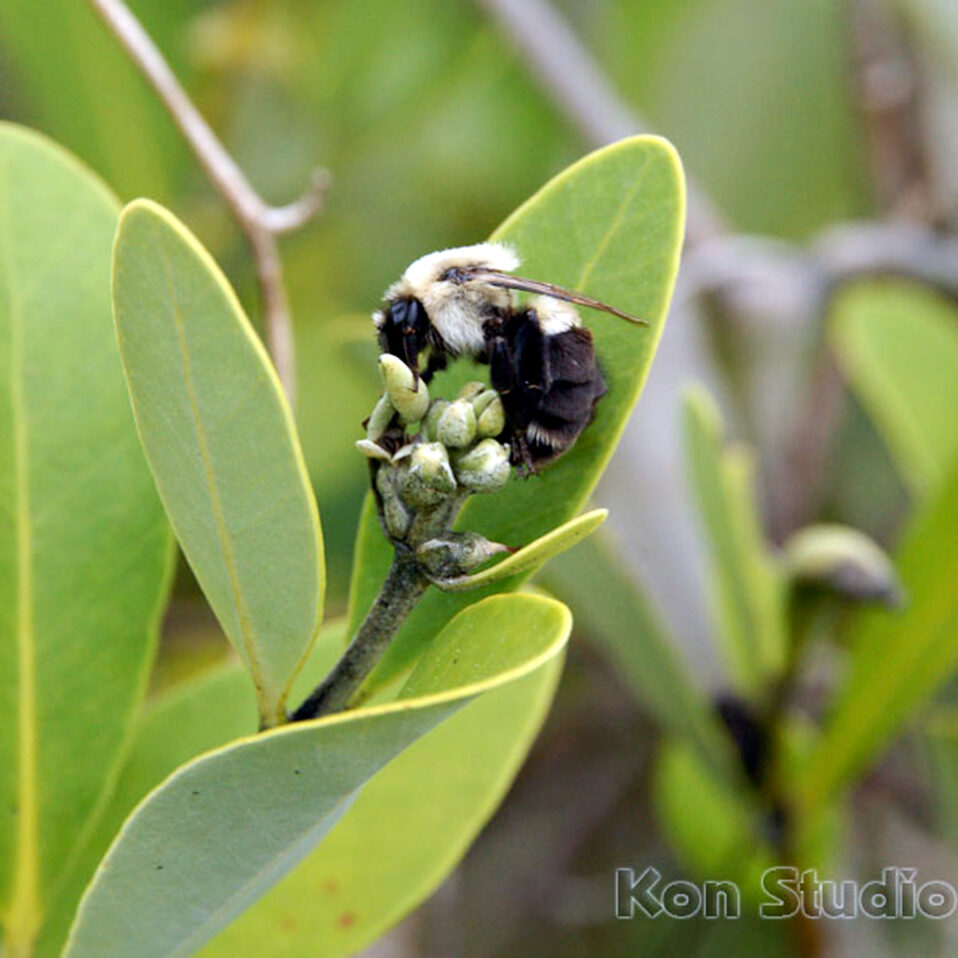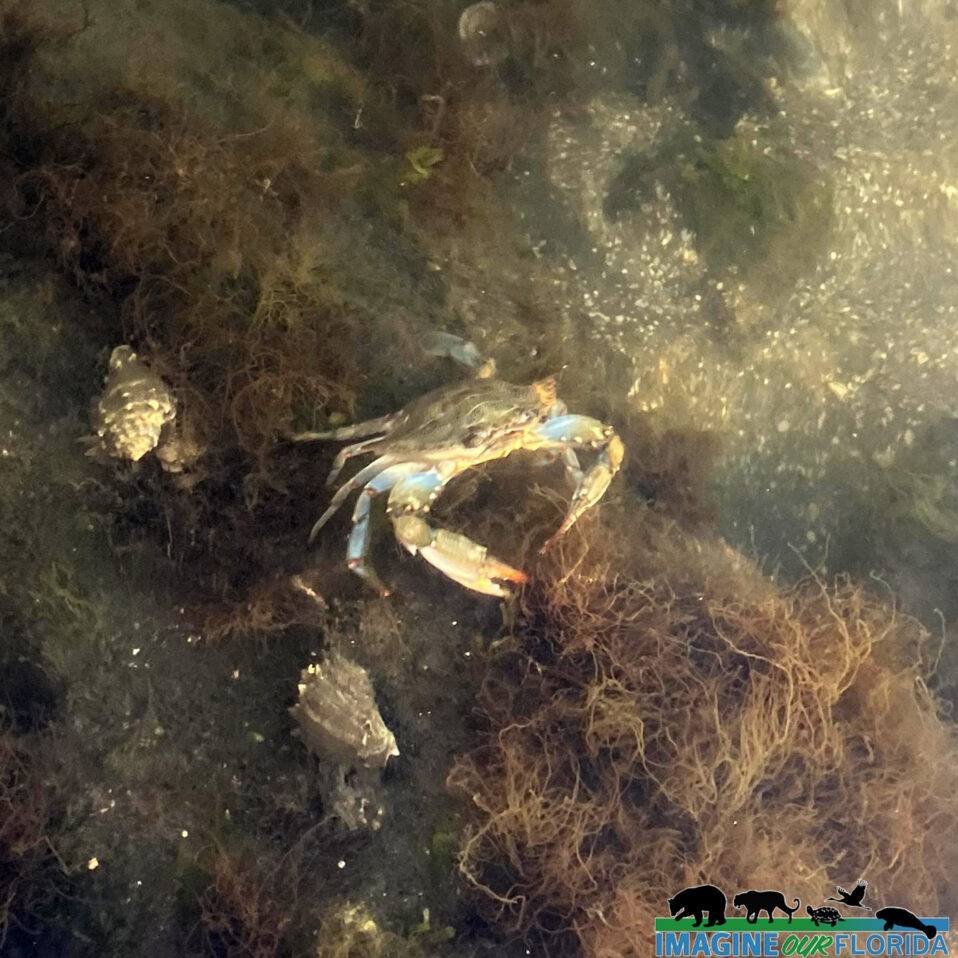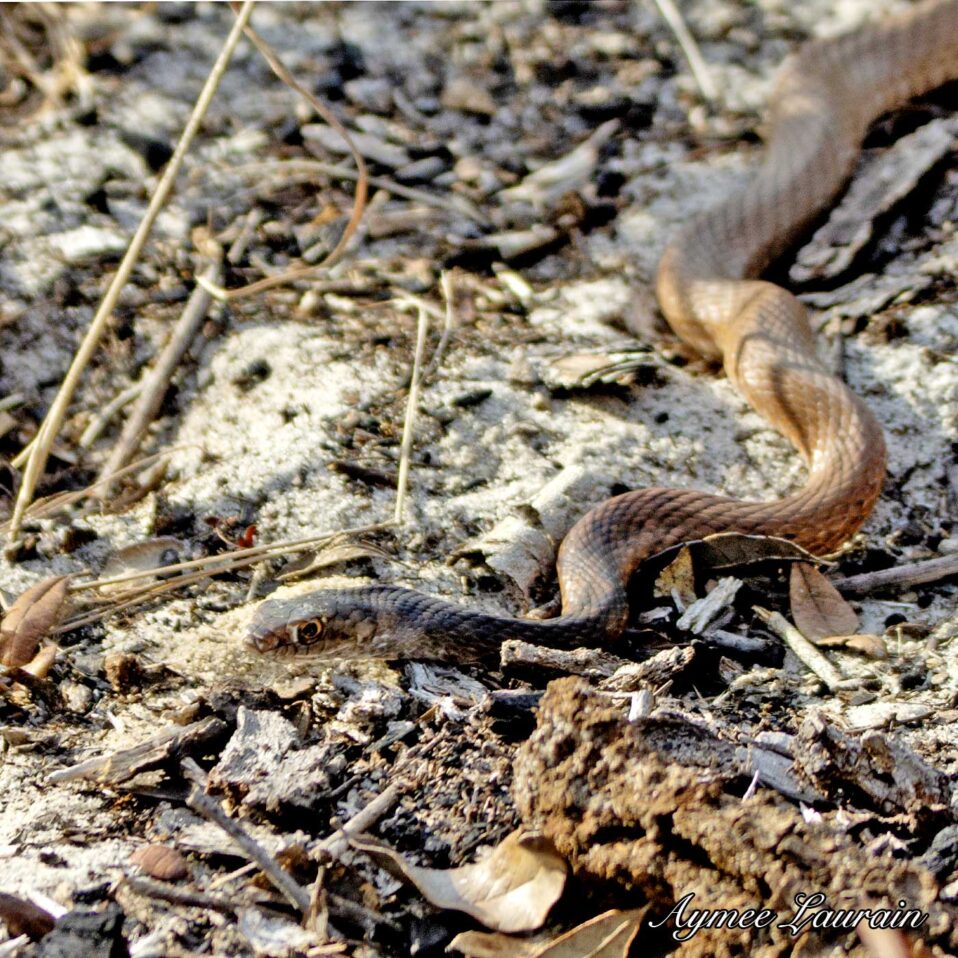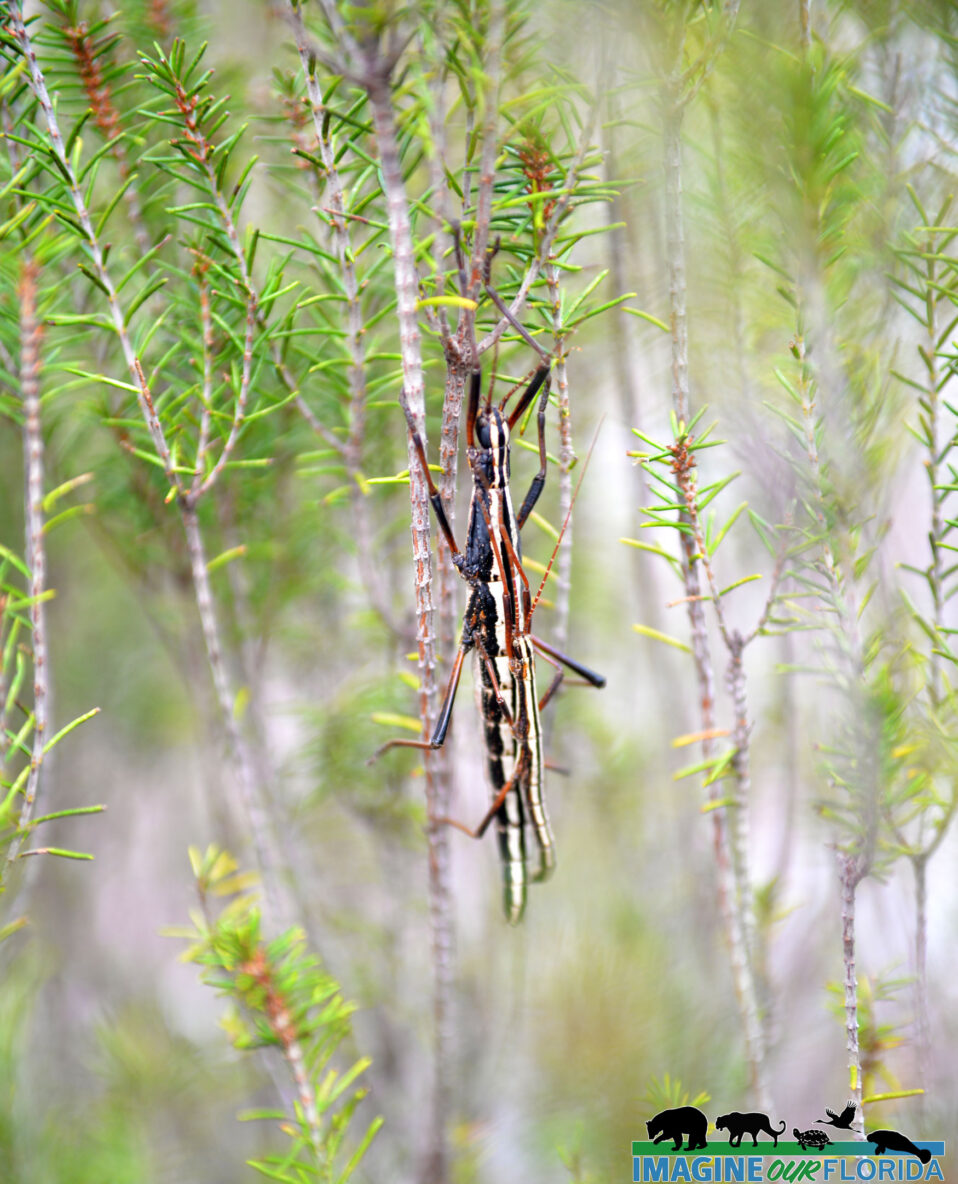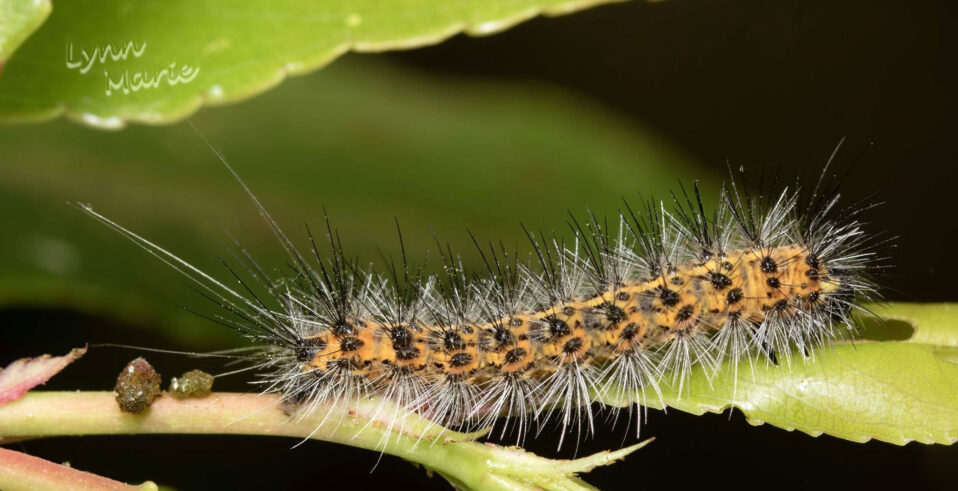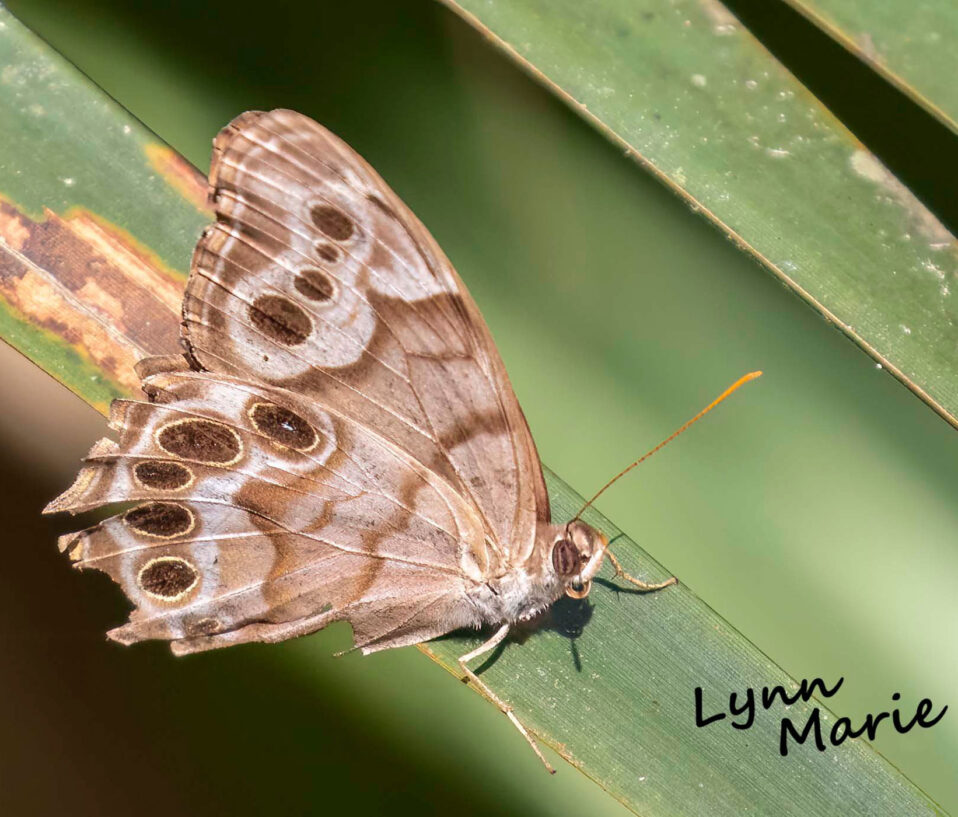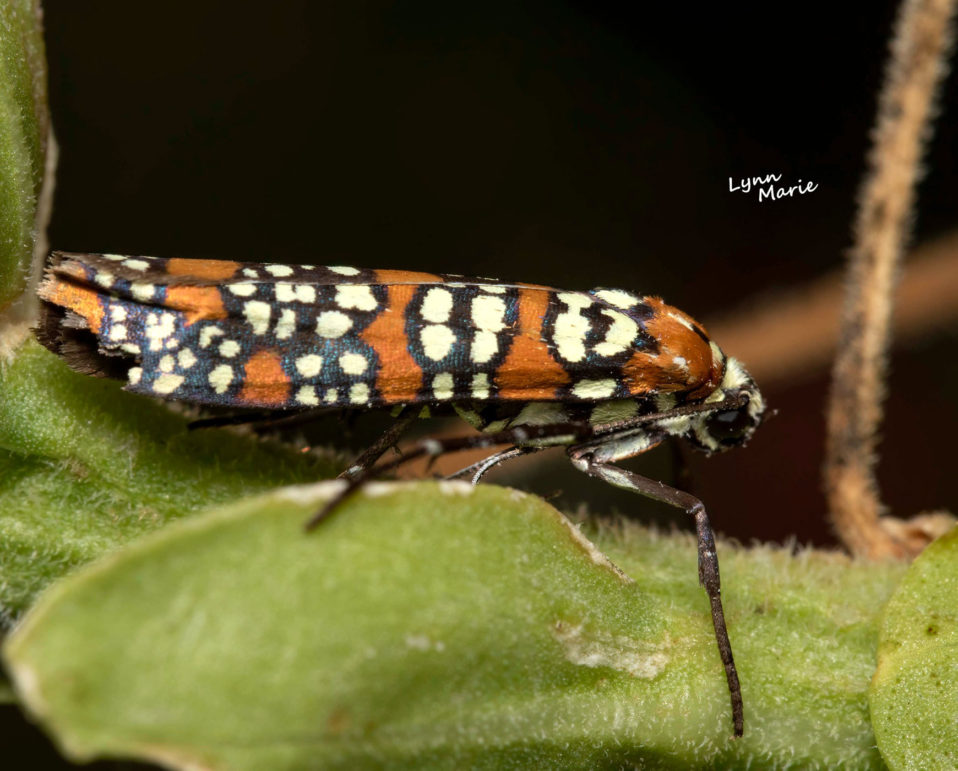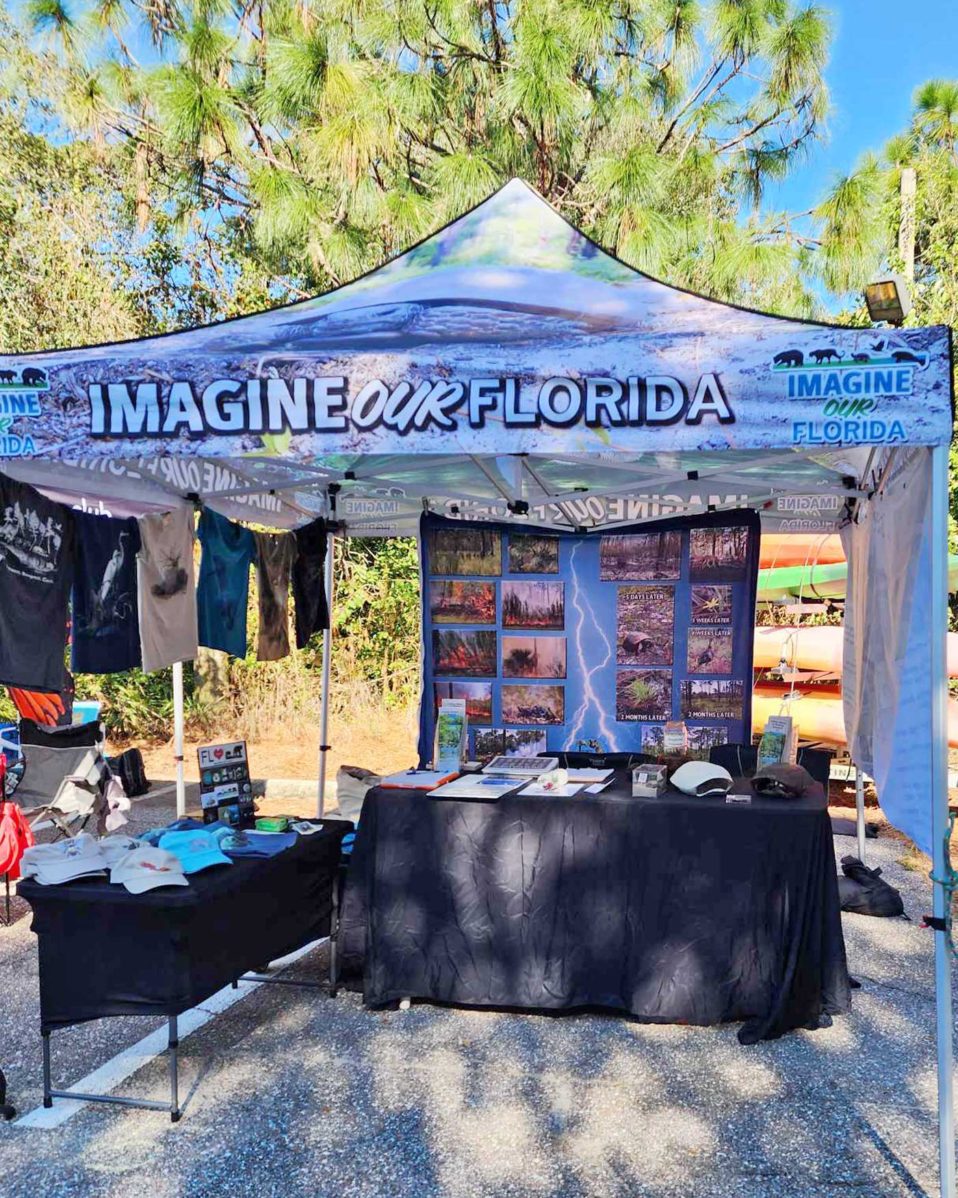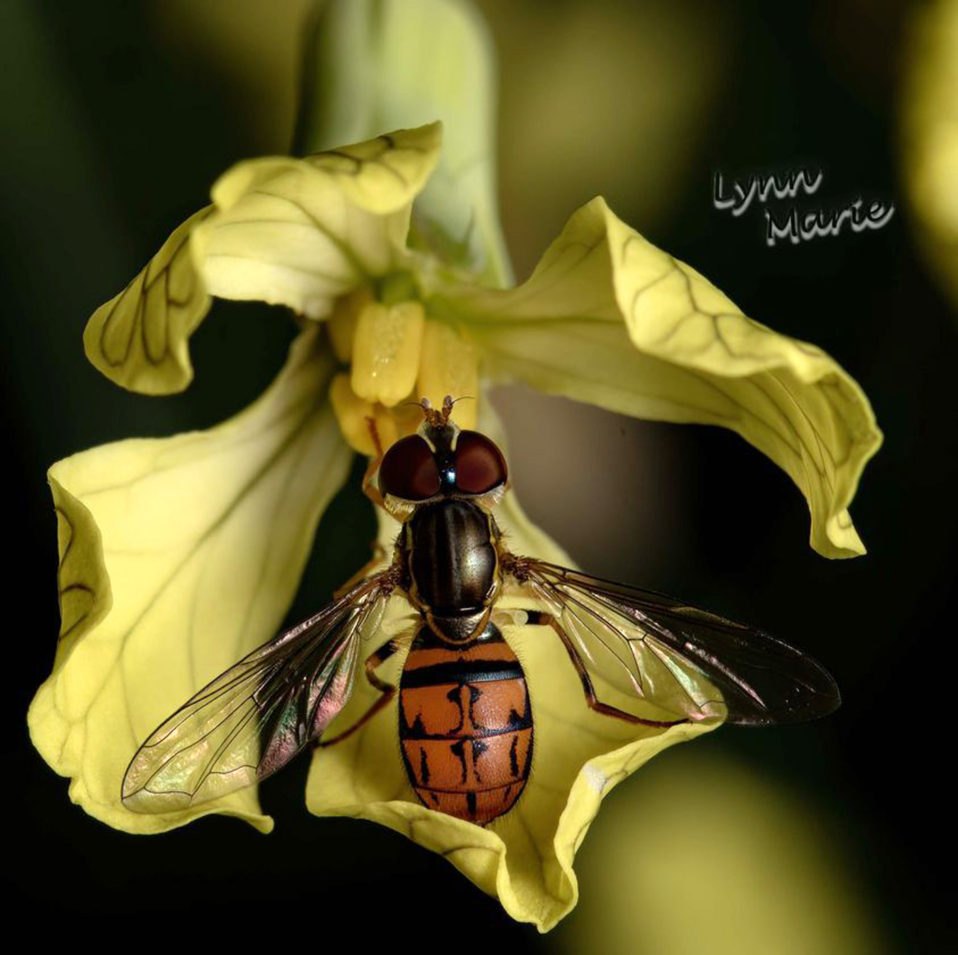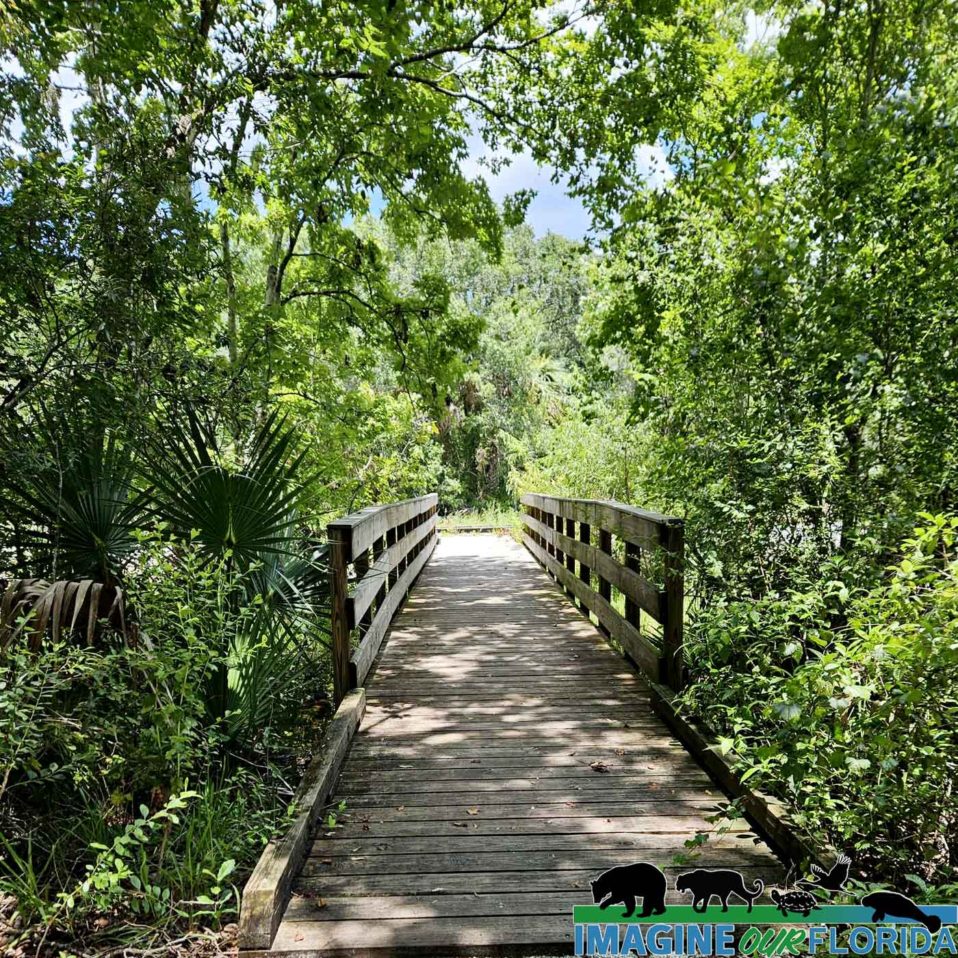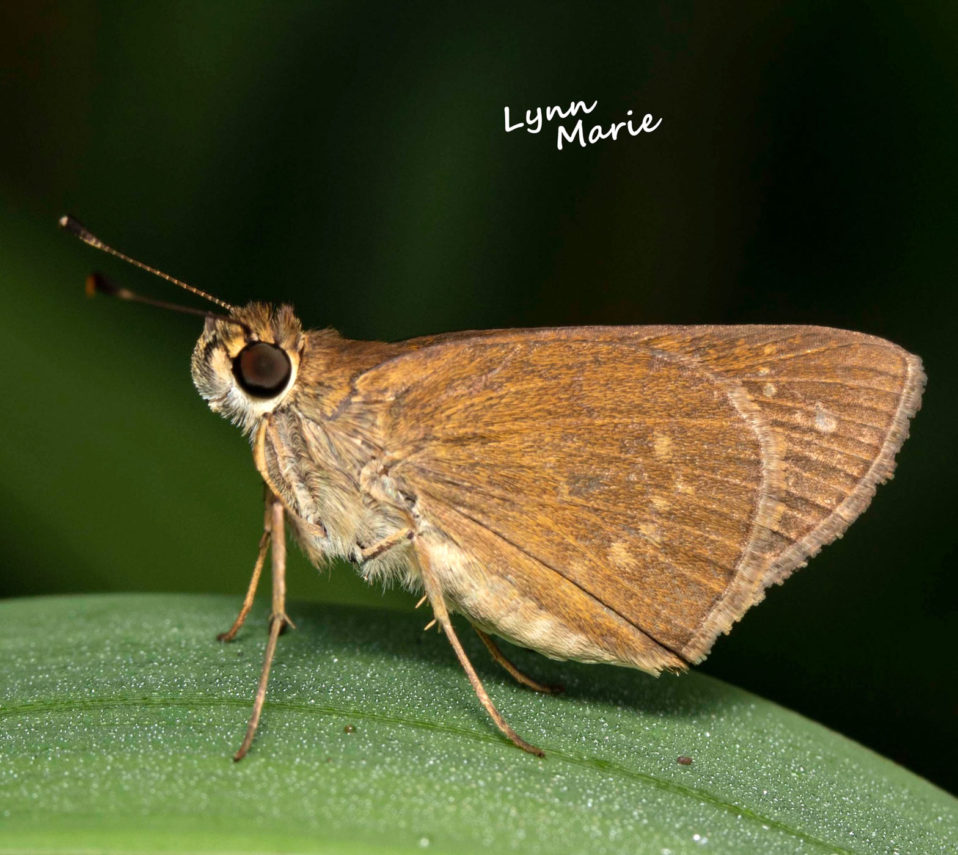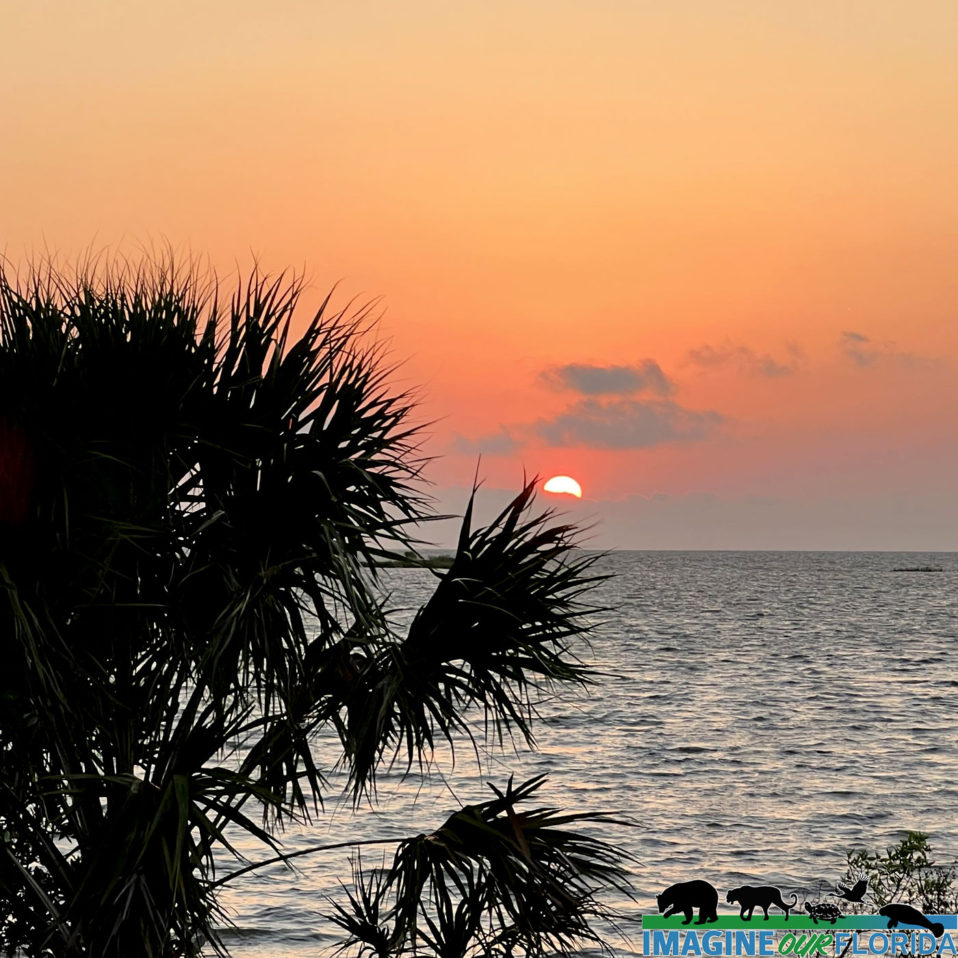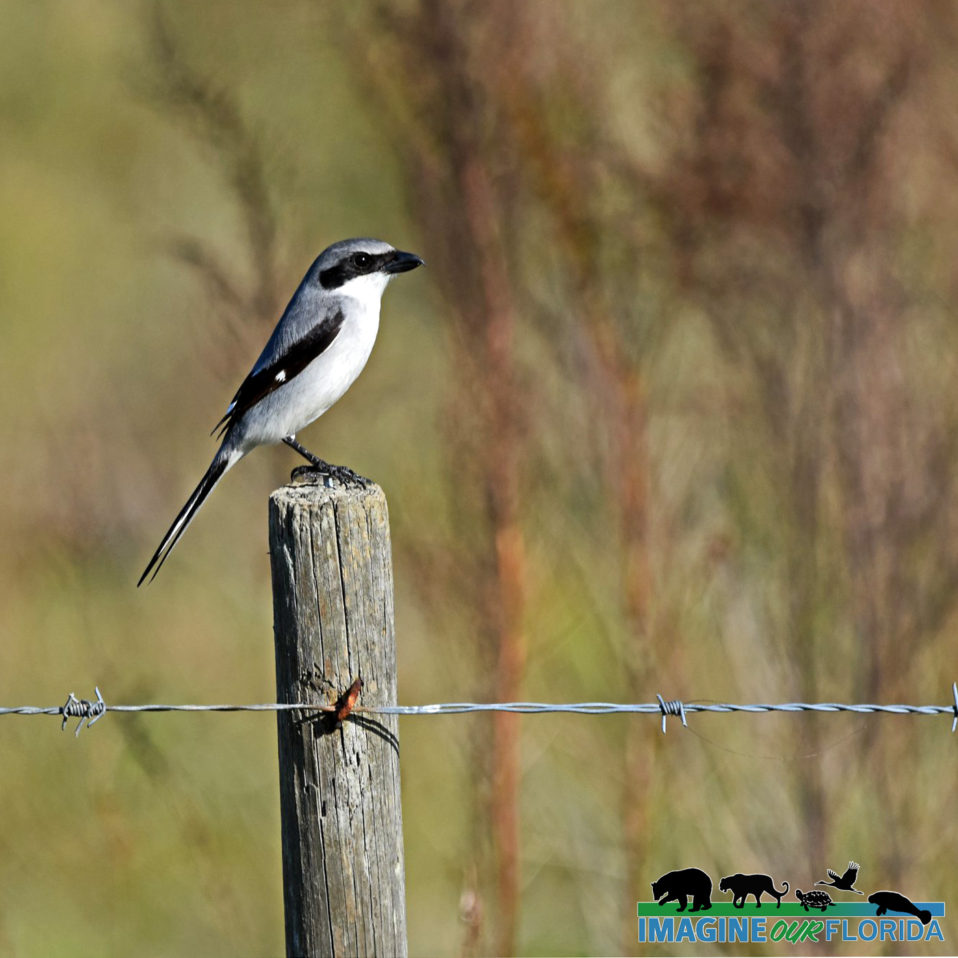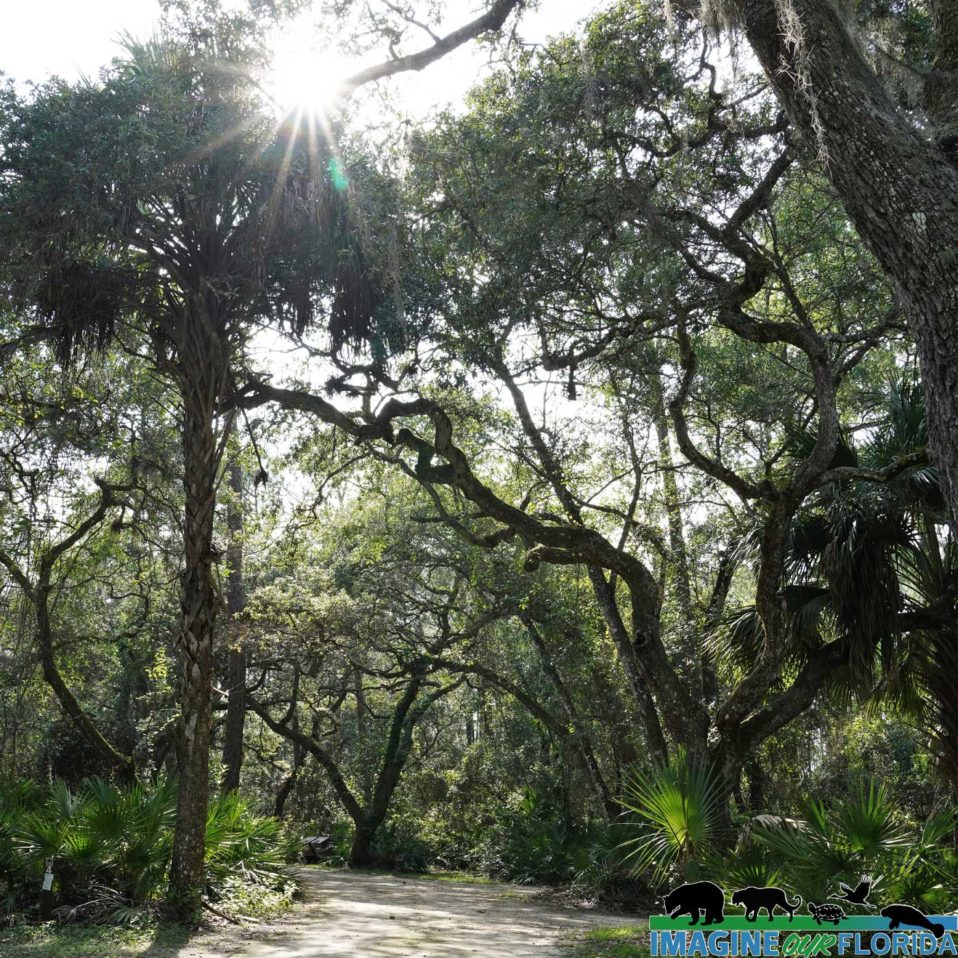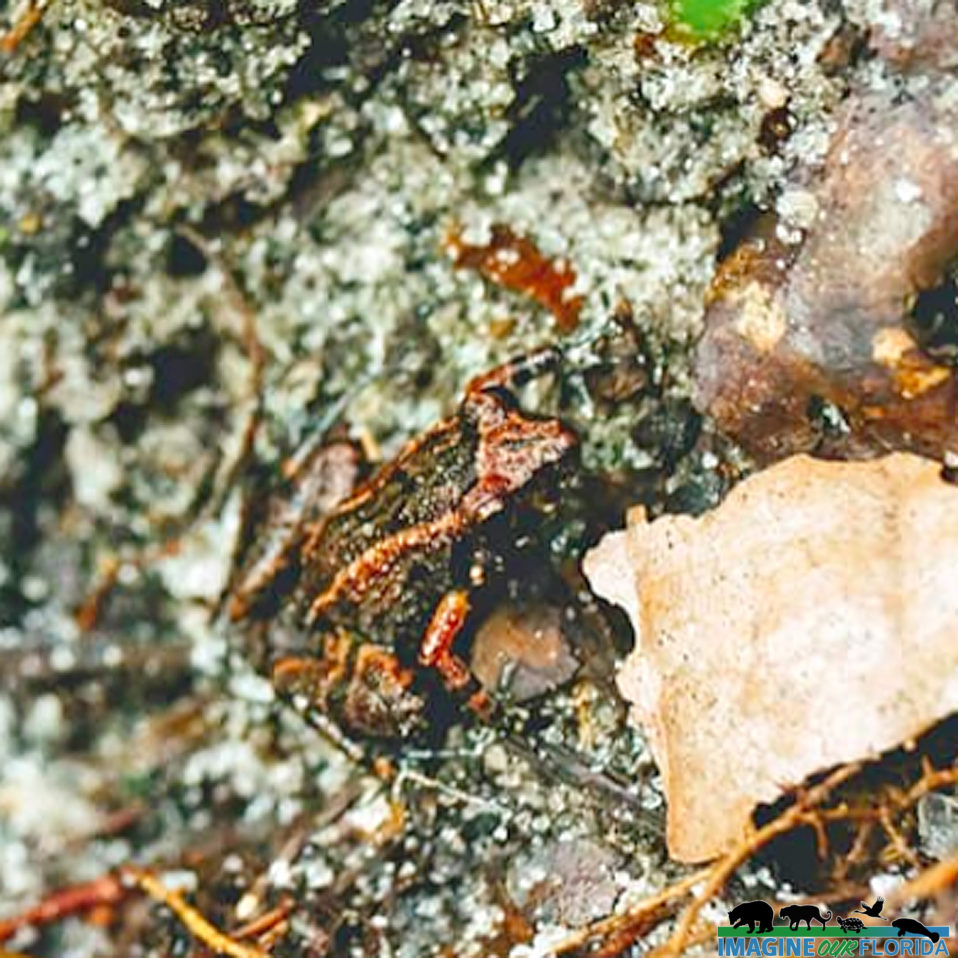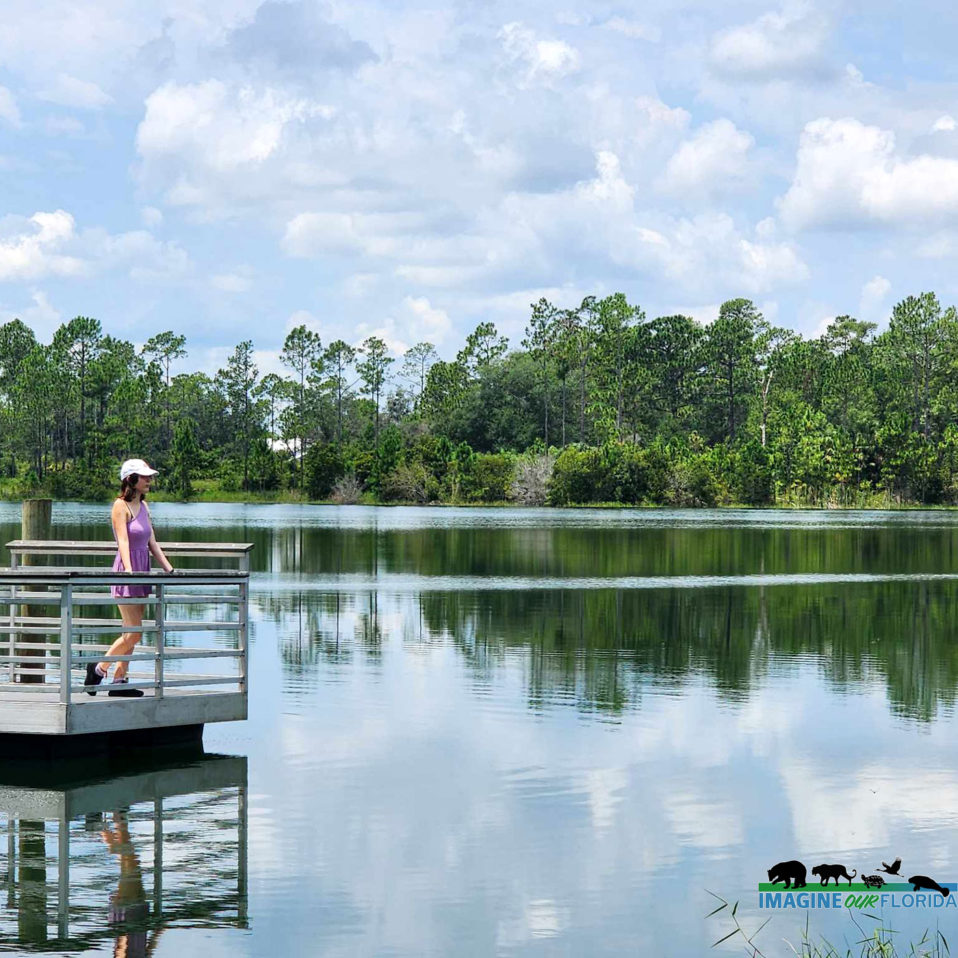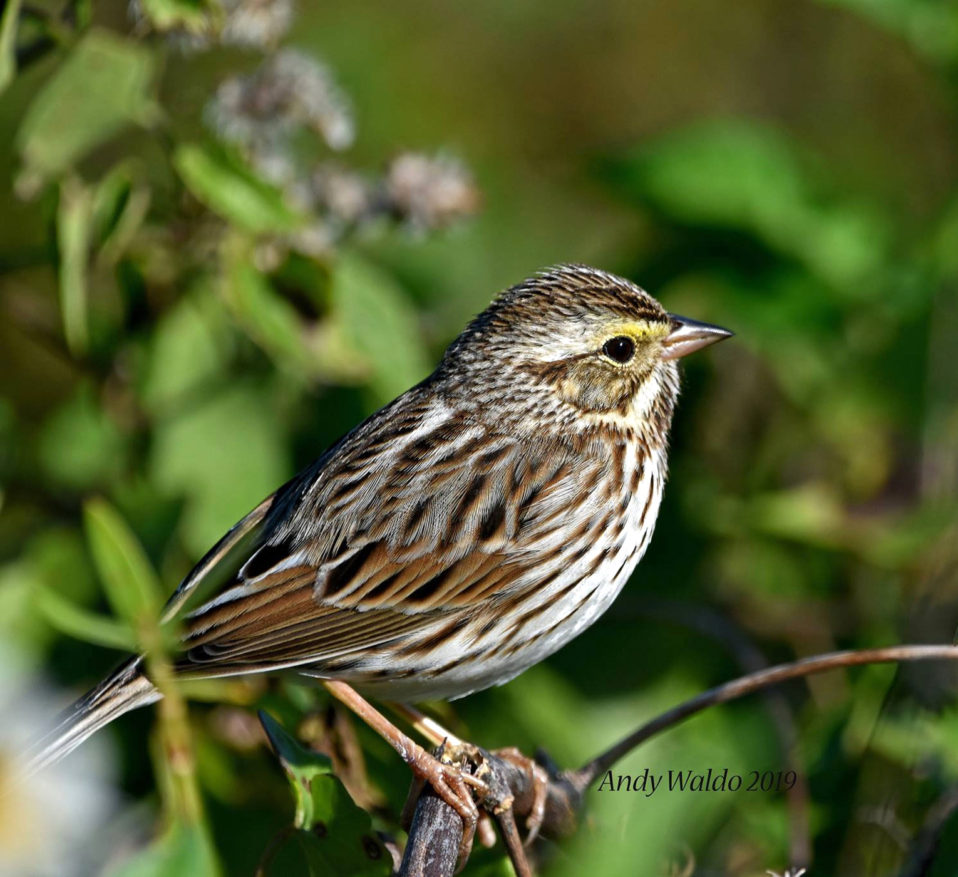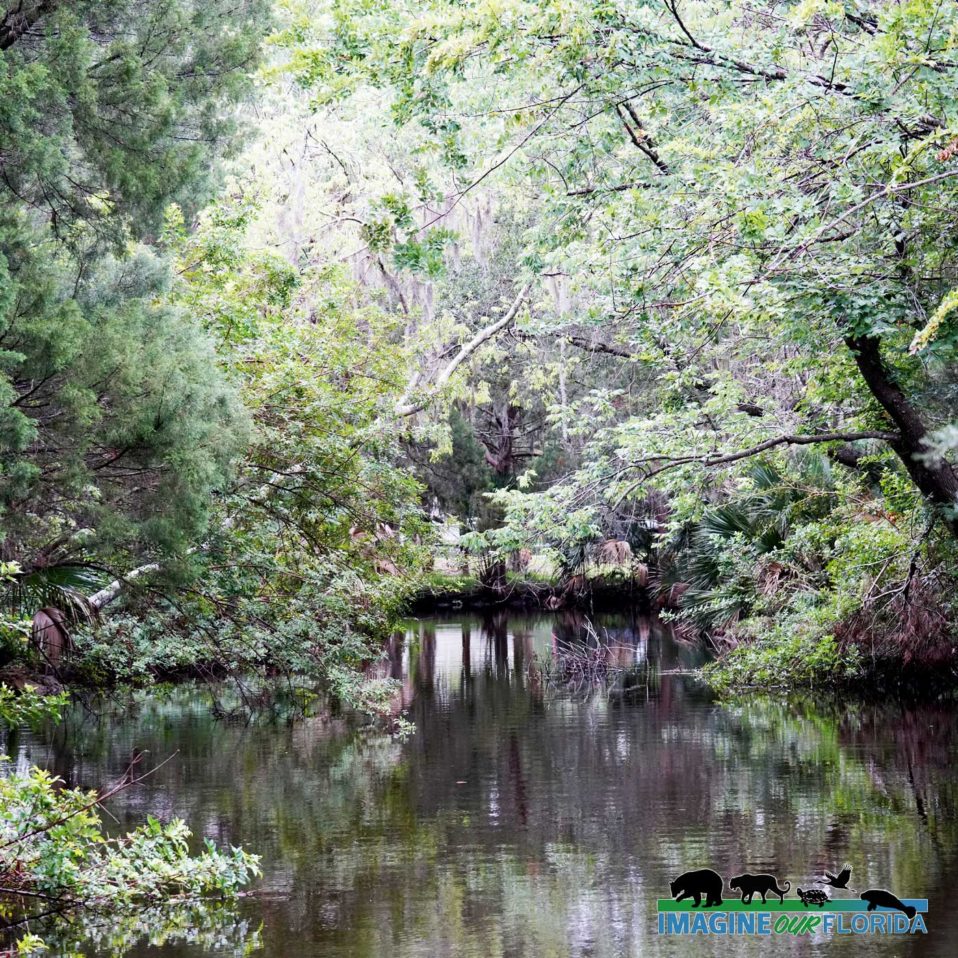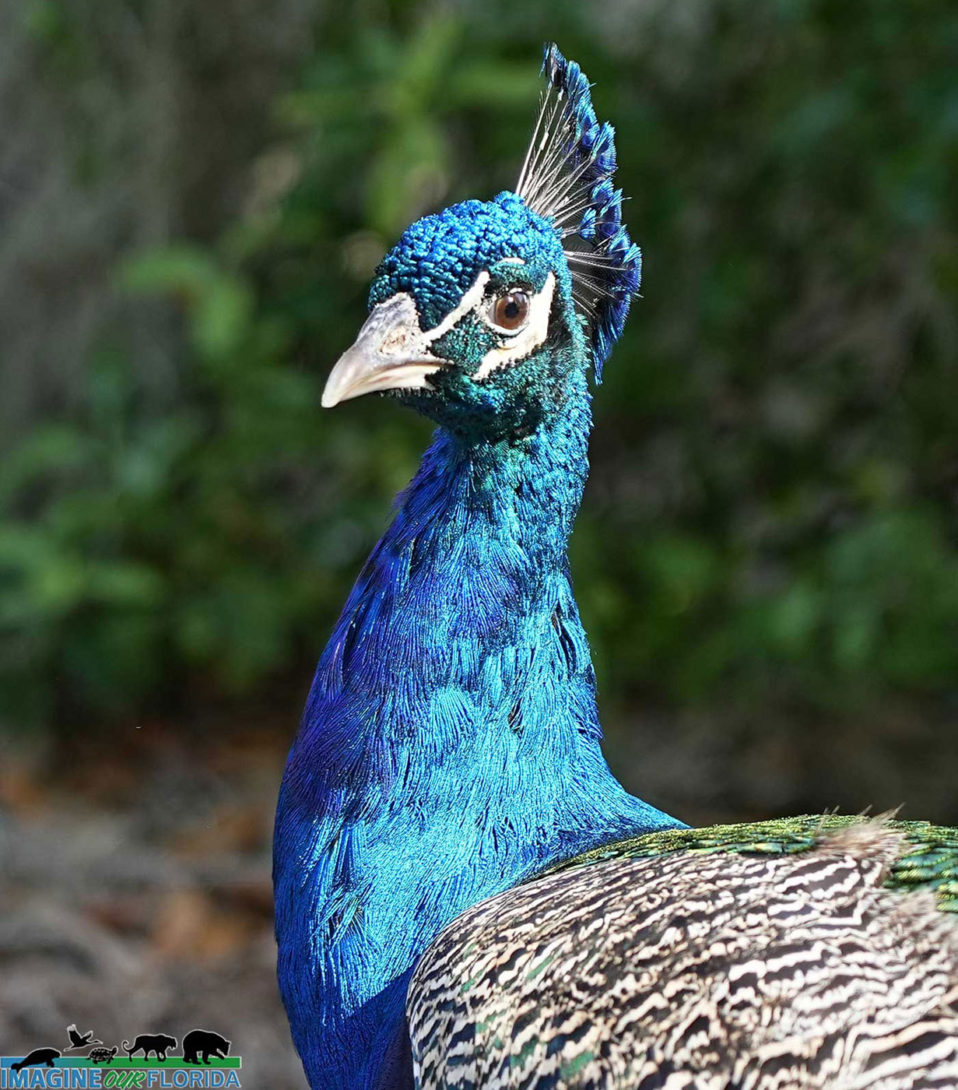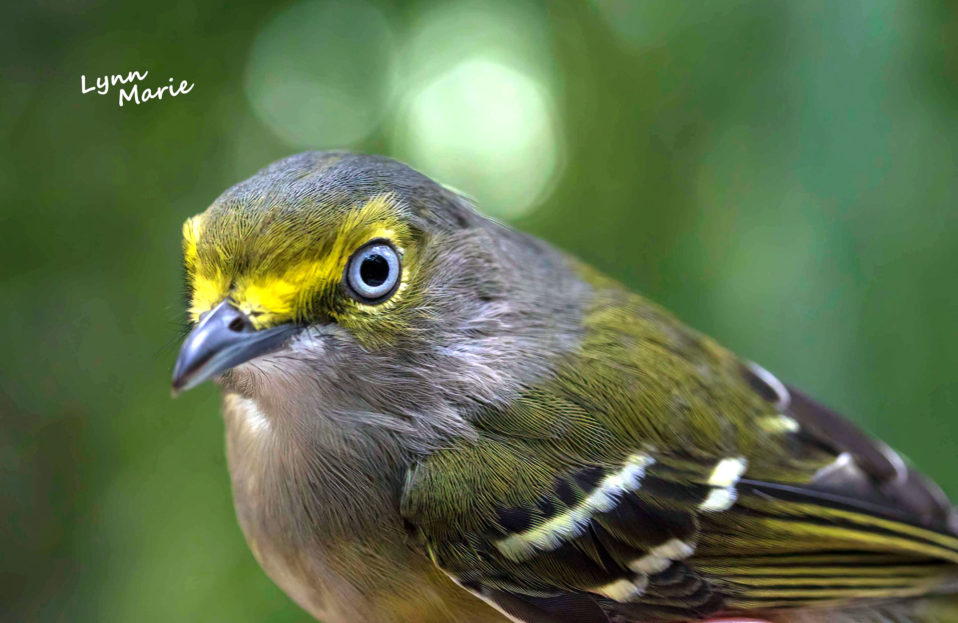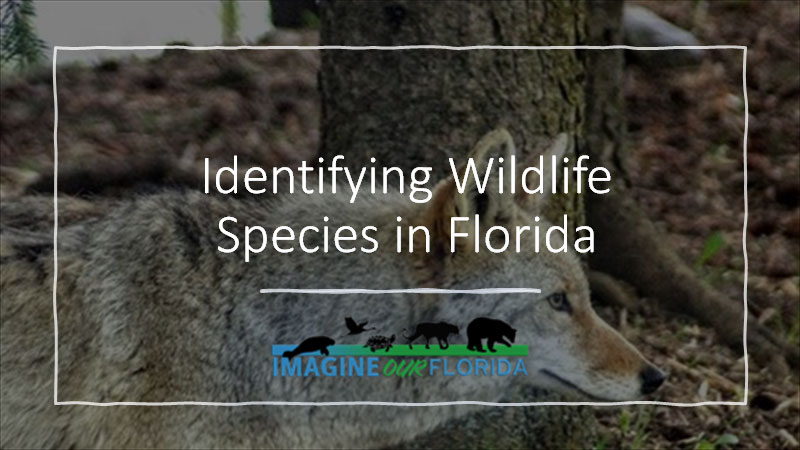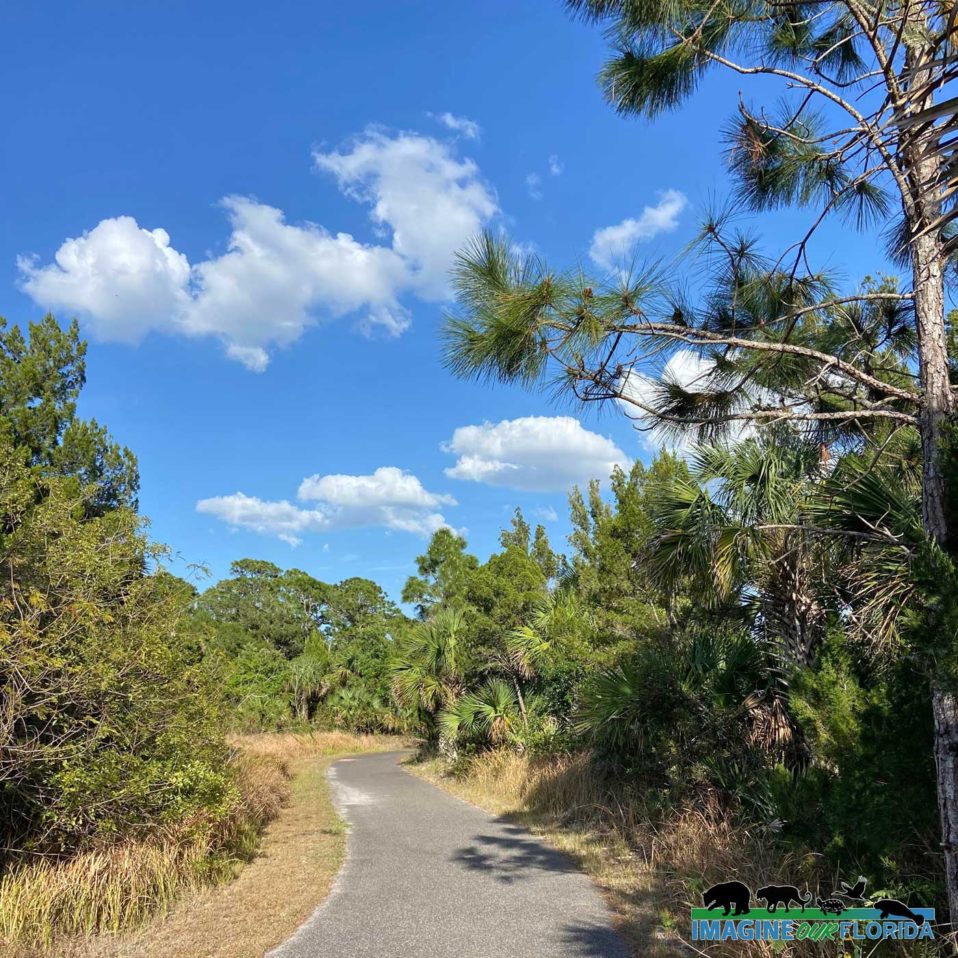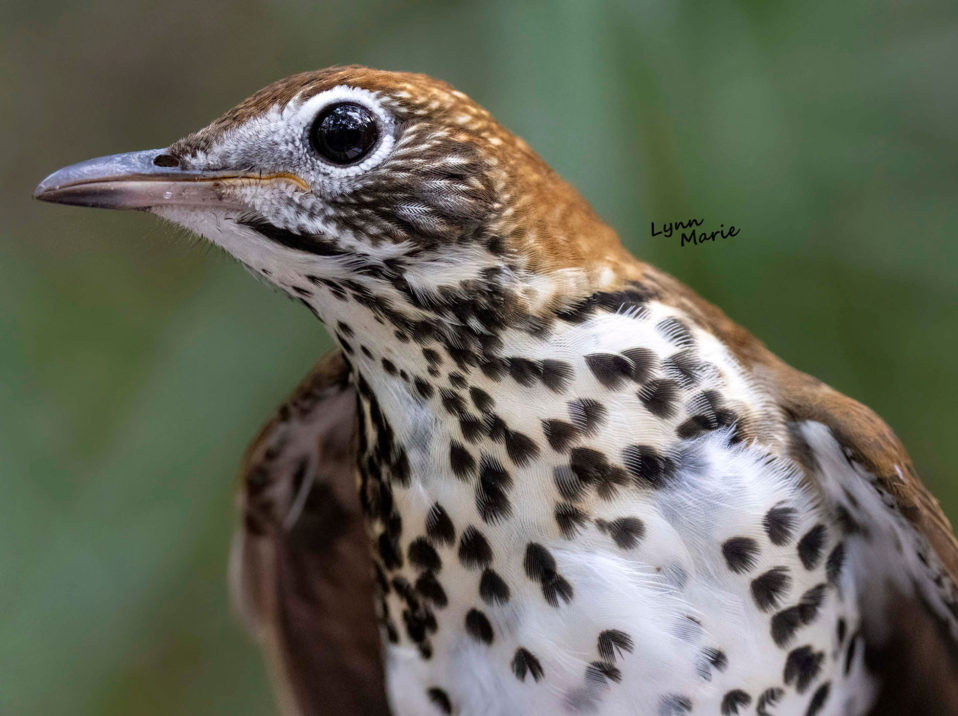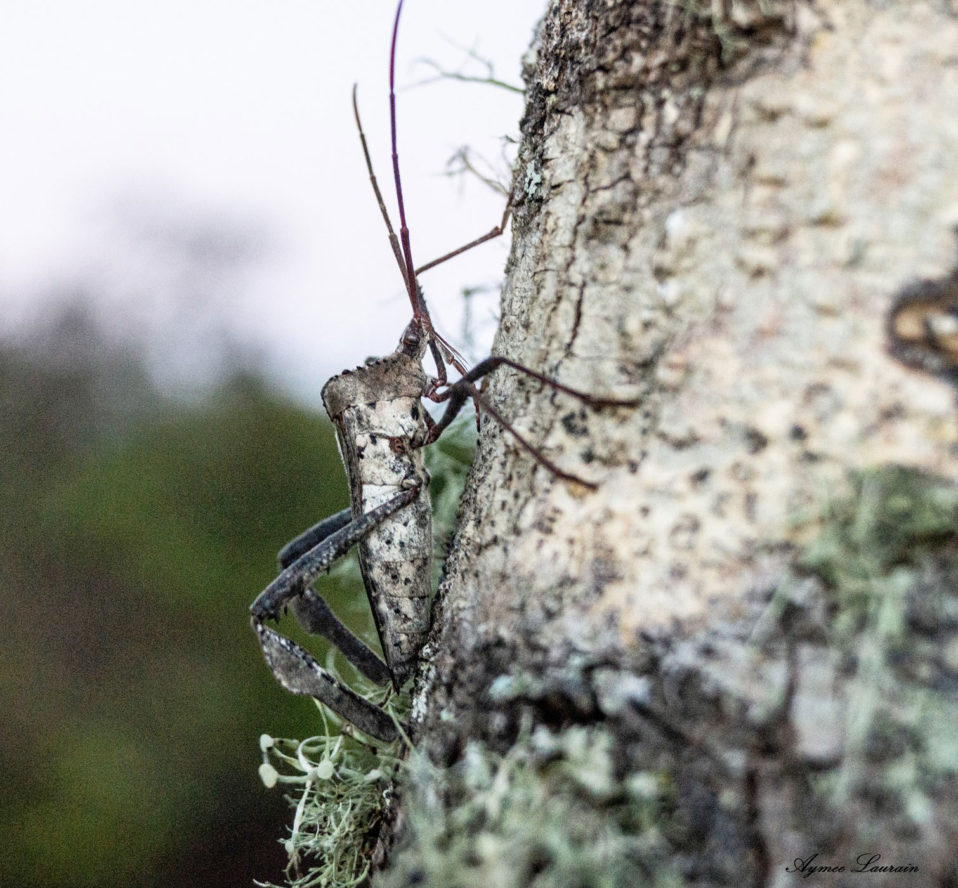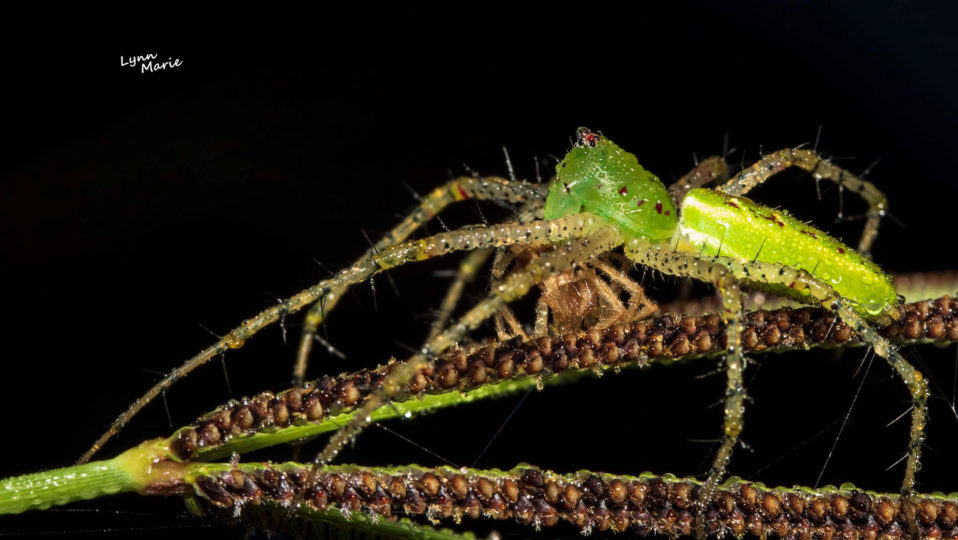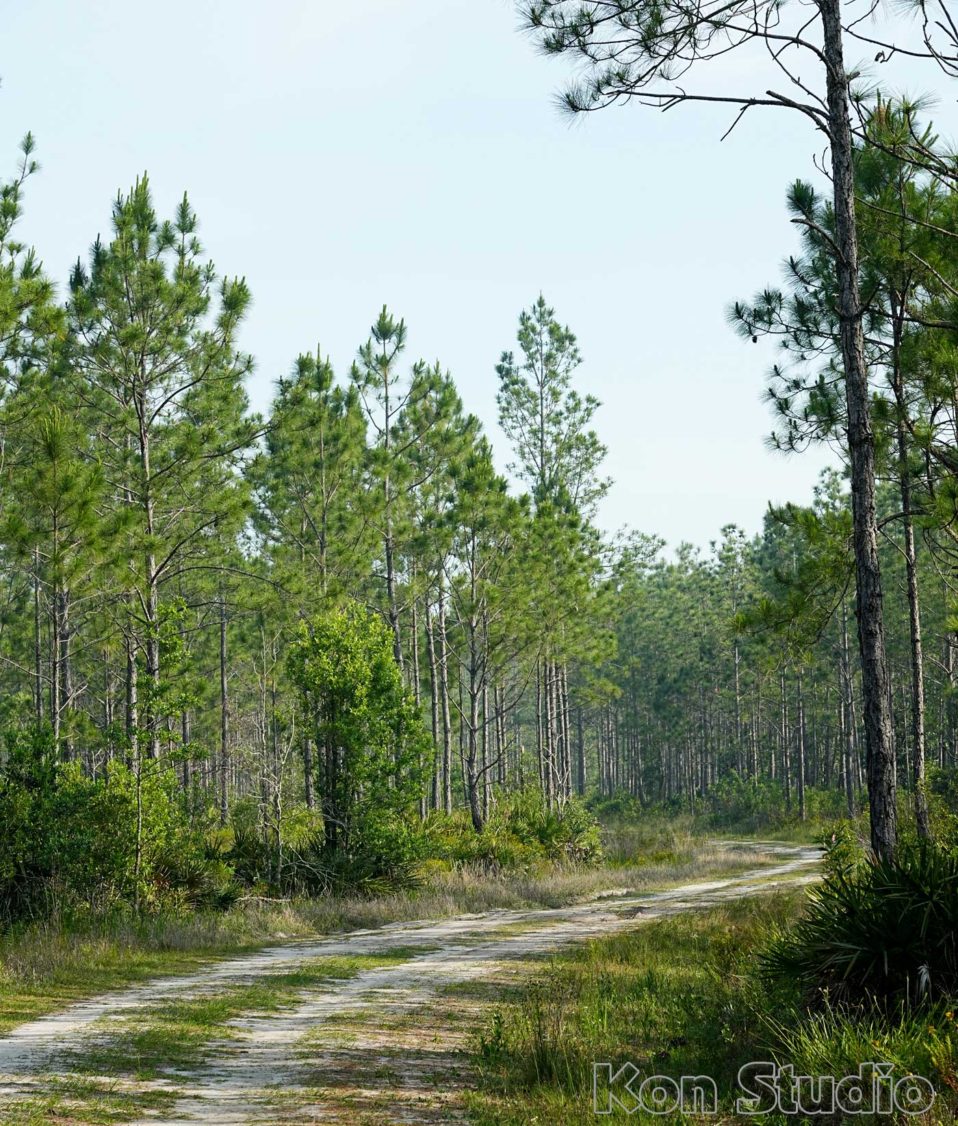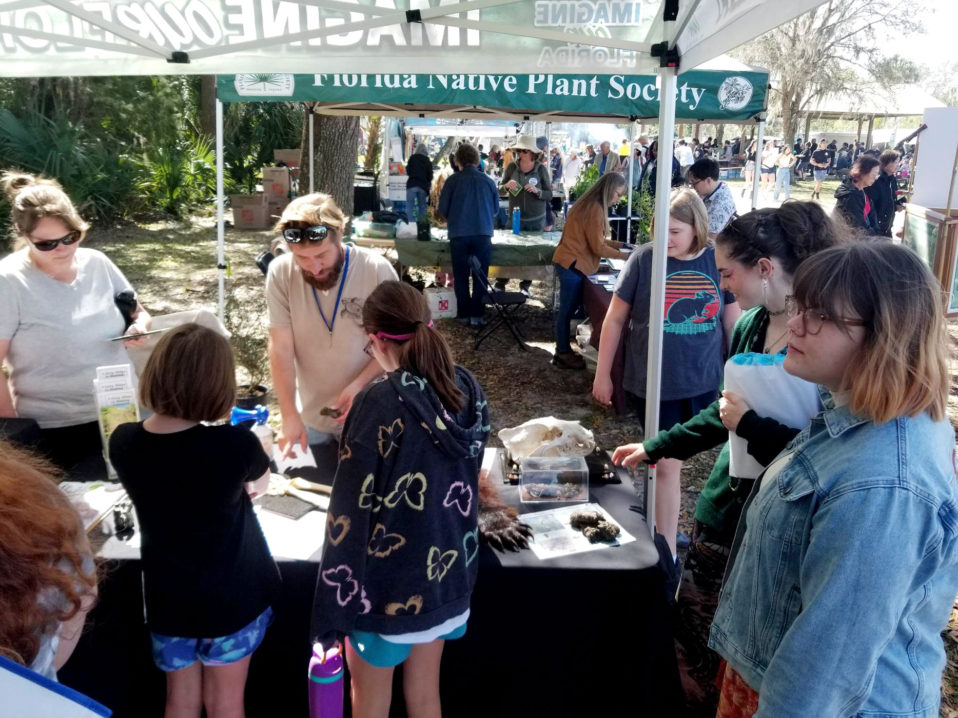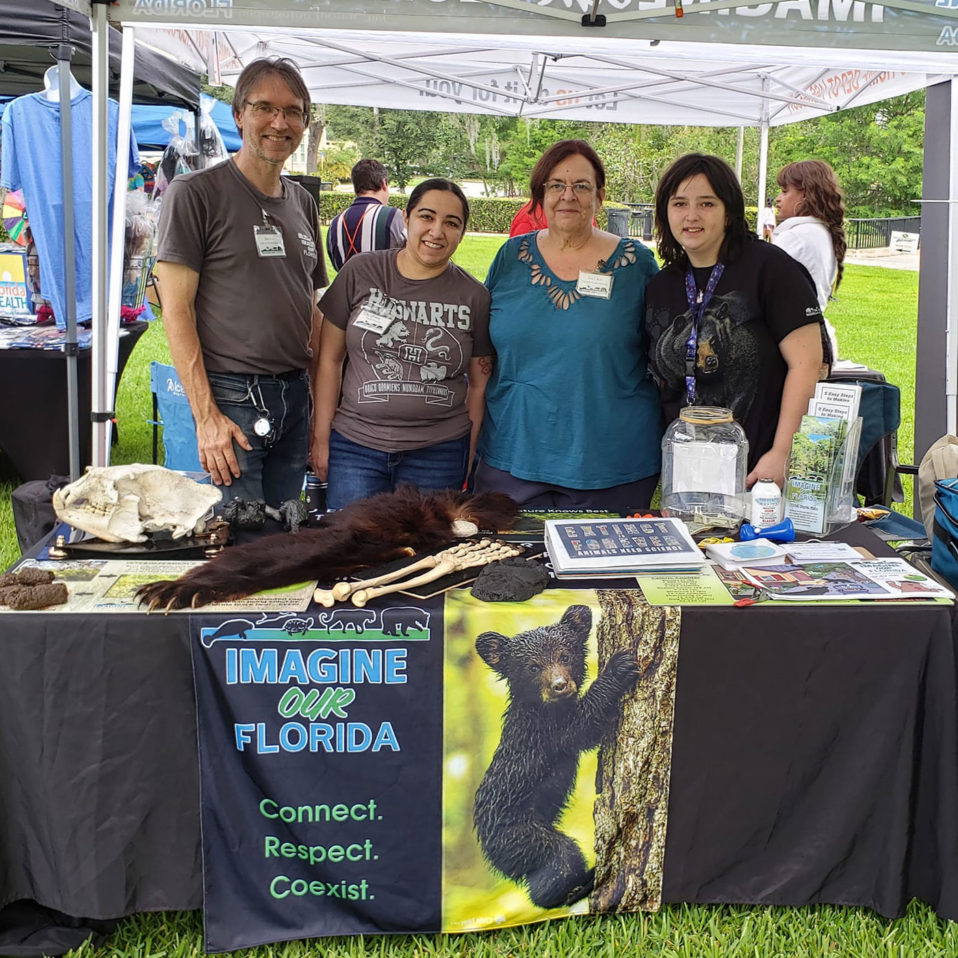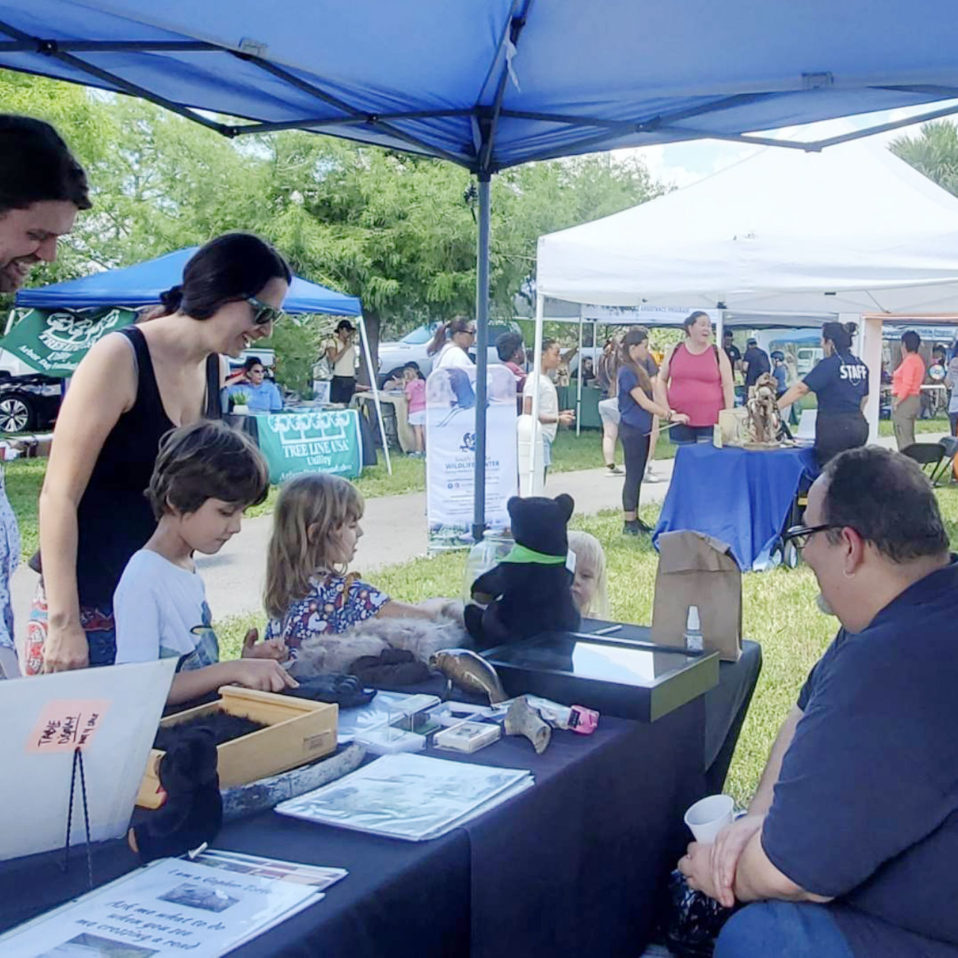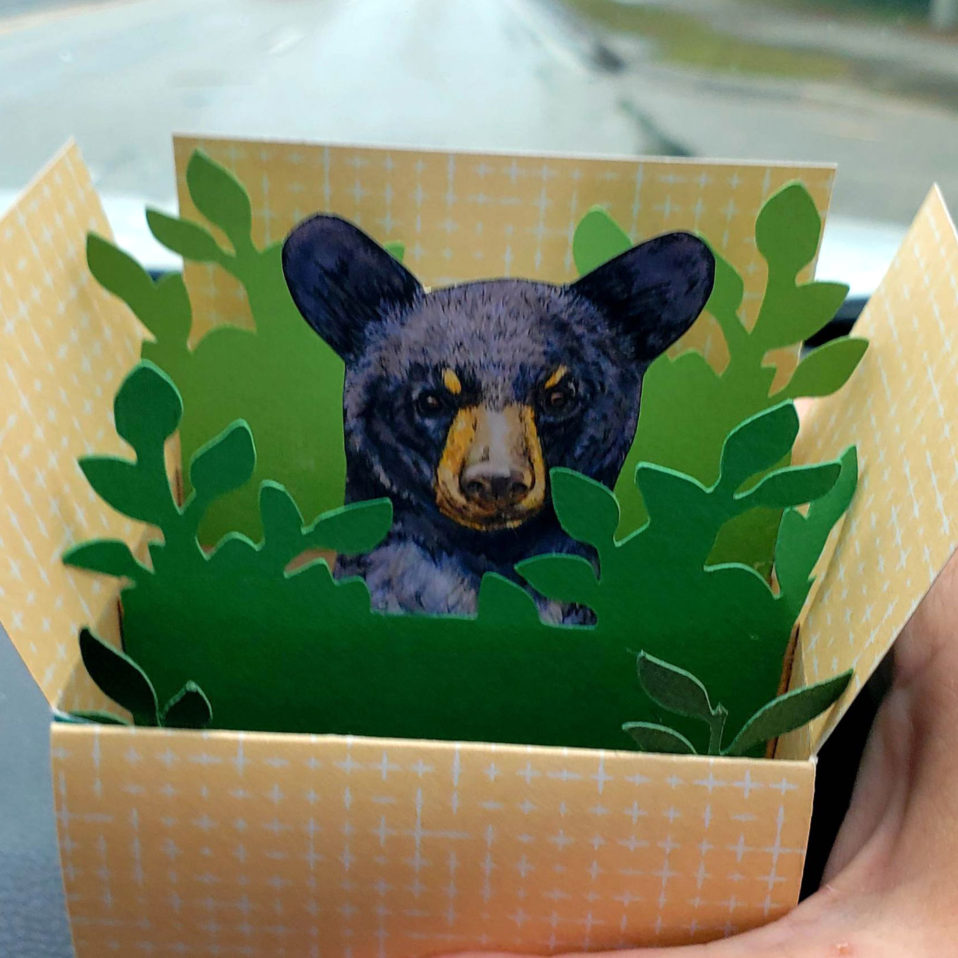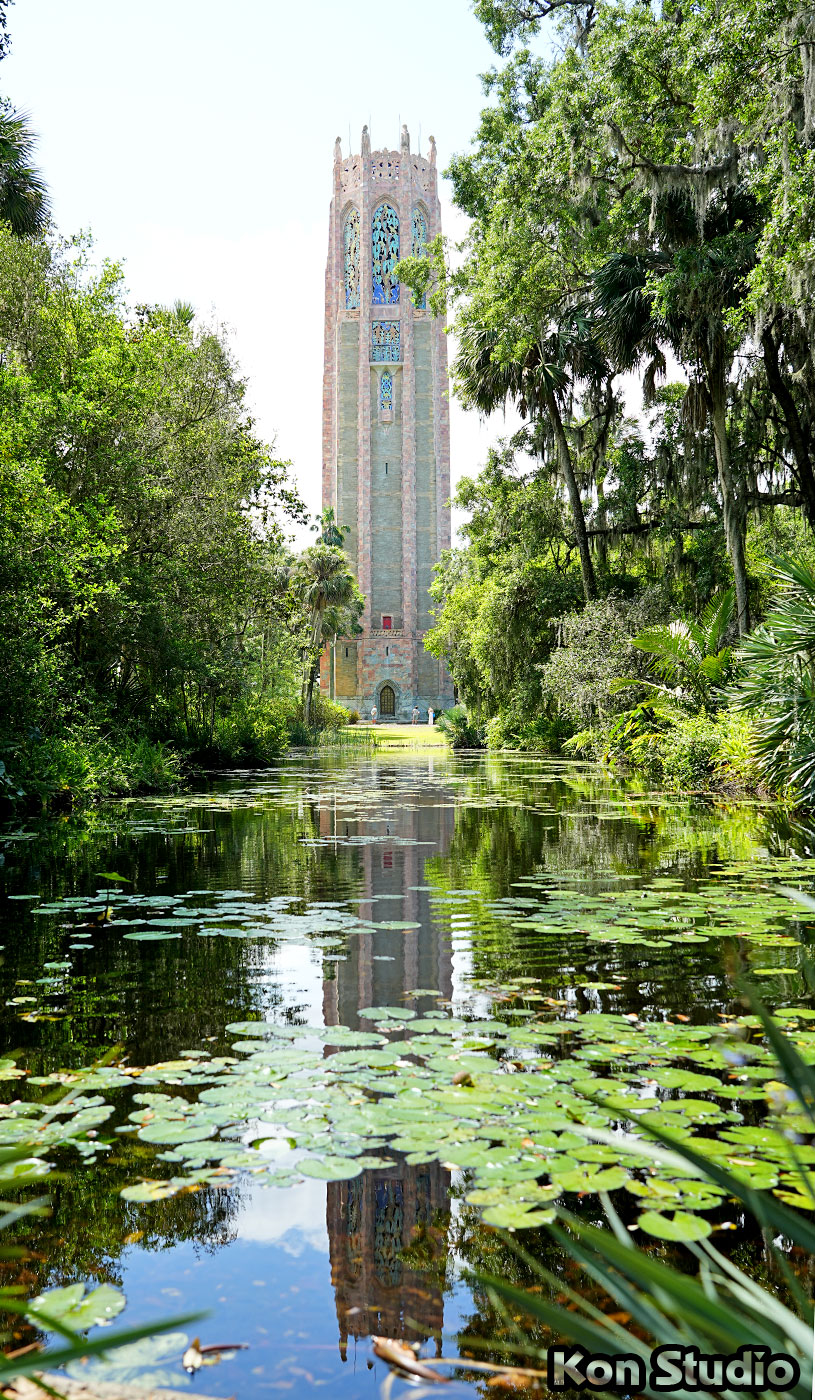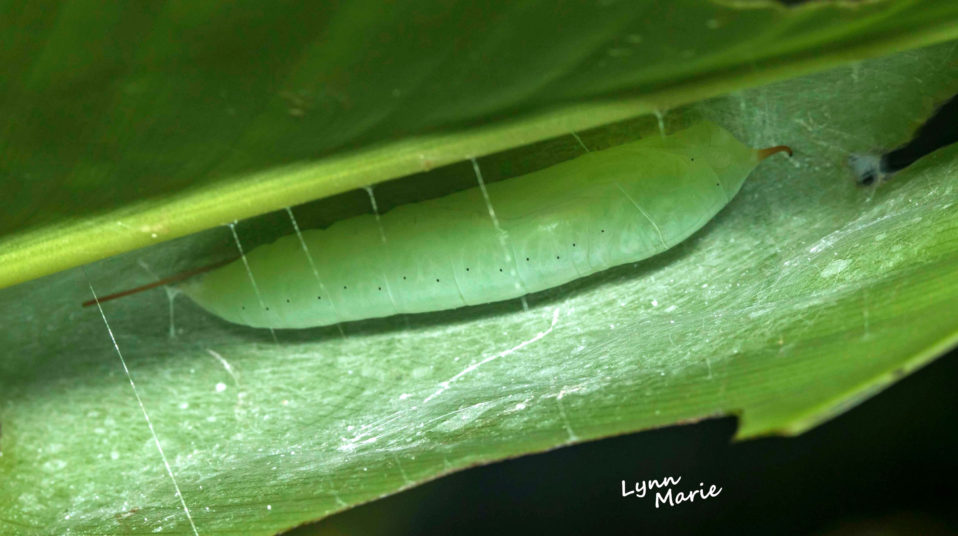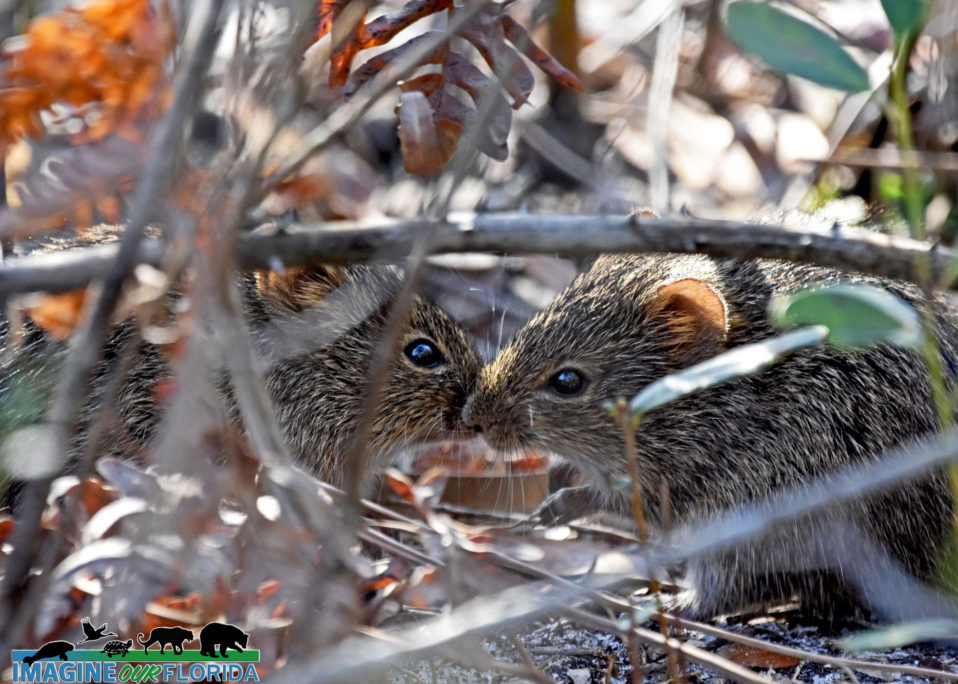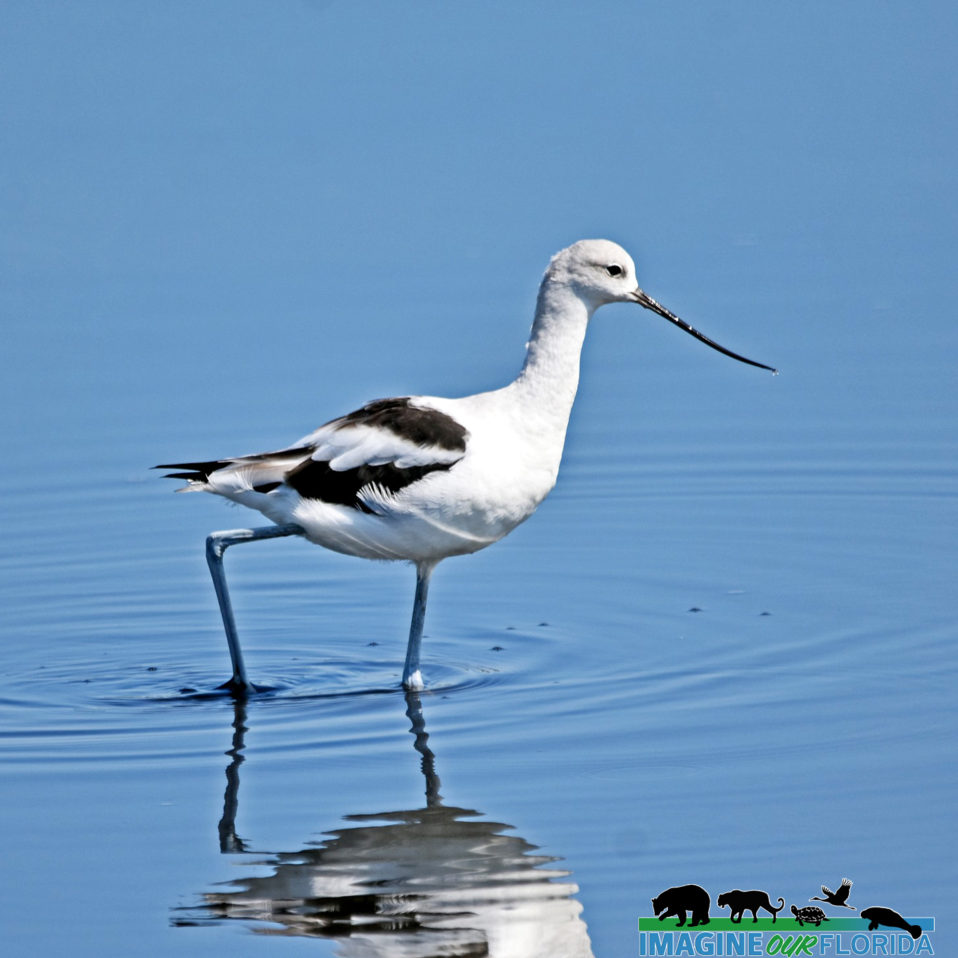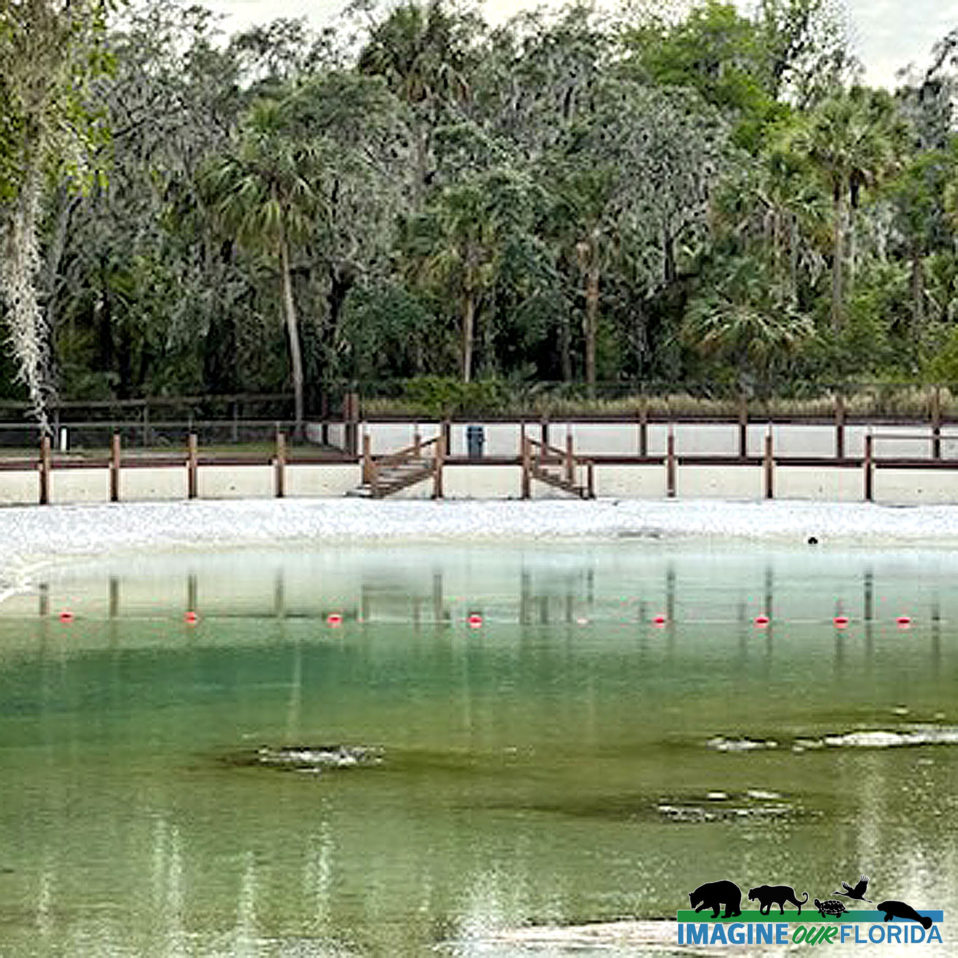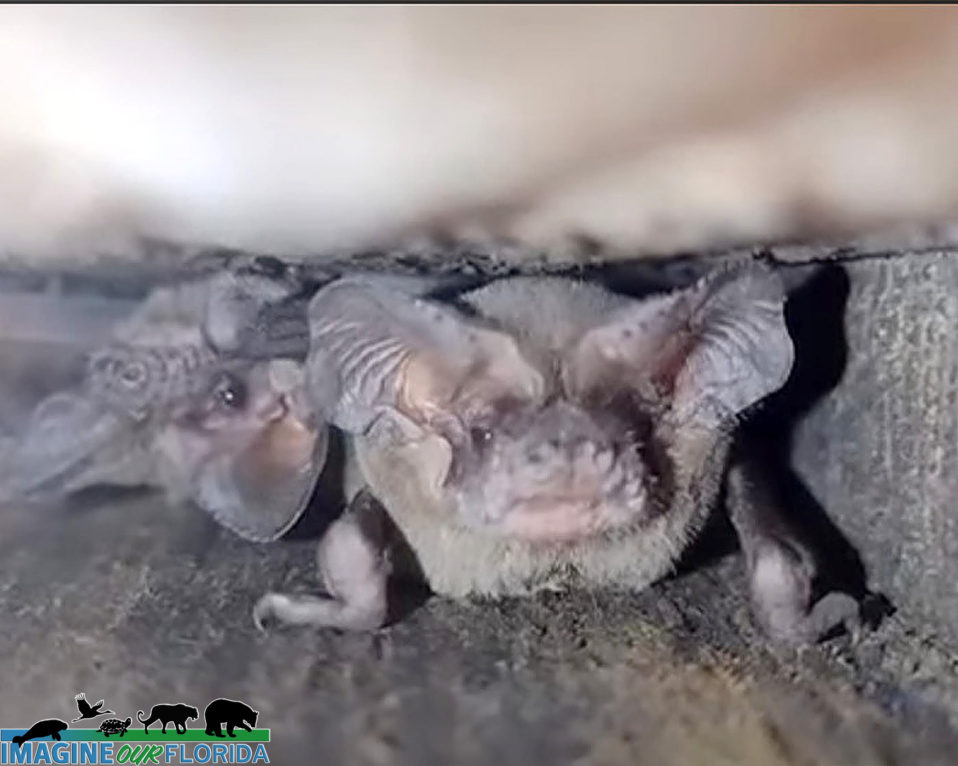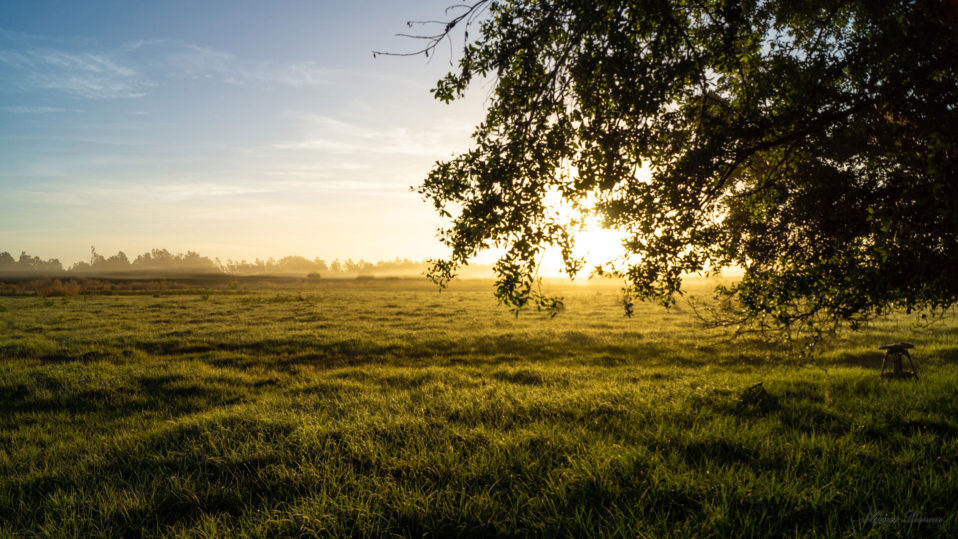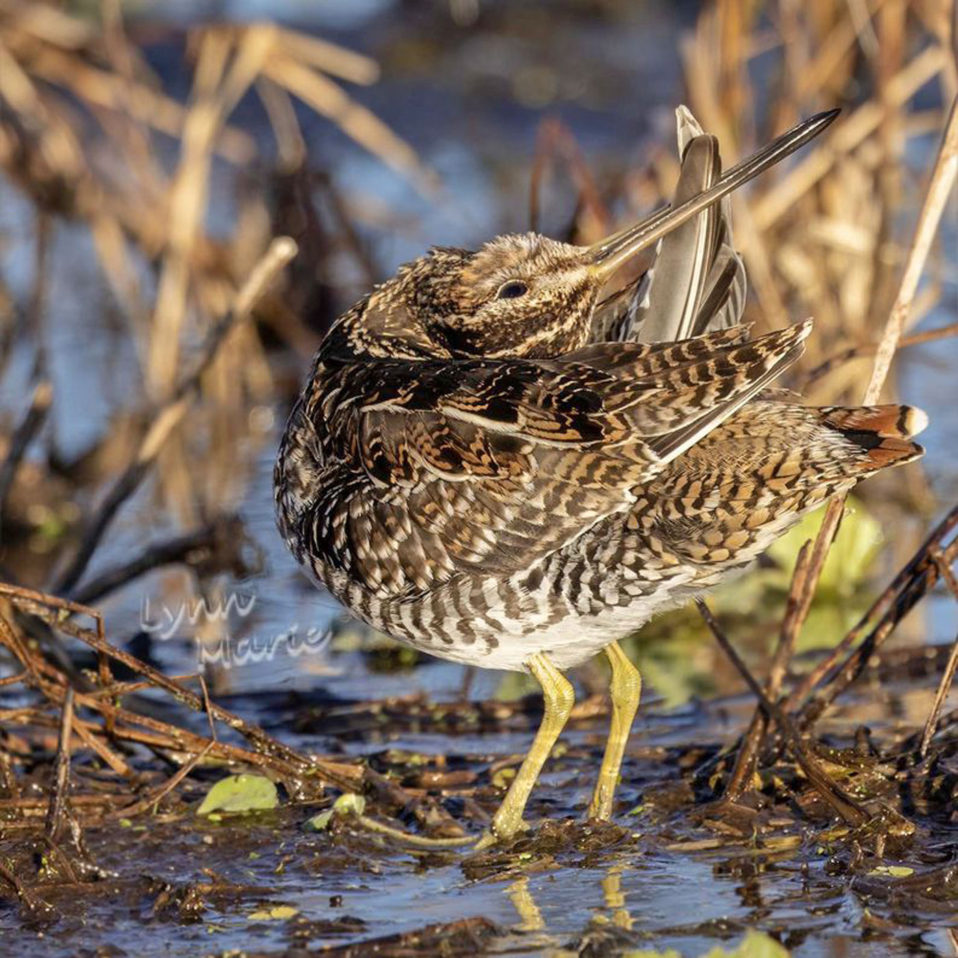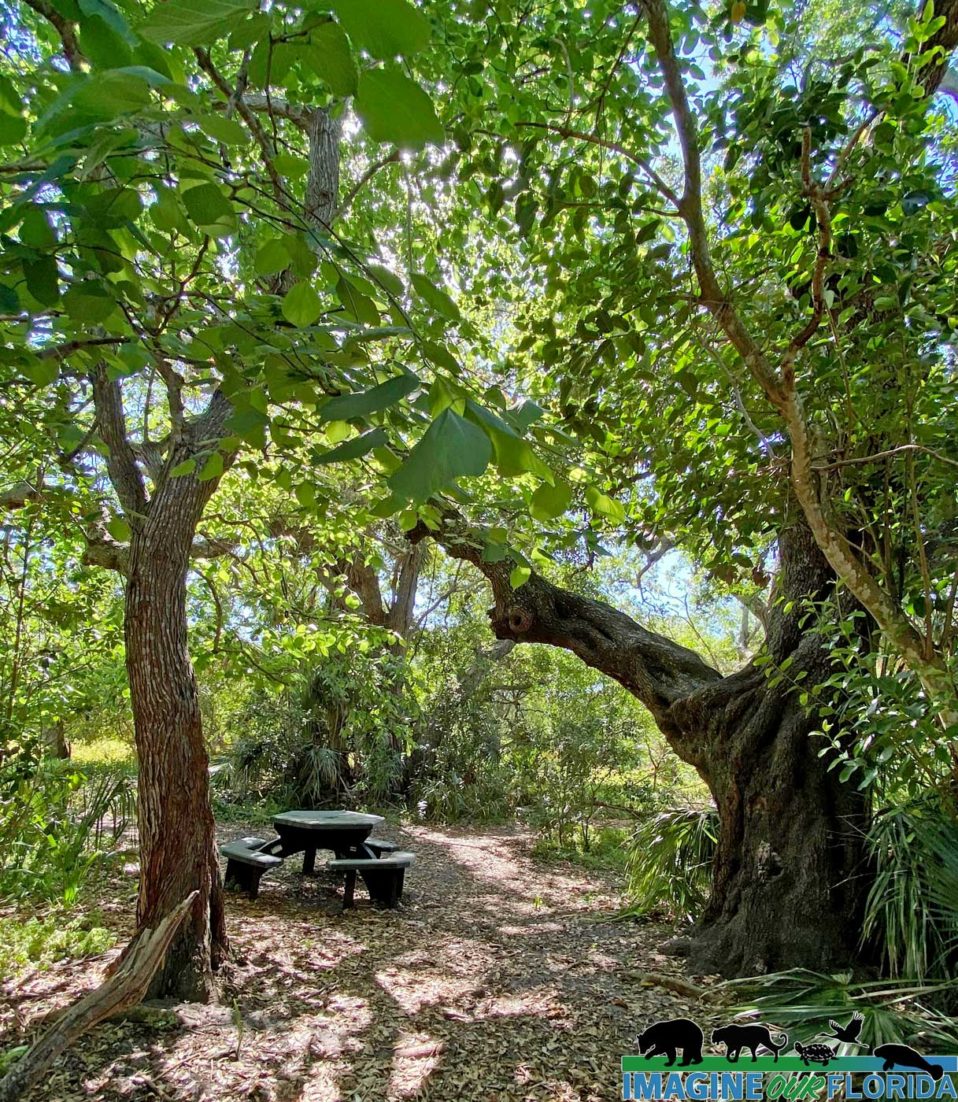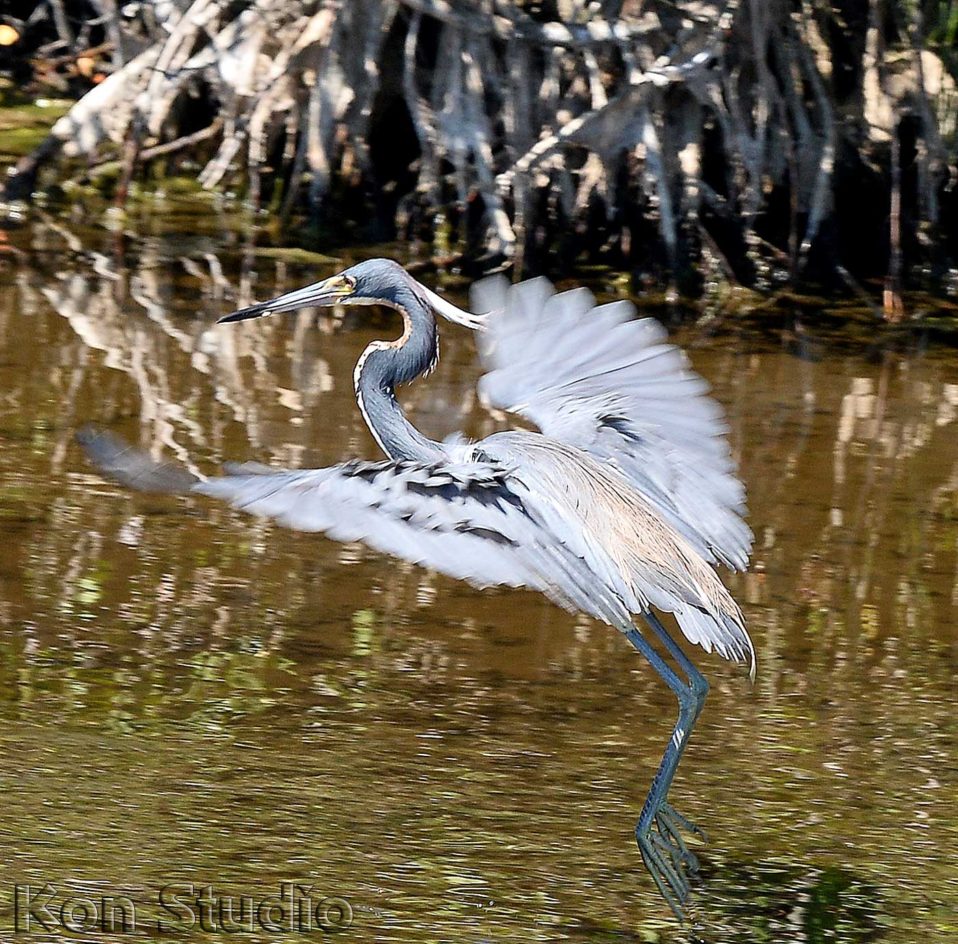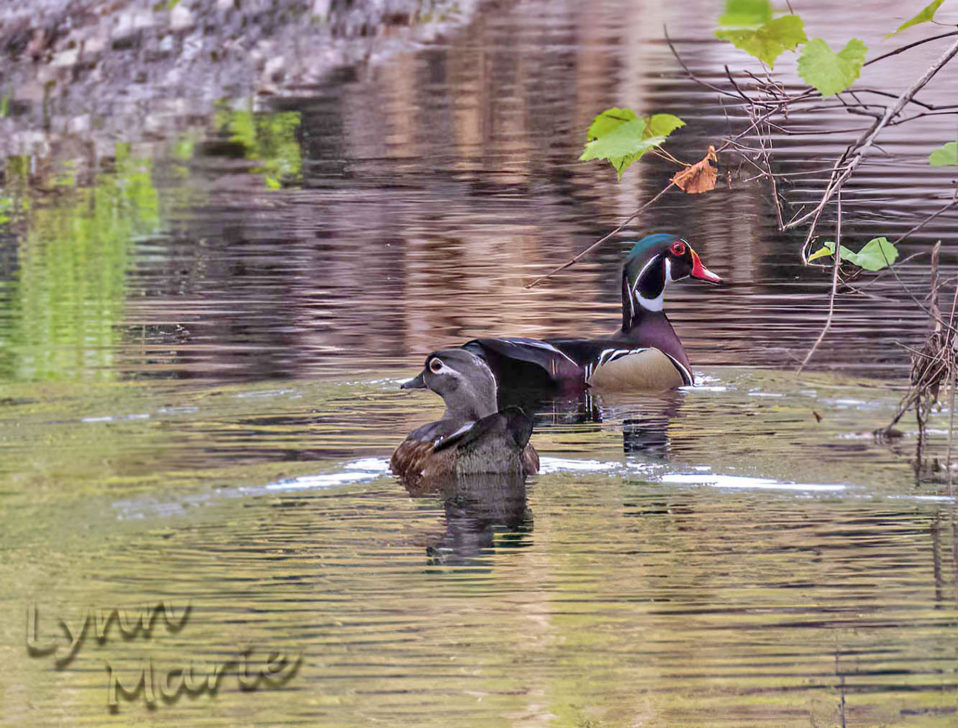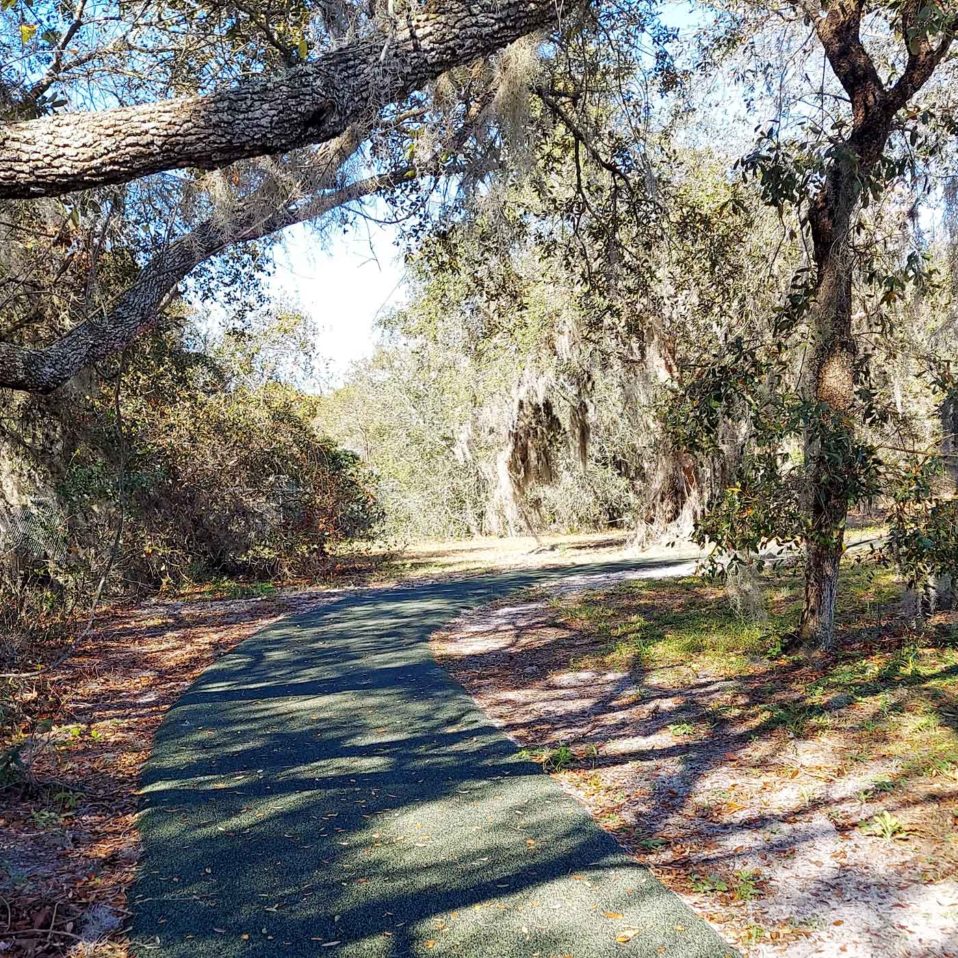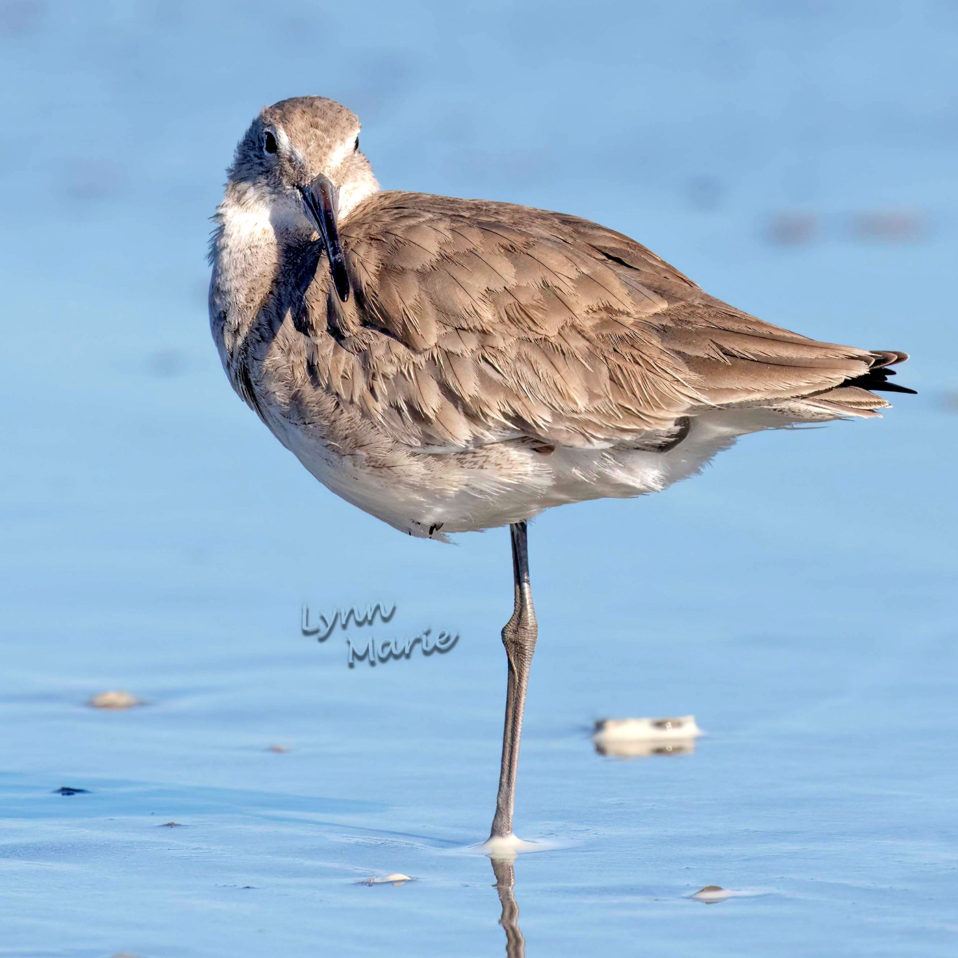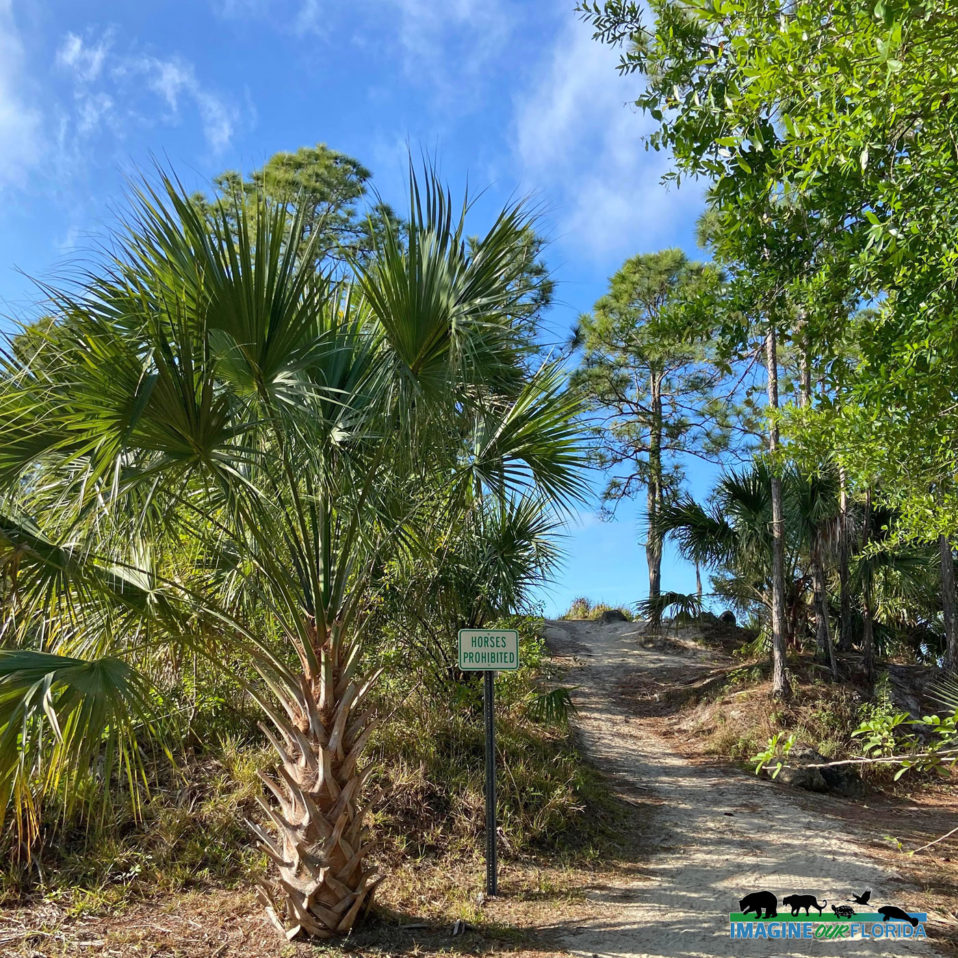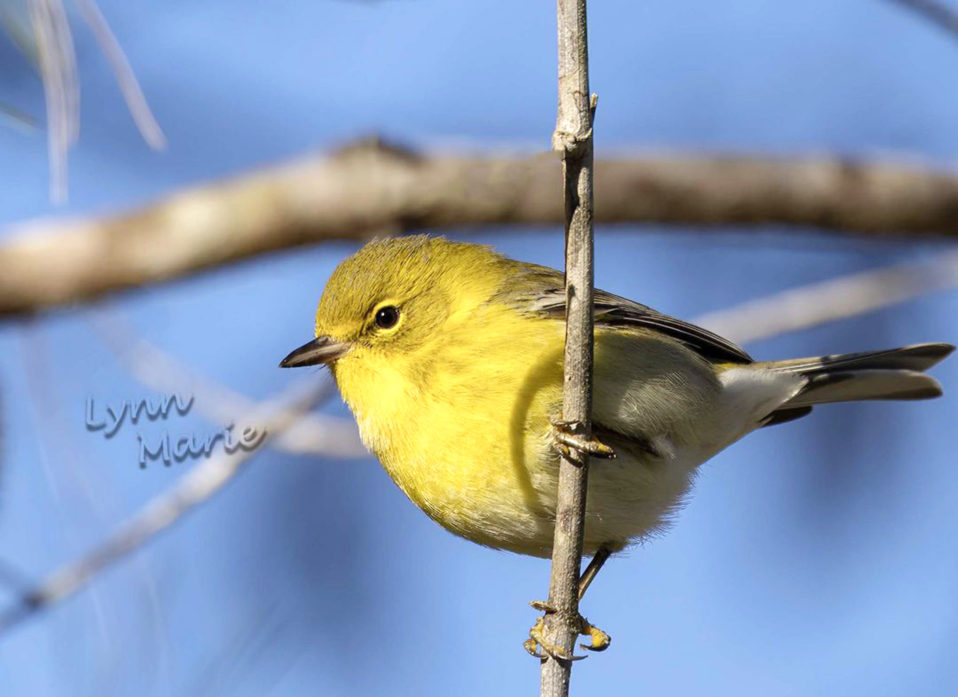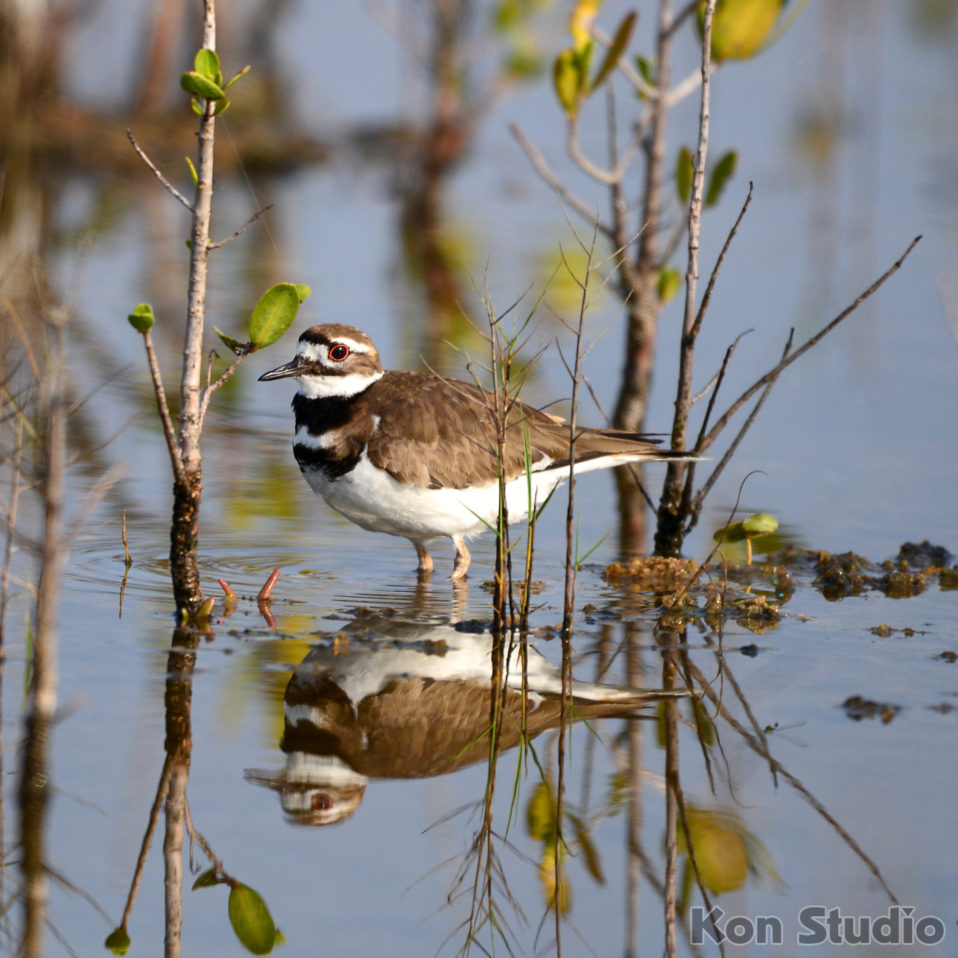Orange-spotted Flower Moth
Orange-spotted Flower Moth (Syngamia florella) This stunning moth is a true gem of the insect world. With its dark brown wings adorned with yellow patches and a striking red abdomen featuring two narrow bluish bands, it’s a sight to behold. That is if you look close enough. With a wingspan of about 15 mm they can easily be overlooked.. Habitat: Found from South Carolina to Florida and from Arkansas to Texas, this moth also makes its home in the West Indies, Mexico, and even Argentina1. Diet: The adult moths love to visit flowers, including dotted horsemint seen in this photo. Flight Season: While these butterflies migrate to northern areas during the warmer months, we can find them in Florida year-round. Next time you’re out in a weedy or brushy area, keep an eye out for these small and beautiful moths. Photo credit: Aymee Laurain
Bonaparte’s Gull
Bonaparte’s Gull This small gull is a Bonaparte’s Gull (scientific name: Chroicocephalus Philadelphia) in its nonbreeding colors with a black smudge behind its eye. Bonaparte’s Gulls breed in Canada and Alaska from late May to July, where they are the only gull species nesting in trees. In the north, nesting pairs can be found in spruce trees. The gulls fly south for the winter, feeding on small insects and fish by flying close to the water and plucking them from the air or water. They live near water, mostly lakes and ponds, but they can also be found near the ocean. Photo Credit and Author: Rowan Waldo
Rustweed
Rustweed – Polypremum procumbens, the sole species in the genus Polypremum from the family Tetrachondraceae. It can be a perennial or annual forb/herb with low-growing, sometimes multiple ascending stems. Small white blooms appear in summer and fall. Leaves are opposite, 1–2.5 cm long, narrow, and pointed. The foliage turns a beautiful brownish-red in autumn. Their range includes the Eastern United States, except the New England region, extending south to Central America and the West Indies, with some occurrences in South America. In the southeastern USA, it thrives in coastal plain and piedmont regions, often in disturbed areas, and is rare in mountainous regions.
span worm
If you examine the leaves of the snowbush (Breynia nivosa), you might spot a striking yellow caterpillar adorned with black stripes, feeding on its foliage. This caterpillar is the larval form of the white-topped black moth (Melanchroia chephise), a member of the Geometridae family, often referred to as “inchworms” or “spanworms” due to their characteristic looping movement. The White-topped Black Moth (Melanchroia chephise) and Its Relationship with the Snowbush (Breynia nivosa) Unlike most moths, which are primarily nocturnal, the white-topped black moth is an unusual daytime flyer. As adults, they have a wingspan of slightly over an inch, with velvety, dark navy-blue to black wings tipped in white on all four wings. The thorax is a vibrant orange, making them easily identifiable. When laying eggs, this species is highly selective about its chosen host plants. The snowbush (Breynia nivosa) is the preferred plant for egg-laying, but the moth can also utilize other plants like the Otaheite gooseberry (Phyllanthus acidus), snow-on-the-mountain (Euphorbia marginata), and potentially the white sapote (Casimiroa edulis). Once the eggs hatch, the caterpillars emerge as voracious feeders, quickly consuming the leaves of the host plant. While the caterpillars primarily feed on the leaves, if the leaf supply runs low, they may feed on the twigs and bark of the snowbush. Although this can cause significant defoliation, healthy snowbush plants are usually resilient and can recover from moderate caterpillar damage. However, in cases where the caterpillar population is high, and there are few natural predators, excessive feeding could lead to serious harm or even the death of the plant. No intervention is necessary for those who appreciate the beauty and uniqueness of the moth and its caterpillar. However, if defoliation is a concern and the aesthetic of the snowbush is important, controlling the caterpillar population is essential. To manage infestations, regularly inspect the undersides of snowbush leaves for salmon-pink eggs, which can be manually removed and destroyed.
White-topped Black Moth
The White-topped Black Moth (Melanchroia chephise) and Its Relationship with the Snowbush (Breynia nivosa) If you examine the leaves of the snowbush (Breynia nivosa), you might spot a striking yellow caterpillar adorned with black stripes, feeding on its foliage. This caterpillar is the larval form of the white-topped black moth (Melanchroia chephise), a member of the Geometridae family, often referred to as “inchworms” or “spanworms” due to their characteristic looping movement. Unlike most moths, which are primarily nocturnal, the white-topped black moth is an unusual daytime flyer. As adults, they have a wingspan of slightly over an inch, with velvety, dark navy-blue to black wings tipped in white on all four wings. The thorax is a vibrant orange, making them easily identifiable. When laying eggs, this species is highly selective about its chosen host plants. The snowbush (Breynia nivosa) is the preferred plant for egg-laying, but the moth can also utilize other plants like the Otaheite gooseberry (Phyllanthus acidus), snow-on-the-mountain (Euphorbia marginata), and potentially the white sapote (Casimiroa edulis). Once the eggs hatch, the caterpillars emerge as voracious feeders, quickly consuming the leaves of the host plant. While the caterpillars primarily feed on the leaves, if the leaf supply runs low, they may feed on the twigs and bark of the snowbush. Although this can cause significant defoliation, healthy snowbush plants are usually resilient and can recover from moderate caterpillar damage. However, in cases where the caterpillar population is high, and there are few natural predators, excessive feeding could lead to serious harm or even the death of the plant. No intervention is necessary for those who appreciate the beauty and uniqueness of the moth and its caterpillar. However, if defoliation is a concern and the aesthetic of the snowbush is important, controlling the caterpillar population is essential. To manage infestations, regularly inspect the undersides of snowbush leaves for salmon-pink eggs, which can be manually removed and destroyed.
Lake Proctor Wilderness Area
Lake Proctor Wilderness Area, located in Seminole County, is a 465-acre swath of land that supports multiple native ecosystems, such as flatwoods, oak hammocks, sandhills, and freshwater lakes. This site is taking massive steps to regrow native plants to recharge the local aquifer, otherwise known as the Geneva Bubble. While there are no boat docks or camping areas, this park supports four dog-friendly trails. The main loop, color-coded red, is roughly 2.6 miles and features several branches off the main path, which lead to beautiful vistas. The blue trail leads to the edge of Lake Proctor, where several waterbirds can be spotted. It’s worth noting that the trails are open to those on horseback. Look for many native animals along the path. This park is not ADA-accessible. Lake Proctor Wilderness Area is an excellent spot for wildlife and, for you, a short hike and birdwatching! Photo Credit: Dan Kon Author: Sarina Pennington
St. Lucie South Campground
The St. Lucie South Campground is a beautiful place to marvel at Florida’s natural beauty. Located on the Okeechobee Waterway, the campground features several ways to explore the local flora and fauna. Take a boat or a canoe, or simply hike through the tropical paradise that surrounds this stunning campsite. The campsite allows boat docking, mooring, and water hookups for RVs if the usual tent is not to your taste. There are bathrooms, showers, grills, lights, and electrical outlets for those with tent setups. Beyond the basics, there is also a Visitor’s Center and Day Use Area with a playground for the little ones. The whole campsite is also wheelchair accessible. Overall, St. Lucie South Campsite is an excellent location for both those just starting to get out camping and seasoned trail veterans. If the canal could be more interesting, Hutchison Island is nearby for those looking for a quick beach day trip. There is something to do for everyone in the family! Author: Sarina Pennington
Cross-Leaved Milkwort
Cross-leaved milkwort (Polygala cruciata) is a unique and fascinating plant native to Florida’s wetlands, prairies, and moist pinelands. This perennial herb is easily recognizable by its cross-shaped leaf arrangement and vibrant purple-to-pink flowers, which bloom from spring through fall. The plant typically grows to about 1 to 2 feet tall and prefers sunny, moist environments. Cross-leaved milkwort plays a significant role in the local ecosystem by providing nectar for various pollinators, including bees and butterflies. It is also a part of the diverse flora that helps maintain the health and stability of wetland habitats. Conservation of these habitats is crucial, as they are threatened by development and changes in land use. Protecting areas where cross-leaved milkwort thrives ensures the survival of this and many other native species. Photo Credit: Lynn Marie
Anna Maria Bayfront Park
Anna Maria Bayfront Park, located on the northern tip of Anna Maria Island in Florida, offers stunning views of the Gulf of Mexico and Tampa Bay. This park is known for its diverse ecosystems, including sandy beaches, mangroves, and seagrass beds, which support a variety of wildlife. Visitors can enjoy activities such as swimming, sunbathing, picnicking, fishing, kayaking, and paddleboarding in the park’s calm, clear waters. Birdwatching is also popular, with species like herons, egrets, pelicans, and ospreys frequently spotted. The park’s conservation efforts include habitat restoration, educational programs, and sustainable practices to preserve its natural beauty. Anna Maria Bayfront Park is an ideal destination for nature enthusiasts, families, and anyone seeking a peaceful escape. Whether you want to relax on the beach, explore the coastal environment, or learn about local wildlife, this park offers something for everyone. Visit Anna Maria Bayfront Park to experience the unique charm and ecological richness of Florida’s Gulf Coast. For more information: https://tinyurl.com/2ycxlfy6
Mottled Duck
The Mottled Duck (Anas fulvigula) is a distinctive species of waterfowl native to the southeastern United States, with a significant population in Florida. Known for its unique plumage and habitat preferences, the Mottled Duck plays a crucial role in the local ecosystem and offers valuable insights into wetland conservation. The Mottled Duck is a medium-sized dabbling duck similar in appearance to the Mallard but with some notable differences. Both males and females have a mottled brown appearance, which provides excellent camouflage in their wetland habitats. Males have a yellowish bill, while females have an orange to brownish bill with dark splotches. Mottled Ducks typically range from 19 to 22 inches long with a wingspan of approximately 33 to 36 inches. In Florida, Mottled Ducks are commonly found in freshwater and brackish wetlands, including marshes, swamps, and coastal estuaries. They are non-migratory, meaning they reside in these habitats year-round. Their range extends from the Florida peninsula westward to eastern Texas, but the highest population density is in Florida. Mottled Ducks have a varied diet consisting of aquatic plants such as seeds, stems, and roots of various aquatic vegetation, invertebrates including insects, snails, and small crustaceans, and grains including foraging on waste grain from rice and other crops. Breeding season for Mottled Ducks in Florida typically begins in early spring. Nests are usually built on the ground in dense vegetation near water. Females construct nests using grasses, reeds, and down feathers. Females lay an average of 8 to 12 eggs per clutch. Incubation lasts about 24 to 28 days, primarily undertaken by the female. After hatching, ducklings are precocial, meaning they are relatively mature and mobile. They follow the mother to water shortly after birth and begin foraging on their own within days. The Mottled Duck is currently listed as a species of least concern by the International Union for Conservation of Nature (IUCN). Still, ongoing conservation efforts are being made to monitor and protect its populations. Threats to its habitat include wetland drainage, pollution, and hybridization with feral Mallards, which can dilute the species’ genetic integrity. Mottled Ducks contribute to the health of wetland ecosystems through seed dispersal, pest control of invertebrates and insects, and as prey for various predators, thus playing a crucial role in the food web. Photo Credit: David Gale
Mourning Dove
Have you ever been captivated by a bird’s low, sorrowful cry in the early morning? That’s the unique call of the Mourning Dove, a small, simple yet beautiful bird that’s a common sight in America, particularly in Florida. Known for its surprisingly gentle, lamenting coo and the whistling of its wings when startled, the Mourning Dove is a fascinating creature to discover. The mourning dove’s plumage is a rusty grey with white undertones and black spots on its short wings and pointed tail. It has a small beak designed to collect seeds they can store in their specialized esophagus called the crop. In fact, the mourning dove has evolved to drink brackish water without the effects of dehydration, allowing the bird to live in deserts and ocean coasts alike. Birdwatchers can attract the mourning dove by planting low shrubs to protect them as they forage; however, they will usually only nest in the safety of tall trees. This dove species is also the most abundant game bird in North America, with hunters taking home roughly 20 million a year. Despite this, the mourning dove is a common and wonderful sight. Photo Credit: Andy Waldo
Hatbill Park
Brevard County features a unique site known as Hatbill Park, an excellent place for boating. Situated on the edge of St. Johns River, the park is a beautiful spot for bird-watching. This conservation area is home to waterbirds, eagles, and even the lovely Crested Caracara. At night, the park hosts several nocturnal birds, such as Great Horned Owls and Chuck-will’s-widows. A 24-hour boat ramp allows kayaks and canoes to traverse the waterways and get a closer look at the local flora and fauna. Additionally, overnight camping is permitted but must be cleared by special request at the Sandrift Community Center Site. There are 5 campsites to choose from within the 15-acre park. There are no bathrooms or hookups for RVs so make sure you have everything you need. Most visitors say most visitors the weekends are hectic at Hatbill Park, so plan for a weekday if possible! Photo Credit: Dan Kon Author Sarina Pennington
Stinkhorn
The Stinkhorn, a fungus commonly found in Florida backyards and wooded areas where there is decomposing matter, is an unusual specimen, to say the least. This mushroom, which is in the same family as puffballs, is a non-poisonous, stinky fruiting body that is reported to smell like carrion and sewage. Typically, the stinkhorn is seen in its fruiting body stage, developing an elongated shape (consider the stinkhorn’s genus, Phallus.) and colors a shade of green and bright red. There are several types of stinkhorn found in Florida, but the photos below are of the Columned Stinkhorn. Despite the stinkhorn’s grotesque appearance and stench, the fungus plays an incredibly important role in Florida ecosystems. Just as bees use flowers for nectar and spread pollen, the stinkhorn uses flies and other insects to spread its spores. The stinkhorn develops a section upon the top of the fruiting body in which it contains its stinky mass of spores. The offensive stench attracts all sorts of insects which in turn come to feast on the gleba (the spore mass). Unknowingly, the insects now carry the spores within them, which they then spread to different areas via their excrement. A fascinating example of symbiosis in our very own backyards. Though the stinkhorn may smell disgusting, the fungi are instrumental in the function of a healthy ecosystem and should be left alone to live out its short life cycle. Moreover, even if one wishes to remove a fungus from their yard, the mycelium below the fruiting body is extensive and highly resilient to fungicides, making their complete eradication impossible. Best to leave the little stinkhorn to its important work as a decomposer. Photo Credit: Aymee Laurain Author: Sarina Pennington
Phipps Park Campground
Phipps Park Campground, located on a 55-acre conservation area on Okeechobee Waterway in Martin County, is the ideal spot for a natural getaway. The campgrounds feature a variety of amenities, are pet-friendly (with shot records), and are open year-round. Guests can bring their own gear or reserve a pre-set tent! The campground has a boardwalk, a fishing pier, and a boat dock to enter the water. There are several pathways to explore the native ecosystem with plenty of chances to spot wild flora and fauna. Back at the campsite, bathroom, laundry facilities, firewood, and picnic tables are great for summer barbeques. RVs are also welcome with reservation. Moreover, there are plenty of opportunities for adventure if the trails aren’t your speed. Checkers, Connect 4, and Jenga are also available in giant proportions for the kids. For the adults, there is croquet and cornhole, as well as wagons to transport snacks and games from place to place. The Phipps Park Campground is an excellent location for a family getaway this summer; make sure to reserve a campsite before arrival! Photo Credit: Andy Waldo Author: Sarina Pennington
Red-breasted Merganser
This unusual-looking duck is called the Red-breasted Merganser, and it only visits Florida during the winter. While this bird usually breeds in the northern coastal regions of Canada, this diving duck flies as far as our home state and Mexico across the Gulf. In Florida, they make their home in brackish or saltwater sources such as estuaries, bays, lakes, and rivers. The Red-breasted Merganser is easily identifiable from its fluffy crest, which both males and females have. Breeding males tend to have more color and brighter patterning with black and white plumage, brown-spotted breast, and bright white collar. Though the females are duller brown and gray, both sexes sport red eyes and beaks. Sexually immature males will appear more like females until they reach adulthood at about 2 years of age. The red beak is not just for looks; the bill is serrated and used to catch fish. The Red-breasted Merganser dives from the surface to catch its prey. To support its energy usage, it must catch roughly 20 fish per day. This duck must dive over 250 times daily to catch enough fish to survive. The Red-breasted Merganser is not only a beautiful duck but a busy one. Photo Credit: Lynn Marie Author: Sarina Pennington, IOF Volunteer
Oak Toad
Found among forests, flatwoods, and scrubs, the Oak Toad is an adorable sight to behold. This tiny fella usually makes its burrow in sandy soil and undercover like pieces of fallen trees or loose stones. This toad comes in a variety of earthy colors, such as brown, tan, and gray, though the underside of its feet is a bright orange. The Oak Toad features a darker dappled pattern across its back, and its skin is warty. The lifecycle of the Oak Toad begins in shallow water sources such as swamps, wetlands, and cypress domes. From April to October, the toads call with high-pitched chirps to attract a mate. After copulating, the females lay their eggs in long strands among aquatic vegetation. The tadpoles reach the toadlet stage within 4 to 6 weeks but will not reach sexual maturity for another year. The Oak Toad feasts on various insects throughout its life, enjoying everything from ants to spiders. It should be noted that Oak Toads have parotoid glands, but unlike the CanemToad, Oak Toads are entirely harmless and not a risk to pets. In other words, the small but colorful Oak Toad is a welcome sight in the backyard! Photo Credit Andy Waldo Author, Sarina Pennington, IOF Volunteer
Sea Ox-eye
The Sea Ox-eye is a daisy shrub commonly found in salt marshes and tidal flats. The small yellow bloom tolerates a high amount of brackish water and salt spray, which is helpful considering that the daisy is only found naturally on the coast. This plant enjoys high pH soil and full sun if any readers are interested in planting native. The Sea Ox-eye is a natural nectar source for several pollinators, including gulf fritillaries, large orange sulfurs, and native bees. Their seeds provide food for small animals and birds. Moreover, these plants form thick colonies, making them excellent foundation plants for gardens and wildflower beds. For those looking to find the Sea Ox-eye in the wild, its appearance is that of a low shrub, only growing 2-4 ft tall and 2-3 ft wide. Small, yellow flowers sprout from thin stems. The flower is a collection of larger petals surrounding a core of pointed disk florets. The leaves are spoon-shaped and form in clusters below the flowering body. The Sea Ox-eye is a unique Florida flower worthy of a spot in any flower bed. Photo Credit: Dan Kon Author: Sarina Pennington
Lichens
Lichens- These fascinating organisms are a unique symbiotic partnership between fungi and algae or cyanobacteria. There are three different types, all seen in this image. Crustose Lichens: These lichens form a tightly adhering crust-like layer on the substrate such as rocks or bark. They are often found in harsh environments like deserts and high-altitude regions. Foliose Lichens: Foliose lichens have leaf-like structures and are typically loosely attached to the substrate. They can be found on trees, branches, and soil and are often more sensitive to environmental changes. Fruticose Lichens: Fruticose lichens have a branching or bushy structure and may be upright or hanging from substrates. They are often found in various habitats, including forests, tundras, and coastal areas. Lichens can be found almost everywhere, from the Arctic tundra to tropical rainforests and even on bare rock surfaces! Their ability to thrive in diverse environments makes them excellent indicators of air quality and environmental health. Fun fact: Lichens are pioneers in ecological succession, breaking down rocks and paving the way for soil formation, which allows other plants to grow. Next time you’re out exploring nature, take a closer look at these unsung heroes of the ecosystem! #LichenLove #NatureFacts #Biodiversity
Brown Thrasher
The Brown Thrasher can be found year-round in Florida’s scrub. This shy bird is smaller than its western counterparts but sports the same brown plumage and spotted belly. It has striking yellow eyes and a long, curved beak. The Brown Thrasher prefers to keep among the shrubs and rifle through the leaf-litter and berry bushes below; because of this, they are often hard to spot. Despite this, they are fierce protectors of their nest, known for diving at people who unknowingly get too close. The best time to spot this bird is during the warmer months when the males perch higher to sing and attract a mate. Their songs are actually a mishmash of other birds’ calls. Similar to mockingbirds, the Brown Thrasher steals snippets of songs from various birds and can even imitate their calls. The Brown Thrasher has over 1,100 song types, so even if you can’t see the bird, you can listen for its call! Photo Credit: Andy Waldo, Lynn Marie Author: Sarina Pennington, IOF Volunteer.
Black Crowned Night Heron
The Black Crowned Night Heron is a unique species of waterbird that can be found anywhere near Florida’s fresh or saltwater sources. Standing around two feet tall with a wingspan of about 46 inches, the Black Crowned Night Heron sports a white belly, pale gray wings, red eyes, blue-black head and back, and two white head plumes falling over its back. They are best known for their stocky silhouette and comical lack of neck. Their calls can primarily be heard at night and sound like short, winded whoops. The Black Crowned Night Heron is aptly named for its nocturnal habits, spending its nights hunting small aquatic animals like fish, mollusks, and the occasional seabird. They are opportunistic feeders and will eat a variety of what is available to them now, even carrion and plant matter. Despite this, they roost colonially in trees with other Black Crowned Night Herons or birds of different species, such as egrets and ibises. Photo Credit: Dan Kon Author Sarina Pennington, IOF volunteer
Osceola’s Plume
Osceola’s Plume is a blooming plant that grows along the panhandle and northern and central Florida areas. The flowers of this plant are white and turn pink and purple as the blooms age. The flowers grow in 40-100 bloom bunches at the end of a primarily leafless 1-3ft stem. From the base of the plant, needle-like leaves can be anywhere from 4-20in. Osceola’s Plume is dormant during the winter and tends to reappear after fire, often growing in large colonies in the flames’ wake. Despite their love of fire, these plants grow best in moist areas such as bogs, savannahs, flatlands, and marshes. They drop brown seed pods and are a favorite of local pollinators. Crowpoison, the other common name of Osceola’s Plume, is a member of the Bunchflower family and a group called the Deathcamas, of which it is the most toxic. The alkaloids in the plant’s foliage cause its poisonous nature and can be deadly to humans. Osceola’s Plume is a beautiful sight to behold, but don’t let any pets or small children get close. Photo Credit: Lynn Marie Author: Sarina Pennington, IOF Volunteer
Flat Island Preserve
The Flat Island Preserve in southern Leesburg provides a wonderful location to explore Florida’s most famous ecosystem: marshes! As a botanist duo, the Daubenmires lobbied Lake County to protect 2,300 acres of natural hardwood hammocks and marshes, resulting in Flat Island Preserve’s creation. This beautiful preserve has thus become a well-loved park for humans and wildlife. The aptly named Daubenmire trail runs less than 4 miles and cuts through cypress swamps, old oaks, and marshlands. Those with a keen eye can look for gators, raccoons, and lake birds such as egrets and herons. The trail is well-maintained and perfect for beginners, but bring plenty of water if you’re hiking during the summer. Camping and canoeing are great ways to explore and discover Flat Island Preserve. For more information, https://www.lcwa.org/land_resources/open_preserves.php Photo Credit: Dan Kon Author: Sarina Pennington – IOF Volunteer
Jungle Hut Park
Jungle Hut Park is an excellent beach choice for nearby Flagler residents and tourists. The two-acre park hosts an abundance of amenities, such as beach access, bathrooms, showers, and parking. Jungle Hut Park is also dog-friendly! , Peruse the sand dunes and search for local wildlife that puts Jungle Hut Park on the map. Ruby-throated hummingbirds usually stop to smell (and pollinate) the flowers during summer while the unusual gannet stops in for the winter. Throughout the year, you can spot plenty of seabirds and rock-dwelling sealife. Jungle Hut Park is perfect for relaxing, bird-watching, and throwing a stick for Fido, but this beach is not suggested for swimming. Rocks in the surf make this location subject to strong undercurrents dangerous to swimmers. We suggest instead a lovely picnic with a pair of binoculars. Happy birding! For more information: https://www.flaglercounty.gov/…/FacilityDirectory/16/339 Photo Credit: Dan Kon Author: Sarina Pennington – IOF Volunteer
Belted Kingfisher
Belted kingfishers are year-round native Floridians and are most commonly found around sources of water, which they rely upon for survival. The belted kingfisher has a powder blue plumage, white belly, and shaggy crest. The females sport a rust-colored belly band for which the species is named, but the differences stop there. Both males and females have a large, pointed beak for fishing. Belted kingfishers stalk lakes, rivers, and estuaries, looking for small fish to catch. They will fly up and down waterways searching for food or dive headlong from a perch. Belted kingfishers are one of the few bird species capable of hovering in one spot before diving. They use their dagger-like beaks to strike the water and their prey. Belted kingfishers are known to nest in most climates but migrate south during the winter, where their waterways will stay unfrozen and, therefore, a viable food source. During the breeding season, they burrow upward into muddy banks so that rain cannot penetrate and line the nest with fish bones, scales, and various prey animal remains for added insulation. Keep an eye on the skies above your local water sources for a glimpse of the belted kingfisher. Photo Credit: Dan Kon Author: Sarina Pennington, IOF Volunteer
Miami Lead Plant
The Miami lead plant is one of the few federally protected plants in Florida due to the 99% loss of the pine rockland habitat in southern Florida. This deciduous shrub species stands about five feet tall and is found among slash pines and poisonwood. Only six populations of Miami lead plants are known to Dade County. This endangered species is endemic to Miami-Dade County. The Miami lead plant is most recognizable for its 6”-8” flower spikes, which are either lavender or white and bloom from spring to summer. The “flowers” are one singular petal attached to the glandular calyx. Seeds are produced in a flat pod. The lead plant’s native pollinators consist of flies and bees but cannot travel far due to spotty growth. The leaves alternate with leaflets and take a scalloped shape with bristled tips. The stalk and stem are hairless. To bring the Miami lead plant back from extinction, plant conservationists are first focusing on rebuilding the rockland habitat. Prescribed fires are the most useful tool in reconstituting pine rocklands, and the controlled burns are done every 3-7 years. With close management of water sources, containment of exotic plant species, and prescribed burns, the Miami lead plant has a hopeful future on Florida soil. Photo Credit: Dan Kon Author: Sarina Pennington IOF Volunteer
Great-Tailed Grackle
Great-Tailed Grackle While normally found year-round in the Southwestern United States, great-tailed grackles can occasionally be seen here in Florida. Not to be confused with the boat-tailed grackle or common grackle, this species has unusually long, splayed tail feathers. The males are twice the size of female great-tailed grackles and sport iridescent black plumage. The females have long, slender tail feathers. Great-tailed grackles are a member of the Icteridae family (New World Blackbirds) but are commonly mistaken for Corvidae. Similar to crows. They eat a wide variety of foods such as insects, grains, fruits, and even small fish. Although incapable of swimming, great-tailed grackles are known to forage in shallow waters searching for tadpoles and crustaceans. This species of grackle is frequently spotted in rural areas during the day before coming back to urban areas to roost for the night. Great-tailed grackles are a common sight on farms, where they live in symbiosis with cattle by eating the parasites that plague the bovine. All in all, they are a welcome sight to Florida’s coasts and woodlands– as well as the occasional parking lot. Photo Credit: Lynn Marie Author: Sarina Pennington IOF Volunteer
McCarty Ranch Preserve
The McCarty Ranch Preserve, or Port St. Lucie’s McCarty Ranch Preserve, is a 3,100-acre preserve sitting squarely around Lake John and the smaller bodies of water: Lake Dan and Lake Brian. Located in Port St. Lucie, the ranch features 13 rustic campsites with modern amenities such as restrooms, showers, and free wifi, as well as 6 RV campsites, a boat/canoe launch, fishing, trails, and an 18-hole disc golf course, all of which are pet-friendly. The wide range of trails, designed for everything from horses to bikes, to the classic walking stick, is the real draw of McCarthy Ranch Preserve. There are two hikeable nature trails located near the entrance and campgrounds. The Gopher Tortoise Trail is the longest at about 16 miles and is split evenly by the Palmetto Trail which is 1 mile long. On these trails, you will likely encounter abundant wild flora and fauna, such as bats, alligators, and a variety of predatory birds like the beloved osprey. The local flora resembles old Florida pinelands, which host slash pines, milkweed (a Monarch host plant!), and mulberry. The McCarty Ranch Preserve can trace its roots to the influential McCarty Family and its patriarch, Charles Tobin McCarty, who used the land for cattle and pineapple farming in the 1880s. CT (Charles Tobin) McCarty’s grandson, Dan, became the state’s 31st Governor in 1953 while his son John managed the ranch. The ranch continued until 2012 when it was purchased and incorporated into city limits for the purpose of storing water and creating a recreational area for the community. If you are seeking the perfect trailhead on foot or horseback, the McCarty Ranch Preserve is the place to go for your family’s (and pets!) fishing, canoeing, and hiking needs. For more information please go to the https://www.cityofpsl.com/…/mccarty-ranch-preserve… Author: IOF Volunteer Sarina Pennington Photo Credit: Courtney Smith
Abercrombie Park
Abercrombie Park is a small but mighty park located on the western end of St. Petersburg, with a main paved trail leading to the waterfront area. A combination of sand and boardwalk trails that wind through a small preserved ecosystem and sites of historical significance. This beautiful park is also packed with a lot of shade! The park contains remnants of the pioneer Abercrombie family homestead, a historic mound, and shell midden that have been traced back to Native American settlements that resided in the area from 140 to 565 AD. The city also purchased the house on the north end and placed boardwalks and other amenities to expand the park further. There is a picnic table at the top of the Mound. Don’t miss this great gem for a serene walk, contemplative meditation, and a brief reminder of the area’s human and environmental history. Abercrombie Park is a beautiful site for a quiet and shaded evening stroll while enjoying a Florida sunset over Boca Ciega Bay. Amenities: Wildlife Viewing Native American Midden Information Kiosk Waterfront Parking Area Interpretive Signage Nature Trails (paved, sand) and Boardwalks Picnic Area Dogs on Leash Seating/Teaching Area Virtual Tour https://www.stpeteparksrec.org/hist…/abercrombie/index.htm Address: Park St N 38th Ave N, St. Petersburg, FL 33709 For more information: http://stpeteparksrec.org/abercrombiepark/ Author and Photo Credit: Bobby Putnam
Eared Grebe
Eared Grebes, Podiceps nigricollis, are small water birds with a distinctive bright, red eye that gather in large flocks at the Great Salt Lake in Utah, Salton Sea, or Mono Lake in California during the fall. Here, the most abundant grebes in the world enjoy a bounty of brine shrimp, alkali flies, and aquatic invertebrates before migrating to their winter home in the islands in the Gulf of California. Breeding takes place in the wetlands of western North America. Fun Fact: While fattening up in the fall, the Eared Grebes’ pectoral muscles and hearts shrink rendering them flightless while their digestive organs grow to accommodate enough food to double the Grebe’s size. Before it’s time to migrate, the process reverses, and the grebes will begin their nocturnal journey to their wintering grounds. Photo Credit: Lynn Marie
Spruce Bluff Preserve
Spruce Bluff Preserve Locating in Port St. Lucie on the eastern side of the St. Lucie River, The Spruce Bluff Preserve is one of St Lucie County’s most popular parks. It is home to myriad plant and animal species, making it a popular spot for nature enthusiasts and bird watchers. This 97-acre site has two distinct hiking trails and what makes this preserve so special are the two self-guided, interpretive trails that teach us about how the Ais tribe and a pioneer settlement previously occupied the land. The north loop trail takes you to the site of the 1891 pioneer settlement and cemetery along the banks of the St. Lucie River. Created after the Second Seminole War, little remains but a cemetery marker. This trail takes you through a beautiful Sand Pine Forest. While walking, keep more than your eyes and ears open, for you don’t want to miss the smells of the fresh pine and wild rosemary that can be found in large patches of the main trail on your way to the pioneer cemetery. Watch out for the random prickly pear cactus, and maybe you will be lucky enough to spot a land crab along the trail. The south trail is found across the street from the parking area and rakes you to one of the largest AIS Indian mounds in South Florida that dates back to pre-ceramic time! This trail can be tricky as it goes into wetter terrain. A short boardwalk is surrounded by saltbush and willow. Keep an eye and ear for the multitude of songbirds. As you wander deeper into this “urban wilderness, ” remember the ground might be wet and muddy in places. There are two more boardwalks/bridges that take you over wetland lakes. This is a trail that you really should keep an eye on the plants as well. It is easy to overlook things like the patches of sundews on the side of the trail, patches of lichens, and wild orchids. County officials ask the public not to climb the mound and only use the trail around it. “The problem is, every time you go up on it, you erode it,” Thompson said. “You cause the sand to slide down.” Both trails are easy to walk, especially on the north side. It is simply natural Florida at its best. With its mixture of upland and wetlands, including large bodies of water with bridges over them, we can’t see the land as it used to be when the Ais and pioneer people walked there. This site is a place that takes you back to a reminder of what the wilderness must have been like for the early settlers. “It’s actually my favorite site because it’s been so touched by people and abandoned by people at the same time,” Thompson said. “It’s a vicious cycle of snapshots of who used to be there.” Amanda Thompson is the senior lands stewardship and outreach coordinator for the St. Lucie County Environmental Resources Department. Amenities: Hiking Trails Boardwalks/ Bridges Wildlife Viewing Native American Midden Historic Interests Information Kiosk Parking Area Interpretive Signage Observation Areas Canoe Access […]
UF Bat Houses
Visit the world’s largest occupied bat houses on the University of Florida’s Campus in Gainsville. Between 450,000 and 500,000 bats, including Southeastern bats, Brazilian free-tailed bats, and Evening bats make their homes in the UF bat houses. These bats consume 2.5 billion insects each night. Bats will leave the houses about 15 to 20 minutes after sunset. When visiting the bat houses, please speak quietly, remain behind the wooden fence, and beware of guano and urine if the bats fly over your head. Bats will not attack humans. However, they may swoop near humans to catch insects attracted to the person’s breath. For more information: https://www.floridamuseum.ufl.edu/bats/visit/
Canova Beach Park AKA Canova Dog Park
Does your dog love playing in the ocean and on a sandy beach? Canova Beach Park is a beach in Southern Brevard County where dogs are allowed. Your furry friend must be leashed with tags with an updated license and proof of current rabies vaccination. Please clean up after your dog. Canova Beach Park is located on Indian Harbor Beach. This pet-friendly 9.1-acre community park offers a picnic pavilion, barbecue grills, a restroom, and outdoor showers. Disposal materials and receptacles for dog waste are provided to keep the beach clean. For more information: https://brevardfl.gov/…/ParksInIndianHarbourBeach/Canova Photo Credit: Ray Myers
Coral Bean
If you want to attract hummingbirds and butterflies to your garden, plant coral bean (Erythrina herbacea). The Florida native plant can grow into a small tree in Southern Florida and grow 6 feet tall in Northern and Central Florida before it freezes. The brilliant red flowers bloom in spring and sometimes in the fall. In the fall, seed pods appear and will turn dark before opening to reveal dazzling red seeds. The seeds a poisonous to pets and humans. Coral bean prefers well-drained, sandy soils and is moderately salt tolerant. Propagation is from cuttings or scarified seeds. Photo Credit: Aymee Laurain
Brown Pelican
Brown pelicans (Pelecanus occidentalis) are huge, stocky seabirds with thin necks and very long bills with a pouch that stretches as it is used for catching fish. They measure 39.4-53.9 inches with a wingspan of 78.7 inches and weigh about 70.5-176.4 oz. Adults are grayish brown with yellow heads and white necks. Their breeding plumage turns a deep reddish-brown along the back and sides of the neck. Juveniles are gray-brown from above, which includes the head and neck, and the belly and breast are a pale white. The brown pelican has a wide range, living year-round in estuaries and coastal marines along both the east and west coasts. They breed between Maryland and Venezuela and between southern California and southern Ecuador. Breeding occurs mostly on barrier islands, natural islands in estuaries, and islands made of refuse from dredging. However, in Florida and southern Louisiana, they primarily use mangrove islands. When not feeding or nesting, they will rest on sandbars, pilings, jetties, breakwaters, mangrove islets, and offshore rocks, depending on the region. Their diet mostly consists of small fish that form schools near the water’s surface. Pelicans generally forage during the day but can feed at night during the full moon. When a foraging pelican spots a fish, it will dive headfirst from as high as 65 feet! It will tuck and twist to the left to protect its trachea and esophagus from the impact. When it plunges into the water, the throat pouch will expand to trap fish, filling up to 2.6 gallons of water. Before swallowing, they will drain the water from their pouches. They will occasionally feed by sitting on the surface and seizing the prey with its bill. These birds will also steal from other seabirds, scavenge dead animals, and eat invertebrates. Even though brown pelicans are awkward on land, they are strong swimmers and excellent fliers. Pelicans are highly social all year, breeding in colonies of up to several thousand pairs. Males will defend a nest site and the nearby perches for up to 3 weeks until they attract a mate; the pair will then be monogamous throughout the breeding season. The parents incubate the eggs with their feet. If disturbed, the parents will fly suddenly and, in haste, sometimes crush their eggs. The clutch size is 2-4 eggs; the incubation period is around 29-35 days. The eggs are chalky white; during incubation, they will become stained. The nestling period for the hatchlings is about 77-84 days before they can leave the nest. The hatchlings are helpless, with no feathers and bare pink skin; their eyes are open. Parents will regurgitate predigested fish onto the nest floor for their young, later switching to whole fish once they are big enough. The young will reach sexual maturity at about 3-5 years. Thanks to conservation efforts, the brown pelican populations stabilized and slowly increased between 1966 and 2019, according to the North American Bird Breeding Survey. They nearly disappeared from North America between the late 1950s and early 1970s from pesticides entering the food chain. The pesticide Endrin kills pelicans directly, while DDT contamination leads to thin-shelled eggs […]
High School Standards – Renewable Energy
Click on links below: Lesson Plan PowerPoint Prensentation
American Bullfrog
American bullfrogs are the largest frogs in North America, measuring up to 203 mm long. They often have markings of spots or blotches with colors ranging from brown to green. The back legs are completely webbed. They can be sexed by observing the size of the tympanum, which is larger than the eye in males and equal or smaller in females. Sexes can also be distinguished during mating by observing the color of the throat. Males have yellow throats, and females have white (Bruening 2002). The American bullfrog’s native range extends from central Florida to Southern Maine and across the Midwest as far as Nebraska and Central Texas. They are considered non-native in patches of the Western United States, California, Hawaii, and Puerto Rico (McKercher and Gregoire 2022). Water is essential for their survival. Bullfrogs prefer warm, still, shallow water such as ponds, lakes, rivers, or bogs. They are becoming more common in waters with anthropogenic pollution. These areas are warmer, making them ideal for food, reproduction, and protection (Bruening 2002). Tadpoles feed on plant matter. American bullfrogs consume a variety of animals. These include small snakes, insects, worms, crustaceans, other frogs, and eggs of fish or other amphibians. They are also cannibalistic and have been known to consume some bats (Bruening 2002). Sexual maturity occurs at three to five years. Reproduction occurs externally. Females lay about 20,000 eggs in a floating mass between May and July in northern regions and February to October in southern ones. Four days after fertilization, tadpoles emerge from the eggs. They will remain in tadpole form for three years (Bruening 2002). This species was previously classified as Rana catesbeiana (NCBI 2020). Red leg syndrome has been shown to increase bacterial infections on the skin of Florida bullfrogs (Wei et al. 2023). They are also vulnerable to bacterial infections by Klebsiella pneumoniae (Lin et al. 2023). References Lin H, Sun J, Ma J, Qin Z, Jiang B, Li W, Wang Q, Su Y, Lin L, and Liu C. 2023. Detection and quantification of Klebsiella pneumoniae in American bullfrog (Rana catesbeiana) by Taqman MGB probe real-time fluorescence quantitative PCR. Aquaculture 568: 739339. [NCBI] National Center for Biotechnology Information. Taxonomy: a comprehensive update on curation, resources, and tools. Database (Oxford). [updated 2020 Jan 1; accessed 2023 April 11]. https://www.ncbi.nlm.nih.gov/Taxonomy/Browser/wwwtax.cgi… Wei D, Cheng Y, Liow W, Yu Q, Shi J, Xia X, Chen W, Han S, and Li P. 2023. Composition and function of the skin microbiota were altered of red leg syndrome in cultured bullfrog (Rana catesbeiana). Aquaculture reports 29: 101487 Bruening S. 2002. “Lithobates catesbeianus” (On-line), Animal Diversity Web. [Accessed 2023 April 11]: https://animaldiversity.org/acco…/Lithobates_catesbeianus/ McKercher L, and Gregoire DR. 2022. Lithobates catesbeianus (Shaw, 1802): U.S. Geological Survey, Nonindigenous Aquatic Species Database, Gainesville, FL. [Accessed 2023 April 11]. https://nas.er.usgs.gov/queries/factsheet.aspx?SpeciesID=71
Ovenbird
The ovenbird (Seiurus aurocapilla) gets its name from the shape of its nest. The dome and side entrance make it resemble a Dutch oven. Their range is the eastern and central United States and parts of Canada, extending downwards towards Mexico and Central America. Florida is part of their nonbreeding habitat. Ovenbirds generally avoid open fields and cultivated areas. They prefer uninterrupted forests with close canopies. If mature forests are unavailable, they can live and feed along coffee trees or mangroves in agricultural lands. Even though they prefer leaf litter when hunting for invertebrates, they will forage in grasses, rocks, or mud near water. In their winter habitats, they are flexible in what they eat. They can add seeds to their diets and specialize in locally abundant prey like ants. Whereas they breed and rear their young as a pair in their breeding habitats, they are generally solitary on their winter grounds. Ovenbirds are abundant, and their population is stable, increasing slightly over the years. They are of low conservation concern; However, they still face threats from forest fragmentation and disruption of industrial noises. During migration, large numbers can face casualty from colliding with towers and tall buildings. Cool Fact: The abundance, wide distribution, and relative ease of observation have made the ovenbird a model songbird in scientific studies for nearly a century. These studies have helped scientists understand the effects of logging and habitat fragmentation on migrating songbirds. Photo Credit: Lynn Marie Author: Destiny Alvarez – Fisheries and Wildlife Sciences, University of Oregon
Glass Lizard
The glass lizard is a species of legless lizard that is often mistaken as a snake, though there are differences between glass lizard and snakes. Glass lizards’ long tail gives them a snake-like appearance; however, unlike snakes, they have moveable eyelids and external ear openings. Four species of glass lizards can be found in Florida and belong to the genus Ophisaurus. Their sizes range from 15-40 inches long and are usually tan, brown, or greenish, and may have dark stripes down their backs. As the name suggests, glass lizards have remarkably smooth, shiny scales reinforced by bones called ‘osteoderms’, which make the body very hard and brittle. This can result in the tail breaking easily. Thus, they are often seen with broken tails in the process of regrowth. Glass lizards have grooves down each side of their body that allow them to expand when they breathe or are full of food or when a female is full of eggs. Glass lizards live in wet meadows, grasslands, pine flatwoods, pine scrubs, hardwood hammocks, and other open woods, sometimes seen in suburban neighborhoods. They are often found under boards and other debris on the ground and spend most of their time burrowed underground. Glass lizard diet consists of various insects, spiders, and other invertebrates, small reptiles, and possibly small rodents. Photo Credit: Lynn Marie Author: Destiny Alvarez – Fisheries and Wildlife Sciences, University of Oregon
Long-Tailed Giant Ichneumonid Wasp
Long-Tailed Giant Ichneumonid Wasp (Megarhyssa macrurus) is a large reddish brown and yellow wasp with black coloring throughout the body. It is 1.5 inches long with an ovipositor 2-3 inches long. This insect is found on declining or dead hardwood trees between May and July. Due to their body structures, they can sometimes be mistaken for mayflies or dragonflies. Ichneumonid wasps are parasitic to other insects, such as horntails, a wood-eating sawfly. Ichneumonid wasps are usually found on dying or dead hardwoods, such as oak, maple, birch, and elm as these are the wood preferred by horntails. They can drill about an ½ inch or more into the wood using their ovipositor to deliver an egg into the horntail larvae. Once the egg hatches, the larvae will slowly feed on the horntail, eventually killing it. Once it matures, the adult will emerge out of the tree. These wasps do not harm the trees; they only feed on the horntail. These wasps are harmless to humans. However, if threatened, they will jab their ovipositor, resulting in a minor wound. Because they are parasites on other insects, they can be considered a biological pest control agent. Photo Credit: Dan Kon Author: Destiny Alvarez – Fisheries and Wildlife Sciences, University of Oregon
Feed the Ducks
– Feed the Ducks – Many of us have grabbed a loaf of bread and headed to a pond or lake with our families to “feed the ducks.” That was before we knew it wasn’t good for them. When ducks see us arrive with our loaf of bread, they hurry to greet us as they wait for treats. But bread is not healthy. It fills them up and provides little to no nutritional value. Did you know that feeding ducks a high-protein, high-carbohydrate diet, which includes food such as bread, can cause a deformity known as Angel Wing? Angel Wing occurs when the wing bones grow too fast, causing joints to swivel and making the duck unable to fly. Ducks with Angel Wing cannot fly to new food sources and may be ousted from their flock. So, what do ducks eat? In the wild, ducks forage for snails, worms, insects, frogs, salamanders, fish and fish eggs, nuts, fruits, berries, and plants. When we know better, we do better. Good snack foods for ducks include lettuce, cabbage, kale, pea shoots, cucumber, corn, peas, beans, broccoli, beets, squash, flowers, alfalfa, tomatoes, eggplant, peeled bananas, pineapple, and pomegranate seeds. Remember: Don’t let ducks become dependent on you for food or allow them to fill up on snacks, no matter how healthy they may be. Nature provides a healthy diet with all the nutrients ducks need. Reference: Blog Education National Geographic
Common Eastern Bumblebee
When people hear bumblebee, their first reaction is fear since their sting can be painful and unpleasant, and some people have an allergic reaction to their sting. Even though they can sting, they are one of the most beneficial animals in nature, improving our lives daily! Bumblebees have fur all over their bodies; these little hairs collect and trap pollen, which the bees carry from one plant to another. Little black hairs cover the head, abdomen, and legs. The thorax is yellow. Bees are pollinators, moving from plant to plant while searching for protein-rich nectar. The Common Eastern Bumblebee (Bombus impatiens) pollinates flowers and numerous fruit and vegetable crops. Bees form the foundation of the food chain for other species, including humans. The Common Eastern Bumblebee is found throughout the east coast from Maine to Florida and west through Ohio. They fly near gardens, farms, and backyards in spring and summer. Their nests are located in woodlands and fields. Bumblebees are important food sources for other animals, such as birds, spiders, wasps, and small mammals. Eastern Common Bumblebees are social insects living in colonies. Bumblebees have annual nests that can have about 300 to 500 individuals! Newly mated queen bees hibernate over winter, then emerge in early spring to search for a nest site. Worker bees develop first, followed by males and new queens at the end of summer. Worker bees, males, and the old queen die in the fall. Due to habitat loss, invasive species, parasites, and pesticides, pollinators worldwide are in decline. Cool Fact! Bees with stingers are all females! They are the workers and queens. Males cannot sting and are called drones. Another Cool Fact! Unfertilized eggs develop into males, and fertilized eggs develop into females. Photo Credit: Dan Kon Author: Destiny Alvarez – Fisheries and Wildlife Sciences, University of Oregon
Blue Crab
Blue crab (Callinectes sapidus) lives through the Atlantic Coast and in the Gulf of Mexico. The blue crab shell, also called a carapace, is blue to olive green, the shell can reach 9 inches across. The claws are bright blue, with mature females having red tips on the claws as well. They have four pairs of legs, the first three are walking legs, while the last rear pair are swimming legs that look like paddles. Blue crabs can live up to 3-4 years, reaching maturity at about 12 to 18 months. Water temperature does affect growth rates, they grow more quickly in warm waters. In the Gulf of Mexico, they can mature in about a year, but in the Chesapeake Bay, it can take up to 18 months. As the crab grows, it will “molt”, which is shedding its hard shell. When molting occurs, they will lose their hard parts, which can make it difficult to determine age. Males will molt multiple times during their lives, while females will only molt once, which is before mating. Blue crabs are bottom-dwellers, beds of submerged aquatic grasses are used for food, nursery habitat for young, and shelter during mating and molting. These shellfish are important predators of benthic communities and are prey for many fish species. They will eat almost anything, including clams, oysters, mussels, smaller crustaceans, freshly dead fish, plant, and animal detritus, and other blue crabs that are smaller and soft-shelled. Crabs become prey to large fish, some fish-eating birds, such as great blue herons, and sea turtles. When mating occurs, a male will cradle a female in a pose known as a “doubler” for a few days before her last and only molt. The male will stay with her after mating until her shell hardens, to ensure no other male will mate with her. When the eggs hatch the larvae will go through multiple molts in high-salinity coastal waters. Cool Fact! Callinectes sapidus is translated from Latin which means, ‘beautiful savory swimmer’. Photo Credit: Bobby Putnam Author: Destiny Alvarez – Fisheries and Wildlife Sciences, University of Oregon
Eastern CoachWhip
There are six subspecies of coachwhip snakes that are currently recognized, but the Eastern Coachwhip (Masticophis flagellum flagellum) is the only one that occurs in Florida. These nonvenomous snakes are one of the longest snakes seen in Florida. Coachwhips are very observant; they often rest or crawl with their head and neck raised above the ground as they scan the environment. They are also excellent climbers. Adults can reach 42-60 inches in total length. This long, slender snake typically has a dark brown or black head, neck, and front part of the body; towards the back end, it becomes light tan. The head is large and narrow, with large scales over the eyes. Their eyes are large and prominent with round pupils and yellow irises. Juvenile appearances are slightly different, with brown or tan dark cross bands down the neck and back. The juvenile pattern will gradually change to adult one in about two years. Coachwhips are abundant; their habitat is typically hot and dry with open canopies. These snakes are extremely fast and agile. When approaching, they will typically flee for shelter. Though if cornered, both juveniles and adults will strike an attacker and will rapidly vibrate the tip of their tail, producing a buzzing sound in leaf litter. These snakes are typically nonaggressive, and striking is their last resort. Coachwhips are diurnal, meaning they are active during the day, predators, they feed on small mammals, birds and their eggs, other reptiles, frogs, and insects. Because these snakes are in Florida, lizards are most likely what make up a primary part of their diet. They are not true constrictors; the snakes overpower their prey by grabbing with their jaws and pressing down against the ground until it stops struggling or by quickly swallowing it alive. Coachwhips are not true constrictors and overpower their prey by simply grabbing it in their jaws and pressing it against the ground until it stops struggling or by quickly swallowing it alive. In Florida, females lay around 4-24 eggs. Eggs are laid in loose soil, debris, leaf litter, rotting logs, or animal burrows. Young will hatch between August and September. Cool Fact! The name “Coachwhip” comes from the large tan scales on its long tail, which looks like a braided bullwhip. Photo Credit: Aymee Laurain Author: Destiny Alvarez – Fisheries and Wildlife Sciences, University of Oregon
Two Striped Walking Stick
The Two Striped Walking Stick (Anisomorpha buprestoides) (Stoll) is a common stick insect in Florida. There are a few other names that this insect is referred to, devil’s riding horse, prairie alligator, stick bug, witch’s horse, devil’s darning needle, scorpion, and musk mare. That last name was given to this species because of its capability to squirt a strong-smelling defensive spray that can painfully irritate the eyes and mucus membrane. The Two Striped Walking Stick is large and stout (not a common physical trait of stick insects); it has three long black strips or two thick white strips, depending on how you look at them. Females are much larger measuring 67.7 mm in length while males are much smaller and slender measuring 41.7 mm. Like any stick insects, these species are herbivores, feeding on the leaves of trees and shrubs. Not much is known about their life history, but many have observed that females will secrete her eggs on the ground, mainly during the Fall season. Stick insects will use their secretion if they perceive a threat, this occurs typically with physical contact. These guys may be small but there have been studies that showed the effect the stick insects’ secretion can cause, it can be highly irritating to the eyes of both humans and animals and can cause excruciating pain. Cool Fact! This species can be commonly found with the smaller male riding on top of the larger female. Photo Credit: Dan Kon Author: Destiny Alvarez – Fisheries and Wildlife Sciences, University of Oregon
Saltmarsh Caterpillar
The saltmarsh caterpillar (Estigmene acrea) (Drury) is a native insect found throughout the United States. It is common in the southern United States as a pest. Adults are large moths; wingspan can measure 3.5 to 4.5 cm and are very distinct. The wings are mostly white in color; there are generally many small, irregular black spots. The male hind wings are yellow, the underside may also have a yellow tint, and the female is white. The abdominal segments are yellow with a series of large black spots dorsally. Females generally live only four to five days; however, they can produce more than one cluster of eggs. She can produce 400 to 1000 eggs in one or more clusters. Eggs are tiny and spherical; they are initially yellow and soon turn gray in color. Eggs will hatch in four to five days. There are five to seven instars. Larvae are active dispersers, a behavior not typical among caterpillars. Late instar larvae will move over the soil searching for food and can be found individually or in groups. Caterpillars damage crops, mostly during fall. With each succeeding instar consumption of plants doubles. When pupation occurs, they are on the soil among leaf debris. When pupation is complete, it is dark brown, measuring 30 mm, and lasts about 12 to 14 days. Broadleaf weeds are the initial host plants for this species, though larvae will commonly disperse late in the growing season to damage vegetable and field crops. The favored weed host are usually pigweed (Amaranthus spp.); however, many others can be consumed, such as anglepod (Gonolobus spp.).; sicklepod (Cassia tora); dog fennel (Eupatorium capillifolium); ground cherry (Physalis spp.); and mallow, (Anoda spp.). Agricultural management commonly used insecticides on saltmarsh caterpillars. Baits are not an effective method to manage the species. Physical barriers can be used such as ditches or trenches with steep sides to prevent the invasion of crops. Cool Fact! Saltmarsh caterpillar’s name is derived from being a pest of Saltgrass hay grown around Boston. Though ironically, grasses are not a preferred host plant. Photo Credit: Lynn Marie Author: Destiny Alvarez – Fisheries and Wildlife Sciences, University of Oregon
Southern Pearly Eye
The Southern Pearly Eye (Lethe portlandia) has a wingspan of 2¼ – 2¾ inches. The antennal club (the tip and thickest part of the antenna) is orange. As caterpillars, they are green or brown with thin, light stripes, two short tails, and two reddish horns on green heads. As chrysalis (pupa) they are little green pendants that often dangle from a host plant stem. Their host plants are Canes (Arundenaria spp.). They are most active on cloudy days and at dusk. Cool Fact: Cocoons and chrysalis are often used interchangeably when discussing moths and butterflies, but they are two completely different things! Moths form cocoons, whereas butterflies form chrysalis. Photo Credit: Lynn Marie Author: Destiny Alvarez – Fisheries and Wildlife Sciences, University of Oregon
Webworm Moth
– Webworm Moth – The Ailanthus Webworm (Atteva aurea) adults are considered good pollinators. The host plant, Tree of Heaven (Ailanthus altissima) is a non-native plant in Florida that the Ailanthus Webworm will use for laying eggs. Caterpillars will emerge and feed on the leaves. This species also use two native Florida plants. Both are Paradise Trees, Simarouba glauca, and Simarouba amara. Photo Credit: Lynn Marie Author: Destiny Alvarez – Fisheries and Wildlife Sciences, University of Oregon
Hover Fly
The hoverfly (Allograpta obliqua) can be found in most of the continental United States, parts of Canada, and Mexico. It is a colorful and common fly in Florida. Just like its name suggests, it can hover or fly backward. Adults usually visit flowers for nectar; they have also been seen around aphid (greenfly and blackfly) colonies, laying their eggs and feeding on honeydew secreted by the aphids. Adults aid pollination as they can pollinate some plants. The larvae stage of this species are essential predators as they feed on aphids, which are crop-damaging insects. When larval populations are high, they can reduce aphid populations by 70 to 100%! Adults occur throughout the year in northern Florida; they are more abundant during spring and summer. In southern Florida, they are also abundant during winter. Their life cycle varies from three weeks in summer to nine weeks in winter. They lay their eggs singly on a leaf or twig, where aphids are abundant. They hatch for two to three days during the summer and around eight days in the winter. When it is time for the larvae to pupate, they will fasten themselves to a leaf or twig. The pupal stage takes up to ten days in summer and 18 to 33 days in winter. Photo Credit: Lynn Marie Author: Destiny Alvarez – Fisheries and Wildlife Sciences, University of Oregon
Oak Hammock Trail at Merritt Island National Wildlife Refuge
Oak Hammock Trail is located in Merritt Island National Wildlife Refuge. Parking is just over a mile east of the refuge at the Visitor Center for Oak Hammock Trail and is shared with the Palm Hammock Trail. Both start at the same trailhead; they immediately split in different directions and are no longer connected. Starting to the right of the kiosk, the Oak Hammock Trail takes the path of a figure 8 that winds through seasonally flooded forests. Much of the trail does have boardwalks; however, it should be noted that it is not wheelchair accessible because of the need to cross the railroad track to the boardwalk and the sandy/native surfaces beforehand. Start your walk beneath the tall oaks and be surrounded by a dense crowd of sword ferns along the trail. Enjoy a shaded saunter in this distinctly Florida coastal/hydric hammock. Native plants include wild coffee, laurel and live oaks, cabbage palm, and Simpson’s stopper. Make sure to look up in the canopy for many air plants and orchids. As you are walking around the Oak Hammock Trail, you find yourself surrounded by a marsh. Unless it is winter, the dry season, you will probably find more mud than water. If you are sensitive to mosquitoes, you should bring bug spray. A cool thing about this saunter is the potential for wild oranges! Yes, you can eat them if you dare. But beware, these are not your modern sweet grocery store oranges. These are wild oranges, remnants from Old Spanish travelers and early homesteaders. This site was from a Daneburg family homestead between 1947 and 1964, where they grew gladiolas and oranges until the Space Center came along and the government obtained the property. Before the Daneburgs, Captain Douglas Dummitt established the first citrus grove in America just a little north of here in 1807. In the early 1800s, Douglas Dummitt pioneered grafting sour orange trees (the original Florida orange) to sweet orange trees. Leading to the oranges we now eat, with a bit of help from a series of back-to-back freezes, these on the Oak Hammock Trail must be the sour orange trees. HOURS: Open dawn to dusk. Expect mosquitoes: use bug spray. Address: 4050 N. Dixie Hwy., Pompano Beach, FL 33064 28.644268, -80.716569 Length: 0.7-mile loop Amenities: Information Kiosk Interpretive Signage Nature Trail, sand, and boardwalk Picnic Area Seating Area Restroom: None here, but the Visitor Center is nearby Phone: 321-861-0669 Author and Photo Credit: Bobby Putnam
Three spotted Skipper
Three spotted Skipper (Butterfly) The Three-spotted Skipper (Cymaenes tripunctus) has a wingspan of 1 1/8 – 1 3/8 inches. The wings are a dull dark brown, and the upperside of the forewings (front wings) has three transparent white spots on the edge near the tip and 2-3 spots at the end. The underside of the hindwing (back wing) is yellow-brown with pale spots near the center. Females lay eggs on top of the host plant’s leaves. The host plant for this species is Guinea grass (Panicum maximum). The caterpillars will eat and live in nests of the rolled leaves. Their habitats are subtropical grassy areas. Photo Credit: Lynn Marie Author: Destiny Alvarez – Fisheries and Wildlife Sciences, University of Oregon
Follow That Dream Parkway to Bird Creek Beach
Follow That Dream Parkway to Bird Creek Beach Nature enthusiasts and beach lovers, get ready for an adventure! Bird Creek Beach is a serene and secluded destination along Florida’s Gulf of Mexico coast. This hidden gem lies within the Gulf Islands National Seashore, offering a peaceful coastal experience perfect for relaxation and picnicking. Birdwatchers will be delighted by the diverse birdlife that frequents the area, providing excellent opportunities for wildlife observation. To reach Bird Creek Beach, park at the end of Follow That Dream Parkway, also known as Florida State Road 40. This scenic highway stretches across Central Florida, starting from US Route 41 in Inglis and heading eastward through the breathtaking Ocala National Forest before reaching the charming Ormond Beach on Florida’s Atlantic coast. Apart from its stunning coastal landscapes, Follow That Dream Parkway has a special connection to an iconic Elvis Presley movie. “Follow That Dream,” released in 1962, showcased some of Florida’s most beautiful locations, including Bird Creek Beach and the scenic route of Florida State Road 40. So, pack your bags, hit the road, and experience the allure of Bird Creek Beach and Follow That Dream Parkway in Florida! Share your favorite moments and experiences in the comments below! Bird Creek Beach and Follow That Dream Parkway await your exploration! Photo Credit: Dan Kon and Debbie Long
Loggerhead Shrike
Loggerhead Shrike This small bird has a light gray body with a white underbelly. It has a black tail, wing markings, and a mask around its eyes (ECOS date unknown). The species range extends as far north as Canada, along the prairies of the central region, down to Mexico. It can be found from the northern Gulf Coast to the southern part of Florida, where they spend the winter (FWC 2003). Loggerheaded shrikes prefer areas with low vegetation, such as grasslands, marshes, prairies, scrubs, and sandhills. They can also be found near agricultural areas, golf courses, and urban areas. They can be found near structures with spines, such as barbed wire or thorns on plants (ECOS date unknown). Most of their diet consists of insects such as grasshoppers and beetles. However, they consume larger prey such as mice, roadkill, and other birds. They attack the throat of their prey, paralyzing them before impaling them on spines before consuming them (ECOS date unknown). Both sexes participate in nest selection sites, looking for thorny areas for protection. Females primarily construct the nest made of a stick foundation and lined with soft materials such as foliage and animal fur. About five eggs are laid with gray, brown, and black markings. They incubate for about 16 days, take two days to hatch, and begin leaving the nest at about 18 days and rely on their parents for food for up to 6 weeks (FWC 2003). The spraying of sodium nitrate fertilizer has been shown to negatively affect populations. When sample nests were compared to control groups, there was a significant loss of eggs, nests, and offspring (Yosef and Deyrup, 2019). References : [ECOS] Environmental Conservation Online System. Date unknown. United States Fish and Wildlife Services. [Accessed 2023 March 19]: https://ecos.fws.gov/ecp/species/8833 [FWC] Florida Fish and Wildlife Conservation Commission. 2003. Florida’s breeding bird atlas: A collaborative study of Florida’s birdlife (Online). [Accessed 2023 March 19]: http://www.myfwc.com/bba/ Porter, C. 2000. “Lanius ludovicianus” (Online), Animal Diversity Web. [Accessed 2023 March 18] https://animaldiversity.org/accounts/Lanius_ludovicianus/ Yosef, R and Deyrup, MA. 2019. Effects of fertilizer-induced reduction of invertebrates on reproductive success of Loggerhead Shrikes (Lanius ludovicianus). Bulletin of Experimental Biology & Medicine. 166(6):307-312. Photo Credit: Andy Waldo
Fore Lake Recreation Area
Fore Lake Recreation Area Looking for the perfect outdoor getaway? Look no further! Fore Lake Recreation Area is a hidden gem nestled in the heart of Florida. Located within the Ocala National Forest, this beautiful spot offers a serene and tranquil atmosphere, making it an ideal destination for nature lovers and outdoor enthusiasts alike. Get ready to explore the wonders of Fore Lake! Launch your non-motorized boat, Swim in the designated area, birdwatch, or enjoy a picnic lunch surrounded by breathtaking landscapes. Experience the magic of sleeping under the stars! The recreation area offers 31 campsites and camping facilities for those seeking a memorable outdoor adventure. Fore Lake has something to offer all year round, whether it’s spring, summer, fall, or winter. Each season brings its unique charm and opportunities for unforgettable experiences. Planning a family outing? Fore Lake Recreation Area is perfect for family gatherings, picnics, and creating lasting memories together. Nature photographers, get your cameras ready! The area is a paradise for capturing stunning landscapes and wildlife shots. Let’s help preserve this natural wonder! Remember to follow Leave No Trace principles and respect the environment during your visit. For more details and directions, visit: https://www.fs.usda.gov/recarea/florida/recarea/?recid=83686 Experience nature at its best – plan your Fore Lake Recreation Area trip now! Photo Credit: Dan Kon
Greenhouse Frog
Greenhouse Frog Federal: Invasive (FWC date unknown) Florida: Invasive (FWC date unknown) Greenhouse frogs are 12-30mm long and have red, brown, or bronze-colored granular skin. There are two patterns: a dominant and a recessive pattern. The dominant pattern has two dorsolateral stripes from the eyes to the posterior end. The recessive pattern is a light tan with dark marks and a V-shape on the back and line connecting the eyes. The underbelly is white. The eyes are red with a brown stippling pattern. Fingers are thin, unwebbed, and have small toe pads. Female frogs have a larger snout-vent length (Cervino 2014). They are native to Cuba, the Cayman Islands, the Bahamas, and other Caribbean islands (Cervino 2014; FWC date unknown). They are non-native throughout the United States. In Florida, they can be found throughout most of the state, and the range extends along the Gulf Coast to parts of east Texas (Somma 2023). Greenhouse frogs prefer hot and humid environments. Areas with debris that collects moisture, such as hammocks, swamps, or other lowlands, are ideal locations. They also do well in developed areas that are well irrigated (Cervino 2014; FWC date unknown) They are primarily insectivores eating beetles, roaches, ants, spiders, and other invertebrates. (Cervino 2014) Breeding occurs during the rainy season of spring and summer. When conditions are humid, males take refuge under debris and emit a mating call to females. Clutches consist of about 20 eggs under damp debris. Once eggs are laid, no parental care is given (Cervino 2014). They are terrestrial frogs and directly develop into frogs, skipping the tadpole stage. They are named due to their dispersal through the plant trade. Often found in potted plants, they would be transported with household plant shipments (Somma 2023). References: Cervino S. 2014. “Eleutherodactylus planirostris” (On-line), Animal Diversity Web [ Accessed 2023 April 11]: https://animaldiversity.org/…/Eleutherodactylus…/ [FWC] Florida Fish and Wildlife Conservation Commission. Date unknown. Greenhouse frog (Eleutherodactylus planirostris) [Accessed 2023 April 11]: https://myfwc.com/…/frogs-and-toads/greenhouse-frog/ Somma LA. 2023, Eleutherodactylus planirostris (Cope, 1862): U.S. Geological Survey, Nonindigenous Aquatic Species Database, Gainesville, FL. [Accessed 2023 April 11]: https://nas.er.usgs.gov/queries/factsheet.aspx?SpeciesID=61
Bear Pond Trailhead
Lower Wekiva Loop Trail via Bear Pond Trailhead In Seminole State The Lower Wekiva Loop Trail in Seminole State Forest can be accessed at the Bear Pond Trailhead, located north of State Road 46, approximately 5 miles west of Interstate 4. It is a popular hiking and biking trail located in the Seminole State Forest, Florida. Seminole State Forest is situated in central Florida, in Lake County, near Eustis. This beautiful forest area offers a variety of recreational opportunities and is a favorite destination for outdoor enthusiasts. The Lower Wekiva Trail, also known as the “Wekiva Wilderness Preserve Trail,” takes you on a scenic journey through some of Florida’s natural beauty. The trail is well-maintained and offers hikers and bikers a chance to explore the area’s diverse ecosystems, including pine flatwoods, hardwood hammocks, and wetlands. Here are some key features and highlights of the Lower Wekiva Trail: Length and Difficulty: The trail stretches for 10.4 miles, making it suitable for beginner and intermediate hikers and bikers. It’s a relatively flat and easy trail, making it accessible to a wide range of fitness levels. Scenic Beauty: As you venture along the Lower Wekiva Trail, you’ll be surrounded by lush vegetation and a variety of plant and animal species. Keep an eye out for wildlife, including birds, deer, and other critters commonly found in Florida’s forests. River Views: The trail takes you close to the banks of the Wekiva River, providing opportunities to enjoy the serene beauty of the water and possibly spot some aquatic wildlife. Wildlife Viewing: The forest is home to various bird species, such as woodpeckers, hawks, and warblers. There’s also a chance to see other wildlife, including turtles, alligators, and even the occasional black bear. Recreational Activities: The Lower Wekiva Trail is popular among hikers, bikers, nature enthusiasts, photographers, and birdwatchers. It’s a great place to immerse yourself in the peacefulness of nature. Trailhead and Facilities: The trail has designated trailheads with parking areas, restrooms, and informational kiosks. These facilities make it convenient for visitors to access and enjoy the trail. As with any outdoor activity, preparing before embarking on the Lower Wekiva Trail is essential. Bring plenty of water, wear comfortable hiking or biking shoes, and protect yourself from the Florida sun with sunscreen and a hat. Additionally, be sure to follow Leave No Trace principles, respecting the environment and wildlife as you enjoy this beautiful trail in the Seminole State Forest. For more information: https://www.fdacs.gov/…/State…/Seminole-State-Forest Photo Credit: Andy Waldo
Savannah Sparrow
Savannah Sparrows (Passerculus sandwichensis) have an extremely wide range. Canada and the northern parts of the United States are their breeding grounds. During non-breeding times, they migrate to parts of the central and southern United States and Mexico. These little sparrows live in grasslands with few trees, such as meadows, pastures, and cultivated fields planted with cover crops. They also inhabit tidal salt marshes and estuaries as they are near the ocean. In colder regions, Alaska and northern Canada, they will live among the shrubby willows of the tundra. During breeding seasons, they will eat insects and invertebrates; in their winter range, their diet will consist primarily of small seeds from grasses and forbs. Along coastal areas, they may eat tiny crustaceans. During the nonbreeding range, Savannah Sparrows will gather in large flocks and become increasingly restless until they depart. Savannah Sparrows are widespread and abundant and are of low conservation concern. These sparrows benefited from the human-changed landscape as pasturelands opened up, but some of their range has been lost to the urbanization that followed and the shift in agricultural practices. Due to their foraging behavior, they are vulnerable to some crop pesticides and may eat granular pesticides that are scattered in cornfields. Cool Fact, the Savannah Sparrow’s name is not named because of its fondness for grassy areas but is named by a famous nineteen-century ornithologist Alexander Wilson for collecting specimens in Savannah, Georgia. Photo Credit: Andy Waldo, Lynn Marie Author: Destiny Alvarez – Fisheries and Wildlife Sciences, University of Oregon
Fort Island Trail Park
Are you looking for an exciting outdoor adventure? Look no further than Fort Island Trail Park. Located in beautiful Citrus County, this 14-acre riverfront park offers various recreational activities, making it the perfect destination for families, hikers, and nature enthusiasts. Saunter along the West Fort Island 0.5-mile out-and-back trail. Bring your own kayak or canoe and explore the serene waters of Fort Island Trail Park, beginning at the Nature Coast Canoe and Kayak Trail launch point. Be sure to bring your binoculars and keep your cameras ready. Fort Island Trail Park is part of the Florida Birding Trail. It is home to many unique wildlife, including migratory birds, songbirds, shore birds, and water birds. The park offers fantastic opportunities for wildlife spotting and photography. Fort Island Trail Park is the ideal spot for a family outing. Picnic areas and open spaces are perfect for family gatherings, birthday parties, or a relaxing day out with your loved ones. For more information: https://www.citrusbocc.com/…/ft_island_trail_park.php Photo Credit: Dan Kon
Peacock
There are three species of peafowls, Indian Peafowl (Pavo cristatus), Green Peafowl (Pavo muticus), and Congo Peafowl (Afropavo congensis). Indian Peafowl are commonly found in Florida and are nonnative birds that can reach 35 to 50 inches and is the largest bird that can fly. All species are distinguishable from each other as the male Indian peafowl have bright blue heads and necks. Males are peacocks; females are peahens. It is very easy to distinguish between males and females. Males are beautiful, with very bright plumage. The feathers that cover the tail are 5 feet long, which is longer than the body! When the tail is displayed, brilliant colors are visible. They use their tail display to attract a mate. Peahens have much more muted colors with a brown back and a white belly, they do not have long tail feathers, but they have a crest on their head and green neck feathers. As the name suggests, this bird originates from the Indian subcontinents. They were introduced to other countries for zoos, parks, nature centers, or domestic pets. The Indian peafowls are omnivorous and feed on seeds, insects, fruits, small mammals, and small reptiles. Cool Fact! The peacock is the national bird of India. Peacock feathers are important to Hinduism as they believe keeping them brings good luck and prosperity. Peafowl are classified as a domestic species in Florida. Photo Credit: Dan Kon Author: Destiny Alvarez – Fisheries and Wildlife Sciences, University of Oregon
White-eyed vireo
The White-eyed vireo (Vireo griseus) is a small songbird that lives in Florida year-round in scrubby areas such as overgrown pastures, forest edges, and mangroves. The diet comprises caterpillars, flies, beetles, moths, butterflies, leafhoppers, lacewings, and spiders. During nonbreeding seasons fruits will be a part of their diet. Males defend territories from other males by wing flicking, fluffing, sleeking their feathers, and will pecking at the other male. Courtship will start as soon as the female arrives and they will maintain a monogamous bond during the breeding season. The White-eyed vireo will return to the same breeding area year after year, sometimes with different mates. It takes a mating pair 3-5 days to complete a nest. They will use insect silk and spiderweb to make a shell, then collect stick leaves, bark, plant fibers, rootlets, and bits of paper and add them to the shell. They will use lichens, moss, or leaves outside the nest to camouflage the nest. Usually, 3-5 eggs are laid in a clutch with only 1-2 young being hatched; the eggs are white with some spotting. Incubation is 13-15 days; they can leave the nest after 9-11 days. Both parents contribute to incubating the eggs and feeding the young. However, there are times when the nest can be parasitized by the Brown-headed Cowbirds (Molothrus after), which results in the unknowing parents caring for another bird’s young while their young do not survive. This species is common with a stabilized population, so it is not of conservation concern. Photo Credit: Sheri Douse, Lynn Marie Author: Destiny Alvarez – Fisheries and Wildlife Sciences, University of Oregon
3rd Grade on Identifying Wildlife Species in Florida
Click on links below: LESSON PLAN POWERPOINT PRESENTATION DOWNLOAD
Pioneer Trail at Kings Park on Merritt Island
The Pioneer Trail, inside of Kings Park, could be the trail that you have been missing. Located in north Merritt Island, this 240-acre community park is largely a wetlands preserve. The paved, well-maintained trail is suitable for walkers, runners, or cyclists (mountain, hybrid, cruisers, or road bikes will all work here), perfect for your whole family to enjoy. If you go later in the afternoon or evening, you will find portions of the trail are shaded. The Pioneer Trail is a straight 1.1-mile trail connecting E. Hall Road and Chase Hammock Road. A straight line without looping makes it not only impossible to get lost but safe and easy for even the most novice trail enthusiasts to use! You will likely cover 2.2 miles round trip unless you turn back early or take a side trail. The trail takes you along two ponds and other water features, with plenty of native Florida vegetation including wildflowers, grasses, palm trees, and more. Keep an eye out for alligators. With the opportunity to see more of this natural Florida scenery, you might want to wander down a side trail. The small developed area at the northeast corner of the park features a multi-use field and paved parking that accommodates practice games and neighborhood play. A deep freshwater lake adjacent to the parking area offers a natural ramp for non-motorized boats. Another small lake, a canoe trail, and rustic nature trails invite exploration for the adventurous. Don’t forget your sun protection, extra water, and bug spray. There are restrooms, a pavilion, and picnic tables at either end of the trail. Amenities: Restroom 1.4-mile Pioneer trail. Picnic area 1 Multi-use field Canoe Launch, Freshwater, Non-motorized Access Photo Credit and Author: Director Bobby Putnam
Wood Thrush
Florida is one of the Wood Thrush’s (Hylocichla mustelina) migration routes; they breed in deciduous and mixed forests in eastern North America. During winter, they will live in shady, broad-leaved, and palm tropical forests. Wood thrushes mainly eat invertebrates on leaf litter and fruits from shrubs. Their summer diet is primarily invertebrates, though they will occasionally eat salamanders found in trees. Their diet will shift to mainly fruits, particularly fatty fruits, to prepare for migration. In winter, they are omnivorous, eating a variety of fruits and invertebrates. The male Wood Thrush is one of the first songbirds to be heard in the morning and among the last in the evening. Wood Thrushes are solitary foragers, though they may form mixed flocks on their wintering grounds. They are still common though their population has declined between 1966 and 2019, according to the North American Breeding Bird Survey. The Wood Thrush is included in the Yellow Watch List for birds most at risk of extinction without significant conservation actions to reverse declines and reduce threats. It is thought that habitat fragmentation in their breeding and wintering grounds contributed to their population decline. Lower food quality choices can result from fragmented habitats along with exposed nests for predators such as raccoons, jays, crows, and domestic or feral cats, and to the nest parasite, the Brown-headed Cowbird (Molothrus ater). Fun Fact: Among many alarms calls this bird can make, one is a distinctive, sharp machine-gun-like sound that can be heard from far off. Photo Credit: Lynn Marie Author: Destiny Alvarez – Fisheries and Wildlife Sciences, University of Oregon
Giant Leaf-footed Bug
The giant leaf-footed bug (Acanthocephala declivis), is a strikingly large insect found throughout parts of North America. This bug gets its name from its distinctively shaped hind legs, which resemble leaves and are used to camouflage it in its environment. The body of this insect is typically brown or gray and is about an inch in length. This species has a pronotum, a place that covers the thorax that extends to the abdominal region. It also has dull tubercles and rounded nodules in the middle of the pronotum. Giant leaf-footed bugs feed on the sap of various plants, and they can sometimes be a pest to agricultural crops such as tomatoes and citrus. While they may not harm humans, these bugs can be quite a nuisance when they invade homes and gardens. Photo Credit: Aymee Laurain
Karst Topography
Karst topography refers to a distinctive landscape that forms in areas where water dissolves soluble rocks such as limestone, dolomite, and gypsum. Over time, this chemical weathering results in the formation of unique features such as sinkholes, caves, and underground drainage systems. The dissolution of the rock creates irregular surfaces and porous formations, creating distinctive shapes and patterns on the surface of the earth. The topography of karst regions can vary widely depending on the type of rock, the climate, and the amount of water present, but they all share a common characteristic of being heavily influenced by the processes of dissolution and erosion. Image credit: U.S. National Parks Services
Green Lynx Spider
The Green Lynx Spider (Peucetia viridans) is a large, bright green spider that can be found on many shrub-like plants throughout the Southern United States, it is the largest North American lynx spider. It is common throughout Florida and will aggressively attack its insect prey but will very rarely bite humans. Lynx spiders in general, are an essential predator of crop-damaging insects, making them an interest for agricultural pest management. However, their usefulness in controlling pest insects is also contradicted by their willingness to prey on beneficial insects. The female is large, measuring 12 to 22 mm long; the average is 16 mm. Males are a bit smaller and more slender, with the average length being 12 mm. The cephalothorax is highest in the eye region, where it is narrow but broadens out considerably behind. The body is transparent and bright green; usually, there is a red patch between the eyes and red spots on the body. Numbers and sizes vary between individuals. The eye region is covered with little hairs. The legs are pale green to yellow and are quite long and thin with very long, black spines and numerous black spots. Green lynxes are diurnal hunters; they are very agile and can leap from place to place with great precision. Their keen eyesight can be compared to that of wolf and fishing spiders. Their method of hunting is to pause and wait to catch their prey; they do not use webs to capture prey. Photo Credit: Lynn Marie Author: Destiny Alvarez – Fisheries and Wildlife Sciences, University of Oregon
Tiger Bay State Forest
Tiger Bay State Forest is a protected forest in Volusia County, near Daytona Beach and DeLand, and is easily accessible from Interstate 95. The forest offers several recreational activities, including hiking, biking, horseback riding, and fishing in some of the area’s streams and lakes. Tiger Bay State Forest was severely impacted by the 1998 Summer Wildfire Firestorm. Approximately 15,000 acres of forest were burned during these catastrophic wildfires. Restoration included extensive salvage timber removal, and reforestation efforts have been completed. The forest is named after the nearby Tiger Bay Creek, its primary geographical characteristic, which runs through the area. Tiger Bay is a crucial source of groundwater replenishment for the local region. The hydric swamp forest is punctuated by clusters of pine-covered islands, which make up 40% of the forest area. Additionally, the forest encompasses Indian Lake and Scoggin Lake, as well as several smaller bodies of water, including Coon Pond, a naturally occurring pond, and Rattlesnake Pond, Woody Pond, and Ranch Pond, which are man-made and open to the public for fishing. Additionally, three other unnamed man-made ponds are situated within the forest. The forest covers over 27,000 acres of land and is managed by the Florida Forest Service. Tiger Bay Forest has many native animals such as white-tailed deer, wild turkeys, alligators, and black bears. It also supports a variety of bird species, including bald eagles, red-shouldered hawks, and woodpeckers. The forest is also an essential habitat for the endangered Florida sandhill crane and gopher tortoise, which are both protected species in the state of Florida. Tiger Bay State Forest is also home to several plant communities, including longleaf pine forests, cypress swamps, and wetlands. Visitors to Tiger Bay State Forest can engage in a wide range of recreational activities, including hiking, bicycling, horseback riding, picnicking, boating, fishing, hunting, nature study, and photography. However, it should be noted that horseback riding and bicycling are only permitted on forest roads, permanent firelines, and specifically designated trails. Tiger Bay State Forest boasts one hiking trail, the Buncombe Trail, part of the Florida Forest Service’s Trailwalker Hiking Program. Additionally, the forest features one equestrian trail, Rima Ridge Trail, which is part of the Florida Forest Service’s Trailtrotter Program. For those who prefer a leisurely stroll, the forest also offers the Pershing Highway Trail, which covers just over a mile of scenic brick road built in 1917. For visitors who wish to spend the night in the forest, there are semi-primitive campgrounds available, including the Tram Road Equestrian Campground located on the Rima Ridge Tract. This campground includes small corrals for horses and a non-potable water supply. Overall, Tiger Bay State Forest is an important ecological area that provides critical habitat for various native animals and plant species. Its diverse habitats make it an ideal location for outdoor recreation and a great place to explore Florida’s natural beauty. For more information click here: https://www.fdacs.gov/…/State…/Tiger-Bay-State-Forest Photo Credit: Dan Kon Author: Renada Hill – Student Valencia State College
Bok Tower Gardens
Bok Tower Gardens is a serene must-see place that needs to be added to your must-visit list. There are amazing sights and loads of enlightenment in the gardens. Situated in Polk County, Florida, Bok Tower Gardens occupies a central location in Lake Wales, providing easy access to both Tampa and Orlando. For those using GPS navigation, the address 1151 Tower Blvd, Lake Wales, FL 33853 can be used. Bok Tower Gardens welcomes visitors every day of the year, including Christmas Day. You can buy general admission tickets either at the Entrance Gate or in advance through the online ticketing link provided. Note that special event and educational program tickets, with the exception of Brunch in the Gardens, include general admission for the day. The tickets provide access to certain Garden areas and the 3.5-mile Pine Ridge Preserve hiking trail. Bok Tower Gardens showcases one of the most remarkable works of renowned landscape architect Frederick Law Olmsted, Jr. The sprawling historic landscape garden was designed to provide a serene and informal woodland setting with a series of romantic recesses, tranquil resting spots, picturesque vistas, and stunning views of the Singing Tower. The lush greenery, featuring acres of ferns, palms, oaks, and pines, serves as a vibrant backdrop for blooming foliage and seasonal bursts of azaleas, camellias, and magnolias, creating an ever-changing masterpiece, especially during the peak bloom season in spring. The Gardens also boast a rich wildlife population, including 126 different bird species, as well as the endangered eastern indigo snake and threatened gopher tortoise. Bok Tower Gardens is designated as a site on the Great Florida Birding Trail, showcasing the natural habitats and diverse species of the region. Visitors can explore the Gardens through paved primary pathways and several mulched secondary paths, some of which have inclines. There are two main pathways leading into the core Gardens, and visitors can choose from various routes to reach the Singing Tower, which is approximately an 8-minute walk from the Visitor Center. Speaking of the Singing Tower, there’s another wonder of amazement located on the grounds which is a must-see. If you are wondering what makes the tower sing well let me let you in on a few tidbits. The music comes from a Carillon consisting of a set of at least 23 harmonically tuned bells made of bronze, a blend of copper and tin, and meticulously adjusted for pitch. The bells are stationary, and only the clappers move in a process called “hung dead.” This instrument operates purely mechanically, without any electronic components. The art of carillon originated in the 17th century in the low countries of Belgium and the Netherlands and remains prevalent in these regions to this day, with the highest density of carillons found there. Fun Fact taken directly from the website: There are approximately 600 carillons around the world and only about 185 carillons in North America. Imagine if there were only 185 pianos on the whole continent – and we’re lucky enough to have one here! That’s not all that’s housed in this gigantic tower. But I won’t spoil your visit by telling you every single detail. […]
Brazilian Skipper/Caterpillar
Brazilian Skipper (Calpodes ethlius) is native to Mexico, Central America, and the northern part of the South American continent, and can also be found as far south as the northern parts of Argentina. They have been found in many other areas such as the Galapagos islands and the west indies in the Caribbean Sea. In the United States, it has established itself in Texan, southern Arizona, and Florida. The adults are primarily brown; the female’s forewing can be slightly larger ranging from 22 to 27 mm, while the male’s forewing is about 23 to 24 mm. The forewings are dark brown with five transparent spots, and golden yellow hair decorates the posterior margin. The hindwings appear almost the same except it is darker. The top of the thorax is olive green while the bottom is yellowish-gray in color. The abdomen is dark brown on top and pale yellow-whitish at the bottom. Host plants are of the Cannaceae family, which has only a single genus, Canna. Females lay eggs one at a time or in widely spaced groups of five to seven eggs on canna leaves’ upper and lower surfaces. The eggs are very tiny, measuring 1.25 mm in diameter and 0.68 mm in height. When first laid it is pale green, but it is pinker in color within a day. After the eggs hatch, they go through five instar stages before the chrysalis stage. Instar refers to how many times the caterpillar molts before the chrysalis stage; as they progress through each instar, they grow larger. The caterpillar heads are primarily black with a dark green body. The caterpillars are voracious eaters in their fifth instar as they prepare for pupation. The chrysalis is dark green with an orange horn on the end, a row of small spots on each side, and a silk girdle at the other end that attaches to the leaf. Photo Credit: Lynn Marie Author: Destiny Alvarez – Fisheries and Wildlife Sciences, University of Oregon
Hispid Cotton Rat
The Hispid cotton rat (Sigmodon hispidus) is a species of rodent in the Cricetidae family. **The Cricetidae are a family of rodents in the large and complex superfamily Muroidea. It includes true hamsters, voles, lemmings, muskrats, and New World rats and mice. At almost 608 species, it is the second-largest family of mammals and has members throughout the Americas, Europe, and Asia. ** Hispid cotton rats are found in North and South America, including the southeastern United States, Mexico, and northern parts of South America. They inhabit a variety of habitats, including forests, fields, and wetlands. It is a medium-sized rodent with a grayish-brown coat and spiky fur on its back, which gives it its name “Hispid” meaning bristly or rough. Description: Hispid cotton rats have short, coarse fur that is brown or grayish brown on the back and lighter on the belly. They have long, narrow tails that are sparsely haired and ears that are relatively large and round. Adults typically weigh between 50 and 100 grams and measure between 140 and 200 millimeters in total length. Nesting and Reproduction: Hispid cotton rats build nests in burrows, hollow logs, or under thick vegetation. They are polygamous and breed throughout the year, with females giving birth to litters of 3-8 young after a gestation period of 22-27 days. The young are born hairless and helpless and are weaned at around three weeks of age. Food: Hispid cotton rats are herbivorous and primarily feed on grasses, seeds, and other plant material. They will also eat some insects and other small animals. Other Interesting Habits: Hispid cotton rats are primarily nocturnal and spend much of their time foraging for food. They are also good swimmers and climbers and are able to escape predators by climbing trees or diving into the water. In addition, they are known to be relatively aggressive towards other rodents and will fight to defend their territory. Hispid cotton rats play an important ecological role by providing food for predators such as snakes, owls, and other birds of prey. The Hispid cotton rat is not currently listed as a threatened or endangered species. However, they are still an essential part of the ecosystem, and there are things we can do to help protect them and their habitat. Some ways to help include advocating for the preservation of natural habitats, especially wetlands, which are essential to their survival. Supporting conservation efforts and raising awareness of the importance of these animals and their role in the ecosystem can also make a significant difference. Planting native plants in your backyard or community can also help provide suitable habitat and food sources for Hispid cotton rats, as well as other native wildlife. (However as cute as they are I don’t think they would make good pets or neighbors so I’d think twice about that laugh out loud) Additionally, reducing the use of pesticides and other harmful chemicals can help protect the ecosystem and the animals that depend on it. Photo Credit: Andy Waldo Author: Renada Hill Valencia College
American Avocet
The American Avocet is a bird species belonging to the family Recurvirostridae. Its scientific name is Recurvirostra americana. It is a medium-sized shorebird with distinct black and white plumage and long, thin, upturned bills. American Avocets can be found wading in shallow wetlands, sometimes in water less than 8 inches deep, but they are also known to swim in deeper waters. Foraging in shallow fresh and saltwater wetlands, salt ponds, impoundments, and evaporation ponds. When they forage, they search for aquatic invertebrates in shallow water while wading or swimming. Their diet is composed of a variety of prey such as beetles, water boatmen, midges, brine flies, fairy shrimp, water fleas, amphipods, small fish, and seeds from aquatic plants. These avocets employ a unique hunting technique called scything, where they sweep their bill from side to side to catch prey in the water column. They repeat this behavior with every step, placing their slightly open bill in the water and moving it in the direction of their outstretched foot, alternating sides with each step. Pecking and plunging are also used by American Avocets to capture prey. Pecking involves lunging out with their bill to snatch prey within the water column or in the wetland bottom while plunging requires the birds to submerge their head and neck underwater to grab prey in the water column. The birds’ foraging methods are influenced by the time of day, flock size, and date. Scything and pecking are more common during the day while plunging is more frequent at night. During the breeding season, they form loose colonies and defend their nest sites by adopting various postures such as outstretching their necks or performing a crouch-run while ruffling their feathers to deter intruders. When faced with a land predator, they may approach the threat with a teetering gait and outstretched wings, as if walking on a tightrope. To distract the predator, they may crouch on the ground as if incubating and then move to another location to repeat the action. Before copulation, male American Avocets engage in a display where they preen themselves with water, gradually increasing the intensity until they frenziedly splash about just before mating with the female. After mating, the pair intertwines their necks with their bills crossed and runs forward. The pair stays together for one breeding season. During the nesting period, the American Avocets perform a unique display called “circling,” where two pairs or a pair and a third individual form a circle and stretch their bills towards each other while rotating and calling out. On their wintering grounds, they often gather in flocks with other shorebirds, especially the Black-necked Stilt, foraging and resting together. They nest in areas with little or no vegetation along dikes and islands. During winter they also use intertidal mudflats, tidal lagoons, brackish impoundments, sewage ponds, rice fields, and flooded pastures. The selection of a nest site is a joint effort by male and female avocets. The male takes the lead, guiding the female around and creating scrapes in the ground until they agree on a suitable location. The nest itself is formed by either the […]
Lithia Springs Conservation Park
Lithia Springs Conservation Park, situated 20 minutes to the east of Tampa, Florida, is a 160-acre leisure destination renowned for its natural spring water. With over half of its expanse bordered by the Alafia River, this unassuming park is particularly favored by residents. The Lithia Spring Major supplies a considerable amount of fresh mineral water, averaging about 35 million gallons per day, with a consistent temperature of 72℉ throughout the year. The park features a pleasant swimming area that accommodates up to 400 visitors per day, allowing them to enjoy the water during two four-hour swim sessions, provided the weather conditions are favorable. Other popular activities in Lithia Springs include kayaking, canoeing, hiking, walking trails, fishing, and bird watching. Boat rentals are not offered on-site, but many people rent from Alafia River Canoe Rentals Inc, just three miles away from the springs. Lithia Springs Park was initially acquired by Gardinier, Inc., a mining enterprise that later transformed into Mosaic Phosphate, Inc. Subsequently, in 1957, the company leased the park to Hillsborough County for use as a recreational facility, and over time, the 160-acre location gradually gained popularity as a camping destination. So, if you’re into camping the park offers 45 camping spots that can accommodate tents, trailers, and RVs. Each site comes with a 30-amp service, with a select few providing 50-amp service. While the size of the sites differs, they typically measure between 40-80 feet long. Amenities offered include proximity to the water, picnic tables, playgrounds, grills, fire pits, restrooms, and showers. There are no reservations for these sites; everything is done on a first-come, first-serve basis. After setting up camp, hikers can explore the woodsy trails and their diverse plant communities, river cypress swamps, and hardwood hammocks. The Fish Hawk Nature Preserve Trail which is comprised of a mix of grassy, sandy, and wooded portions, spans approximately 3.0 miles and is not paved. And while you can bring your dog to the park on a leash, there’s no doggy peddling by our four-legged fur friends allowed in the spring. For more information click here: https://www.hillsboroughcounty.org/…/lithia-springs-park Author and Photo Credit: Renada Hill Valencia State College
Brazilian Free-tailed Bat
The Brazilian free-tailed bat, also known as Tadarida brasiliensis, and some even refer to them as Mexican free-tailed is a species of bat found throughout the Americas, from southern Canada to central South America. It is a medium-sized bat with broad ears, large feet, and the end of its tail free, hence the name “Free Tail”. The bat is easily distinguished by its tail which extends for about half its length beyond the tail membrane. They have short, velvety, reddish-to-black-colored fur. Some of them have patches of white scattered throughout their fur. The ears are short, broad, thick, leathery, and separated in the middle of the forehead by a narrow gap. The wings are long and narrow, and the hairs on the toes extend beyond the claws. With a size no bigger than a pair of thumbs, Adults measure 3.5–4.0 inches in length and weigh 0.4–0.5 ounces. These bats hold the title of the world’s fastest mammals, reaching speeds of up to 99 mph (160 kph) during level flight. These creatures are capable of flying as high as 10,000 feet. Making them small but mighty. The lifespan of these creatures in the wild is about 11 years. Each female gives birth to only one baby per year with the gestational period lasting 2.5-3.5 months. Bats babies are called pups and are born without fur and unable to fly. The pups nurse for about 45 days and within a month after birth, the majority of babies have fur and are nearly full-grown. The first flight occurs at 6-7 weeks. The subspecies inhabiting the Western region typically roost in caves, whereas the Florida subspecies, due to the excess moisture present in Florida caves, prefer to inhabit man-made structures and trees. As a result, they are frequently spotted in both urban areas and forests. This species has a distinct musk odor that can reveal the roost site. They form relatively large colonies with individuals typically numbering in the hundreds to thousands. Roosting together in large colonies allows baby bats to remain behind in the warmth, comfort, and safety of the colony while the mothers leave the roost to feed. At dusk, just before dark, Brazilian Free-tailed Bats emerge from their roosts to feed usually on flying insects such as moths, beetles, dragonflies, wasps, and flies as well as other bugs and ants. The seasonal temperature within Florida’s warm climate is minimal, which also allows for year-round availability of food. It has been estimated that they consume about 9,100 metric tons (10,000 tons) of insects per year, thus making them essential in the balance of insect populations and possibly in the control of insect pests which results in farmers saving millions of dollars. The species is not currently listed as threatened or endangered, but it faces several threats that could impact its population in the future. Some of the threats to Brazilian free-tailed bats include habitat loss, pesticides, and climate change. To help protect this species and other bats, people can take several steps, such as: Advocate for habitat preservation: Brazilian free-tailed bats depend on natural habitats for food, shelter, and roosting. You can […]
Chito Branch Reserve
Chito Branch Reserve is a beautiful natural area located in Lithia, Florida. This 1,700-acre park is home to a variety of habitats, including pine flatwoods, hammocks, scrubby flat woods, wetlands, and old pastures. Visitors can explore the park’s many hiking trails, which wind through pristine wilderness areas and offer breathtaking views of the surrounding landscape. The reserve is thriving with wildlife including deer, alligators, and an abundance of bird species. With its serene beauty and diverse ecosystem, Chito Branch Reserve is a hidden gem for nature lovers and outdoor enthusiasts in the Lithia area. Photo Credit: Aymee Laurain
Wilson’s Snipe
Wilson’s Snipe (Gallinago delicata) is a medium-sized pudgy shorebird with short, stocky legs. The bill is very straight and very long. The head is round, and the tail is short. They measure 10.6-12.6 inches with a wingspan of 16.1-17.3 inches, weighing 2.8-5.2 oz. Wilson’s Snipe are intricately patterned in buff and brown stripes and bars. The dark head has prominent buffy to whiteish stripes. There are three long buffy streaks along their dark backs. The chest is streaked and spotted with brown; the sides are heavily barred with black. In flight, the wings are dark above and below. Wilson’s Snipe has an extremely large range from Canada to the United States through Central America to Venezuela. Florida makes up their nonbreeding range. This shorebird can be found in all types of marshy settings. They avoid areas with tall, dense vegetation, but they do need small areas that have cover to hide in and to provide a safe lookout for predators. Wilson’s Snipe diet mainly consists of insect larvae, including flies such as crane, horse, and deer flies as well as beetles, dragonflies, crickets, grasshoppers, ants, mayflies, butterflies, caddis flies, and moths. Other invertebrates include snails, crustaceans, and worms. Small vertebrates which include lizards, frogs, fish, and nestlings are occasionally eaten with plant materials making up a tiny part of their diet. Their flexible bills are used to probe for food in the wet soil, food is grasped by the tip of the bill while the base remains closed, and they can slurp up the food without removing their bill from the wet soil. The Wilson’s Snipe eyes are set far back on its head that they can almost as well behind as in front and to the sides. This makes it difficult for potential predators to sneak up on them. The term “has eyes in the back of its head” can be used for Wilson’s Snipe! According to the North American Breeding Bird Survey, this species’ population is widespread and stable making them a low conservation concern. However, the draining or conversion of wetland habitat is detrimental to this species. There are still threats such as collisions with lighthouses, radio, TV, cell towers, buildings, and cars. Photo Credit: Lynn Marie Author: Destiny Alvarez – Fisheries and Wildlife Sciences, University of Oregon
Maritime Hammock Preserve
The Maritime Hammock Preserve was purchased in 2003 purchased by the City of Cocoa Beach in partnership with the State’s Florida Communities Trust program for conservation and stormwater management. Conservation efforts include native plant community restoration, invasive plant eradication, and passive recreation, such as nature trails, an observation deck, picnic areas, and a future fitness trail. Right on A1A, tucked between the Denny’s and Bank it is easy to overlook and drive past. A sad mistake on your behalf. This short third of a mile of this primarily sand trail is a great short escape. There is both an open field and a partially shaded area from a few large live oaks, palms, gumbo limbo, and native mulberry. The park includes a 1-acre stormwater pond that has been constructed to provide storm runoff treatment for the neighboring 128 acres of commercial and multi-residential areas. The tiki-covered pavilion over the water provides a nice break or lunch spot. Keep an eye in the pond for the local tarpon too! Please no fishing in the pond or biking on trails. Please take all trash home or use park receptacles. Please be aware of and respect the park’s neighboring residential homes. Location: 1225 North Atlantic Ave. Cocoa Beach Length: 0.3 miles loop with some side trails Type: sand Difficulty: easy to moderate Bug factor: moderate Restroom: No facilities. Amenities: sauntering, frisbee, dog-walking, picnicking, exercise/fitness trail, photography, plant identification, and bird watching. Photo Credit and Author: Bobby Putnam – IOF Director and Brevard County Lead Educator
Tri-colored heron
Tri-colored Heron (Egretta tricolor) is a sleek and slender bird with a daggerlike bill. They have a long thin neck that curves up to their small head. The Tri-colored heron is a medium size bird that measures up to 23.6-27.6 inches with a wingspan of 37.4 inches and weighs about 14.6 oz. It is a colorful bird with a mixture of blue-gray, lavender, and white. Unlike other dark herons, they have a white belly. On the Atlantic coast, they will migrate south, whereas on the gulf coast, they remain year-round, though some may migrate further south. Tri-colored Herons can be found in coastal areas and freshwater marshes, lake edges, canals, and ditches during the non-breeding seasons. During breeding seasons, they will use coastal estuaries, salt marshes, mangroves, and lagoons, though they typically breed on islands with small trees or shrubs. Breeding birds have small white plumes extending from the back of the head, a bright blue patch of skin around the bill, and pink legs. Nonbreeding birds lack the colors of breeding birds and have yellow legs. Juveniles have rusty necks and rusty-edged feathers. These birds forage for small fish, such as topminnows and killifishes, in open or semi-open brackish wetlands. To capture these small fish, they will stalk, chase, and stand and wait. Unlike other heron species, the Tri-colored Heron foraging style is much more active as they will chase after fish with wings flapping. They usually forage alone or at the edge of flocks of wading birds. Despite being solitary foragers, they do nest in colonies, often with other herons and egrets. Males are aggressive if others come close to their nest site, though females can enter during courtship. Once paired, they formed a monogamous bond for the breeding season and perhaps longer. Males collect twigs for the female, who will rearrange them for the best, making it a bulkier platform. There will typically be about 3-5 eggs in a clutch though only one young typically hatch. Eggs are pale greenish blue. The incubation period is about 21-24 days. Young can leave the nest after 17-21 days after hatching. Tri-colored Herons are common with a stable population from 1966 to 2015, according to the North American Breeding Bird Survey, though the status of this species differs by state and region. In the central Everglades in Florida, the number of breeding pairs decreased by 75% from 1996 to 2002 and 2007 to 2010, listing the Tricolored Heron as a state threatened by the Florida Fish and Wildlife Conservation Commission. Reduced freshwater flows in the Everglades are likely responsible for population declines there. In other areas, habitat loss may be contributing to declines but increases in aquaculture farming along the coast can also place Tricolored Herons at greater risk of being shot or falling victim to bird repelling techniques. Still, in other areas, increases in artificial wetland habitat through dredging may benefit Tricolored Herons by providing additional nesting locations. Photo Credit: Dan Kon, Andy Waldo Author: Destiny Alvarez – Fisheries and Wildlife Sciences, University of Oregon
Wood Duck
Wood Ducks (Aix sponsa) are unique among ducks. They are boxy, with a crested head, a thin neck, and a long broad tail. They measure 18.5-21.3 inches with a wingspan of 26.0-28.7 inches and weigh 16.0-30.4 oz. In good light, males have a glossy green head that can appear iridescence with white stripes cut along the head. The breast is chestnut, and the sides are buffy. In low lights, males appear dark overall with paler sides. Females are gray-brown with white-speckled breasts. Juveniles are very similar to females. Wood Ducks have an extensive range and are found in most of the United States. Florida populations stay year-round. Wood Ducks thrive in ponds, swamps, marshes, and lakes. Their diet consists of seeds, fruits, insects, and other arthropods. When aquatic foods are unavailable, they may travel to dry land to eat acorns and other nuts. To feed, they will take short, shallow dives. Wood Ducks are not territorial; however, a male may fight off other males approaching his mate. A mating pair may preen each other. Egg-dumping, or “intraspecific brood parasitism,” is common in Wood Ducks; females will visit other Wood Duck nesting sites to lay eggs and leave them to be raised by another female. Individuals will typically lay 10-11 eggs per clutch, but with the result of egg-dumping, some nests can have as many as 30 eggs! Even so, only 1-2 will hatch. The incubation period is 28-37 days. The eggs vary from creamy white to tan. Chicks hatch alert with a full coat of down. A day after hatching, they’ll leave the nest by jumping. The Wood Duck population has increased and is stable, making them a low conservation concern. Photo Credit: Lynn Marie Author: Destiny Alvarez – Fisheries and Wildlife Sciences, University of Oregon
Campbell Park
Campbell Park is named after Captain William H. Campbell, a member of one of Deltona’s founding families and a casualty in the Vietnam War. It was established more than 30 years ago and was renovated in 2008. Campbell Park has 14 acres and is located along McGarity Lake in Deltona. There is a playground for young children. People of all ages will enjoy the day as you sit among the multiple benches in the park. The park has a basketball and tennis court for those that play these sports. Dog owners appreciate the small walking trail around the park. It can be a new unexplored place for your companion! Walk on top of the floating dock which is connected to two piers, to enjoy the scenic view of the lake. For a more enhanced view of the lake, walk along the boardwalk to the two-story observation deck for an overlooking view of the lake. This park is excellent for those that want to enjoy a relaxing day! For more information, you can click on https://www.deltonafl.gov/parks…/slideshows/campbell-park. Author and Photo Credit: Destiny Alvarez, Fisheries and Wildlife Sciences – Oregon University
Willet
Willets (Tringa semipalmata) are large, stocky shore birds with long legs and thick, straight bills considerably longer than their head. Their wings are broader and rounder than many other shorebirds, and the tail is short and squared off at the base. Willets measure 13.0-16.1 inches with a wingspan of 27.6 inches and weigh about 7.0-11.6 oz. Willets are gray or brown in color. During flight, they display a striking white and black stripe along each wing. Their colors in summer are mottled gray, brown, and black; in winter, they are much plainer gray. They are nocturnal migrants, only living in the coastal Florida areas during the winter nonbreeding season. The Willet’s widespread wintering range makes them one of the easiest shorebirds to spot. They inhabit open beaches, bay shores, marshes, mudflats, and rocky coastal zones. In winter, Willets eat small crabs, worms, clams, and other invertebrates from saltwater marshes and along open coastlines. Willets can feed during the night and day, grabbing their prey from the surface using their sensitive bill tip. Although Willets are common in some areas, they declined between 1966 and 2014, according to the North American Breeding Bird Survey. The 2014 State of the Birds Watch List has listed this species as a risk of becoming threatened or endangered without conservation action. Both adults and fledglings are also vulnerable to collisions with power lines built through wetland breeding sites. During the 19th century, Willets were widely hunted for food. It took the passage of the Migratory Bird Treaty Act in 1918 to begin the Willet’s comeback to its present numbers. Photo Credit: Lynn Marie, Dan Kon Author: Destiny Alvarez – Fisheries and Wildlife Sciences, University of Oregon
Bird Island Trail
Bird Island Trail in Grant-Valkaria Community Park Bird Island Trail is located within the Grant-Valkaria Community Park. This shaded 39.45-acre community park is also home to the Town Hall. The trail is a one-mile loop that includes large oaks and pines. A short walk to the peak of “Putter Mountain” provides a nice place to sit and enjoy the view over Bird Island Lake. There are two lakes on this trail. The first, with its two islands, is set aside for conservation. The second permits catch-and-release fishing. On your walk back, you take a nice shady jaunt through the dense pine forest. Have a rest under the shade of a giant vine-laden ancient live oak. One of the coolest things about this park is that the playground is completely shaded. Location: Grant-Valkaria 1449 Valkaria Road, Grant-Valkaria, FL 32950. Length: 1-mile loop Difficulty: Easy to moderate Bug factor: moderate Restroom: Yes. Amenities: Large pavilion, Picnic tables, hiking, dog walking, fishing, bird watching, and a shaded playground connected by a concrete walkway. Author and Photo Credit: Bobby Putnam
Pine Warbler
Pine Warblers (Setophaga pinus) are common in eastern pine forests. These long-tailed warblers are hefty with a stout bill. They are small, measuring about 5.1-5.5 inches with a wingspan of 7.5-9.1 inches, and they weigh about 0.3-0.5 oz. The Pine Warbler is yellowish with an olive back, a whiteish belly, and two prominent white wing bars on gray wings. Adult males are brighter than females; females and immatures are more subdued in color and can even appear gray-brown. Pine Warble can be difficult to see as they perch high in pines. Compared to other warblers, this species is not heavily patterned. Pine Warblers are well-named as they spend most of their time in pine trees. Pine Warblers live in pine or mixed pine-deciduous forests in the eastern United States. Northern populations migrate to the southeastern United States during winter. Individuals that breed in the southeast typically stay there year-round. Insects make up most of their diet, which mainly consists of caterpillars and other arthropods, including beetles, grasshoppers, bugs, ants, bees, flies, cockroach eggs, and spiders. However, in colder months, they will eat fruits and seeds, notably pine seeds. While foraging, they will hop along branches as they pick food from bark and needles. Pine Warblers can also feed on the ground and catch insects in the air. Males are aggressive in the early breeding season; they chase other birds and indicate aggression by gliding or flying with stiff wingbeats around their opponent. Sometimes during a fight, they fly toward each other and lock bills in the air. In winter Pine Warblers will forage in mixed-species flocks. In late winter or spring, males will establish breeding territories by singing persistently and chasing intruders. Nests are almost always built in pine trees, usually high in the tree and concealed among needles and cones. The female will gather most of the nest material and bind the nest with sider or caterpillar silk. The female can begin laying eggs in 14 days once the nest is finished. The male will often escort the female as she gathers nest materials and occasionally will help build. There are 3-5 eggs in a clutch, with only 1-2 young hatching. The incubation period is 10-13 days, and it takes about 10 days before the offspring can leave the nest. Eggs are white, grayish, or greenish-white with brown speckles. The offspring are undeveloped and downy. Parents will perform the broken wing display to lure predators away from the nests. After the young fledge, the warblers will move around in family groups. Pine Warbler populations are steadily increasing, indicating this species is a low conservation concern. Across much of their range, the pine forests have been altered or destroyed by logging, development, and fire suppression. However, over the last few decades, Pine Warblers have moved into deciduous forests where pines have been introduced. Photo Credit: Lynn Marie, Andy Waldo Author: Destiny Alvarez – Fisheries and Wildlife Sciences, University of Oregon
Killdeer
Killdeer (Charadrius vociferus) is a shorebird that is about the size of a robin measuring 7.9-11.0 inches with a wingspan of 18.1-18.9 inches; they weigh about 2.6-4.5 oz. The Killdeer has a round head with large eyes and a short bill. Their plumage is brownish-tan on top and white on the bottom; two black bands are on the white chest. Their brown face I marked with black and white patches. The Killdeer get their name from the shrill, wailing kill-deer call they give. These birds have an extremely wide range from Canada to the United States and Pacific Coast. Some of the northern populations do migrate to Mexico in the winter. The populations in the southern United States and Pacific Coast are year-round residents. Killdeer spend most of their time walking along the ground or running ahead a few steps before stopping to look around and then running on again. They will quickly take flight when disturbed, circling overhead and calling repeatedly. These birds can be found on open ground with low vegetation such as lawns, driveways, gravel-covered roofs, pastures, fields, sandbars, and mudflats. Compared to other shorebirds they do not only stay close to the water as they are also common in dry areas. They will search for insects and earthworms by running and stopping to look around. Invertebrates are what primarily make up their diet. Invertebrates include earthworms, snails, crayfish, grasshoppers, beetles, and aquatic insect larvae, they will also eat seeds left in agricultural lands. As an opportunistic forager, Killdeer has been seen hunting frogs and eating dead minnows. Their nest is a shallow depression on the ground, After egg-laying begins, Killdeer will often add rocks, bits of shell, sticks, and trash to the nest. The clutch size will typically be 3-6 eggs, though the number of broods will be 1-3, and the incubation period is at 22-28 days. Eggs are buff-colored and heavily marked with blackish brown. Chicks have a full coat of buffy down feathers and a single black breast band, they can walk out of the nest as soon as their feathers dry. To protect the nest, the parents will distract predators by calling loudly, bobbing, and running away. Another method that is used to lure predators away is the broken-wing display by feigning injury. The Killdeer is a species that is of relatively low conservation concern. They are among the most successful of all shorebirds because of their fondness for human-modified habitats and willingness to nest close to people. However, because they live close to people, Killdeer are vulnerable to pesticide positioning and collisions with cars and buildings. Photo Credit: Dan Kon Author: Destiny Alvarez – Fisheries and Wildlife Sciences, University of Oregon

